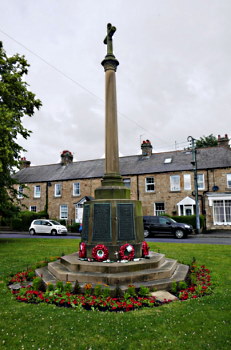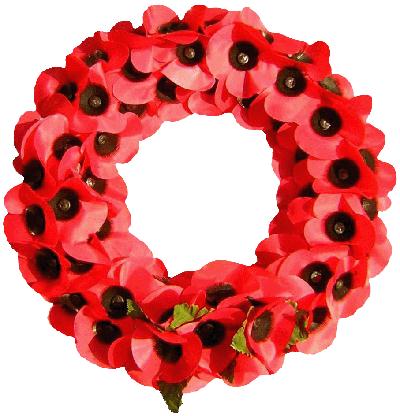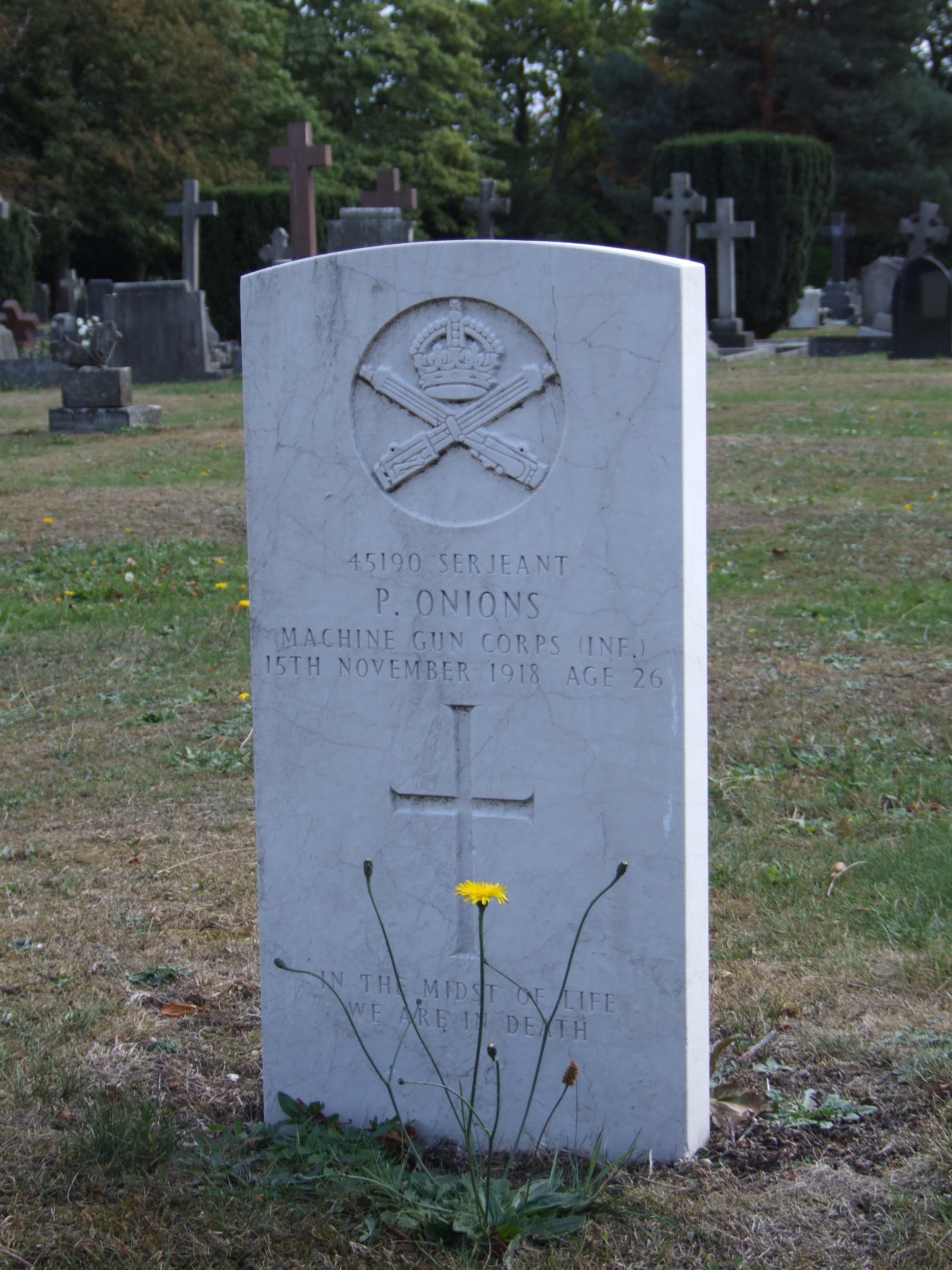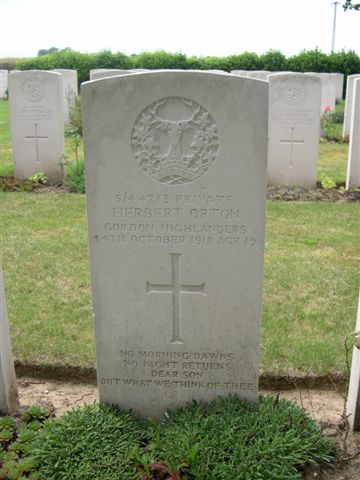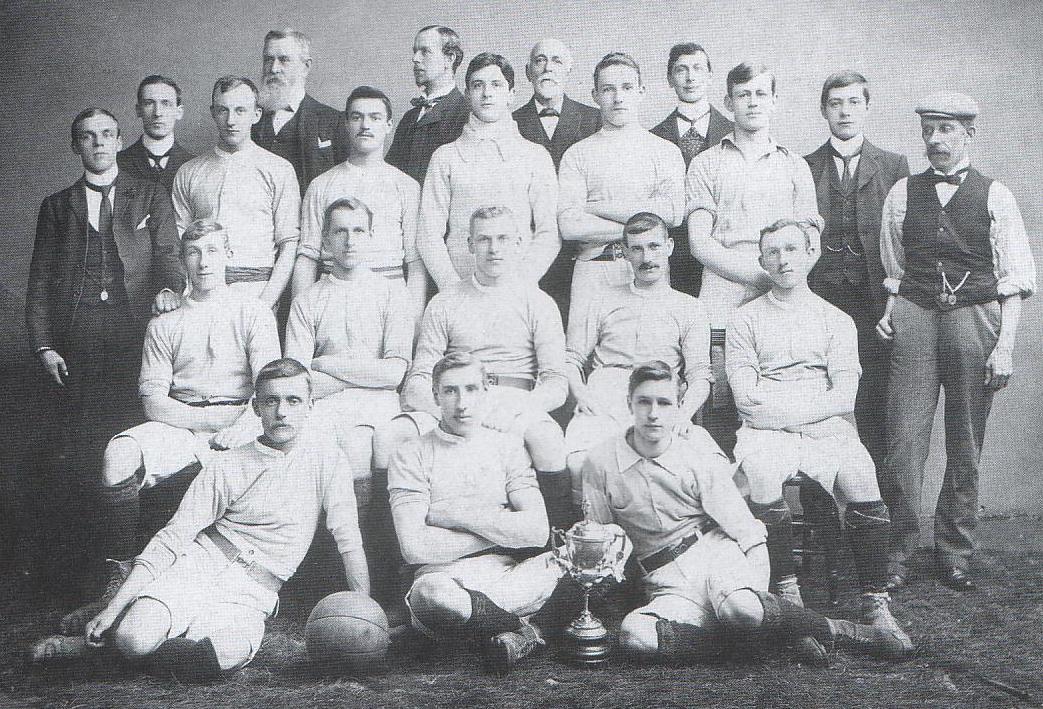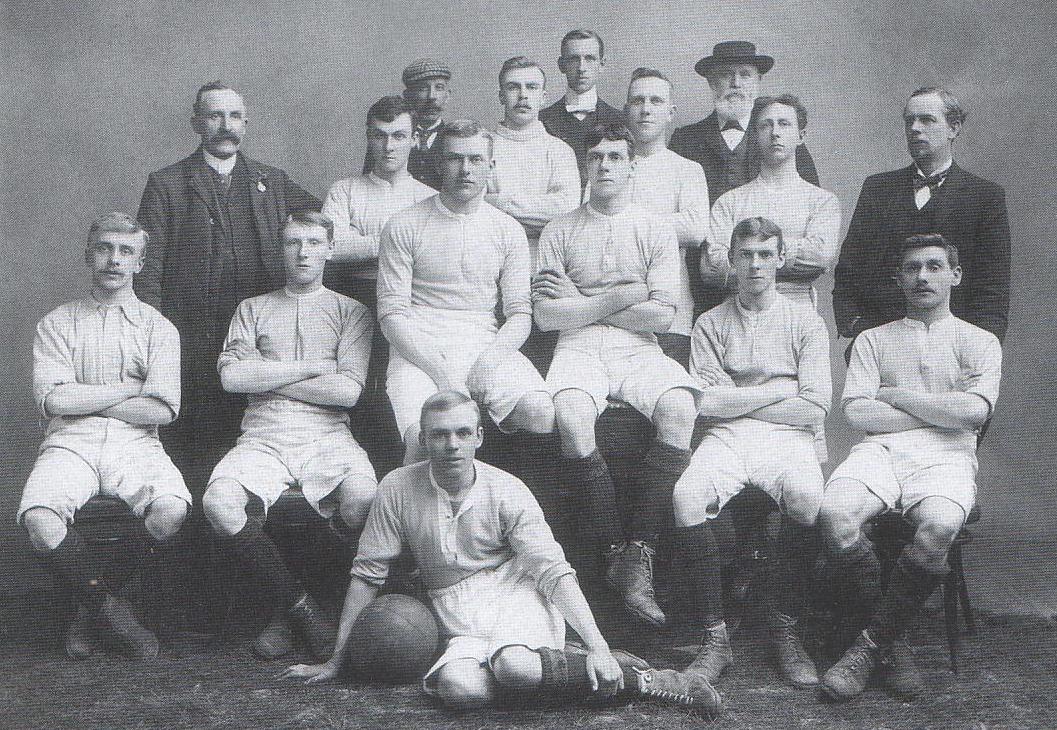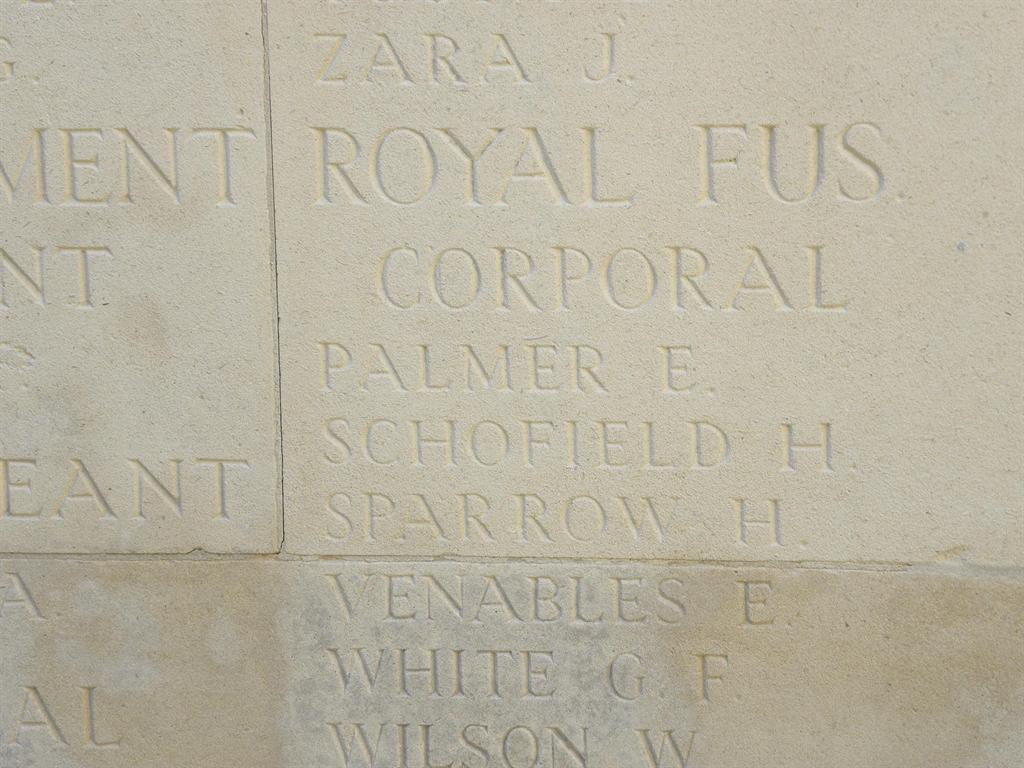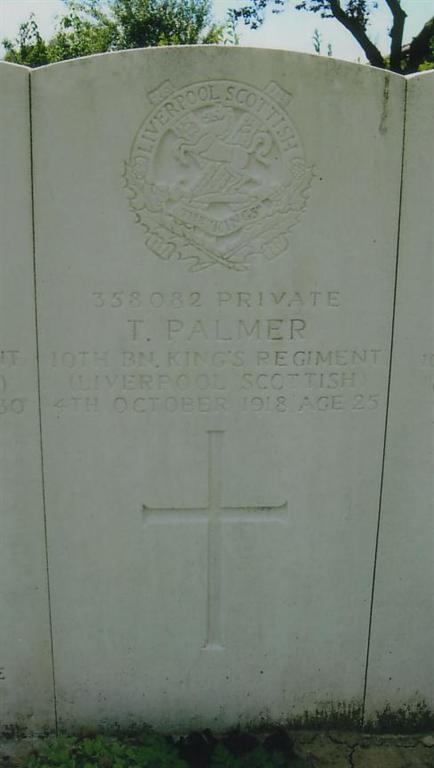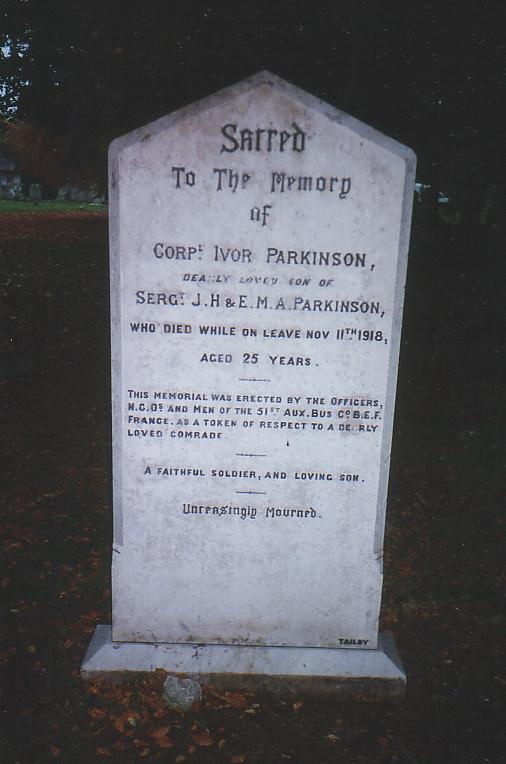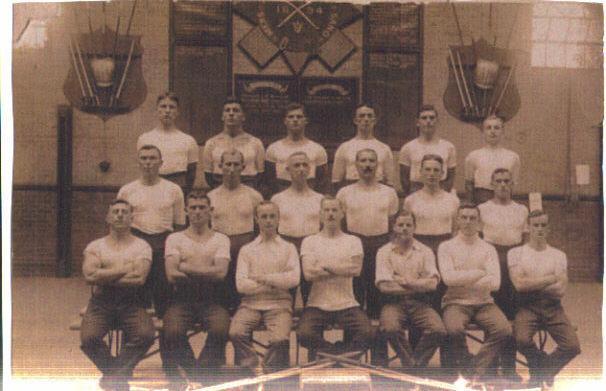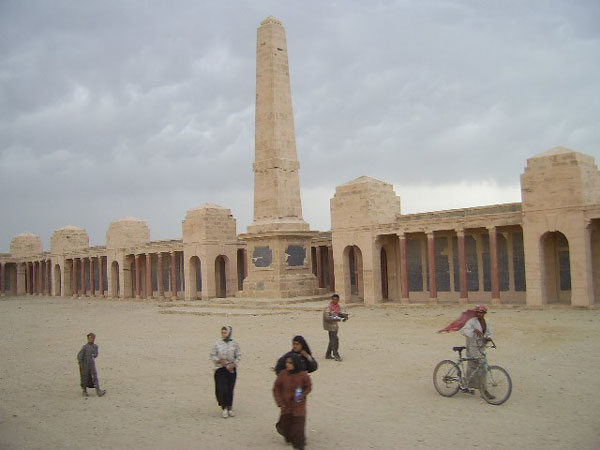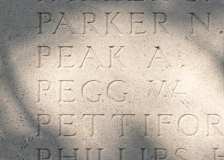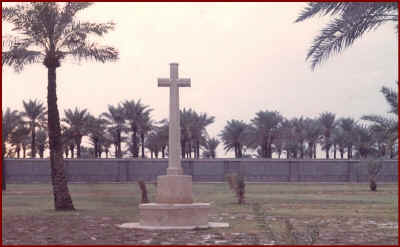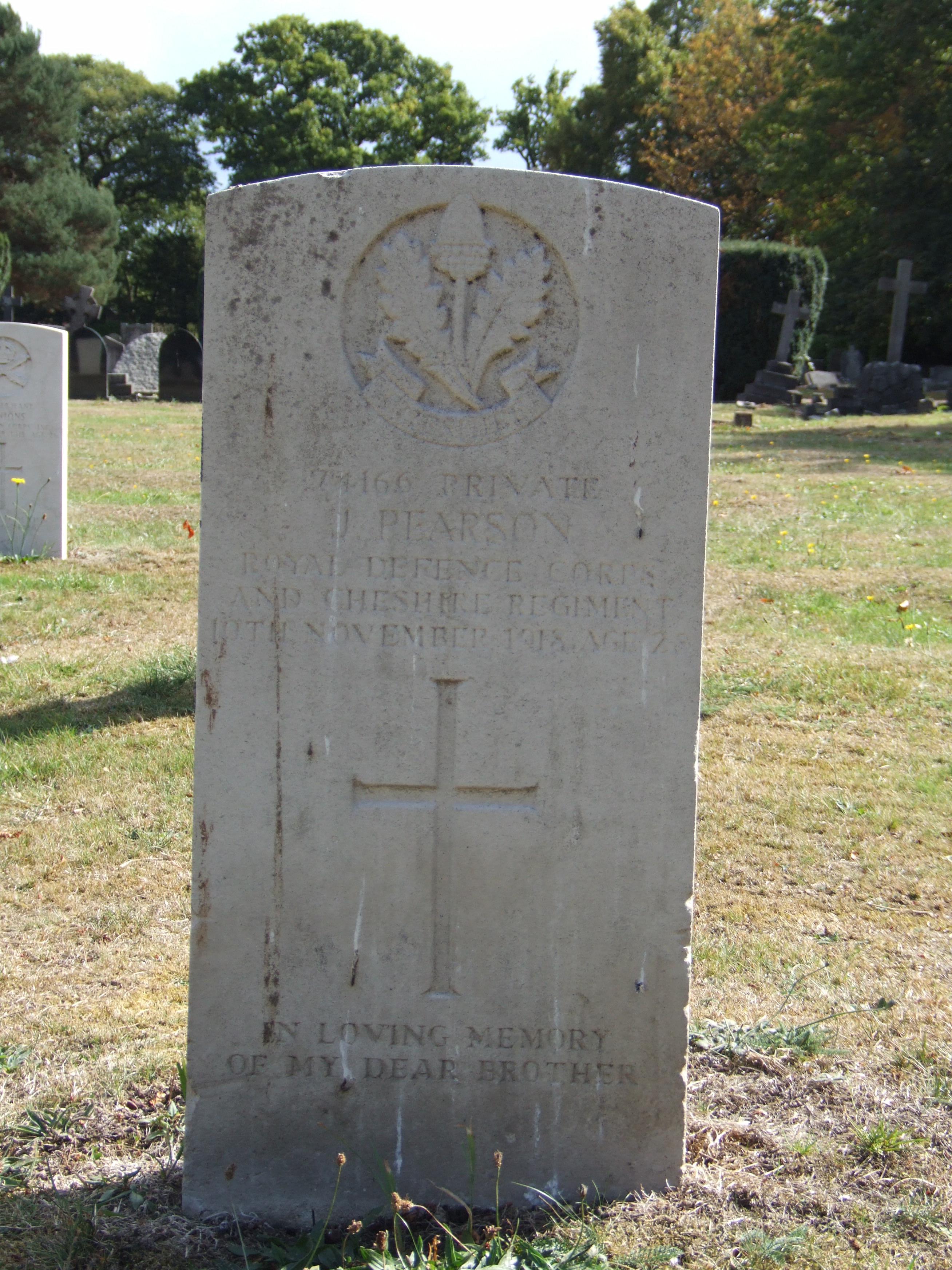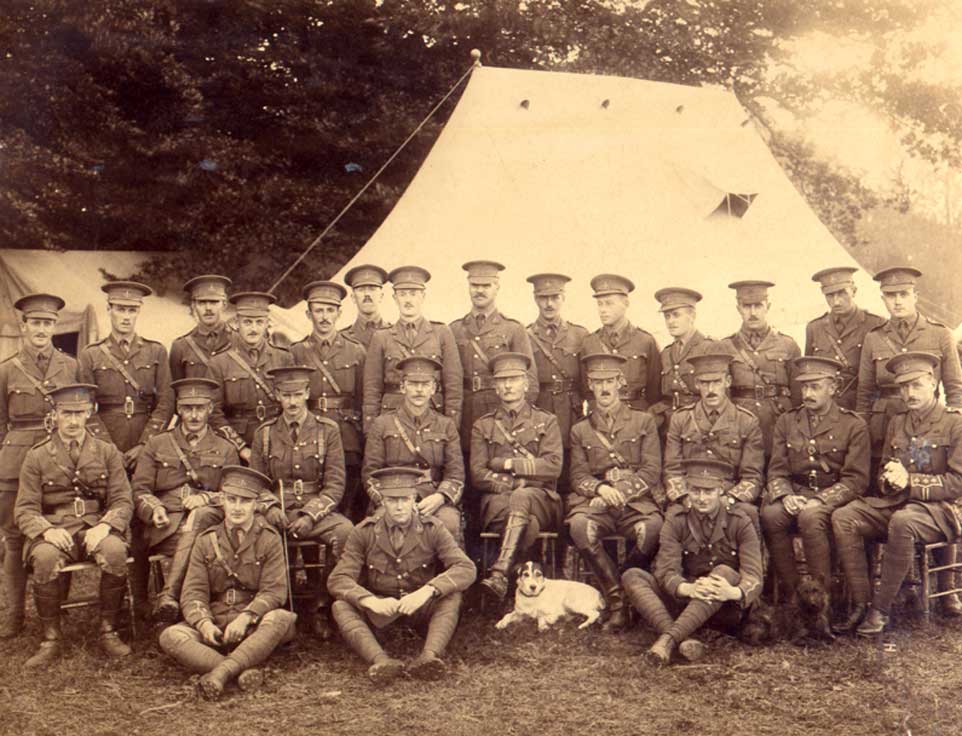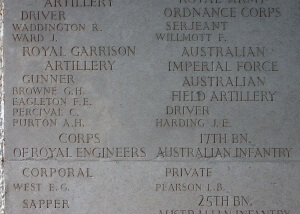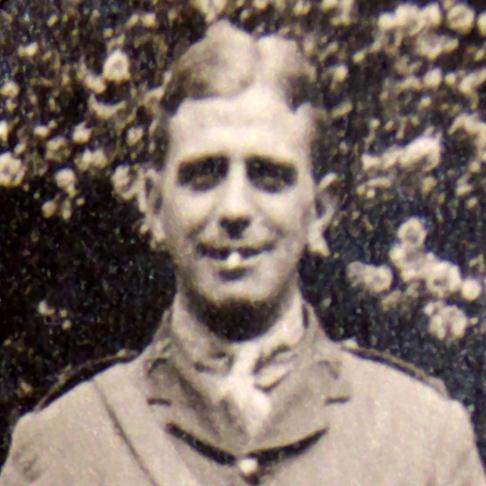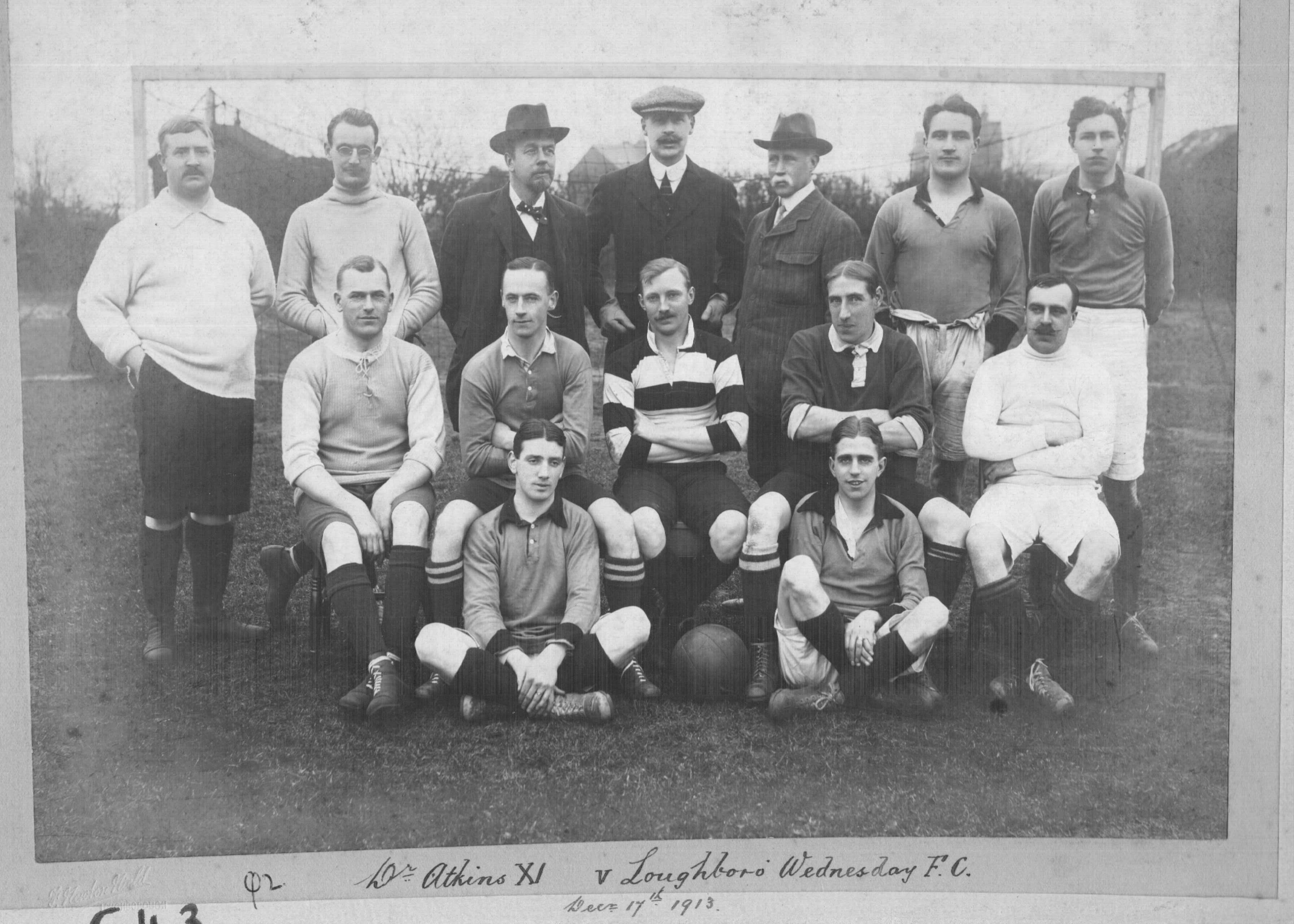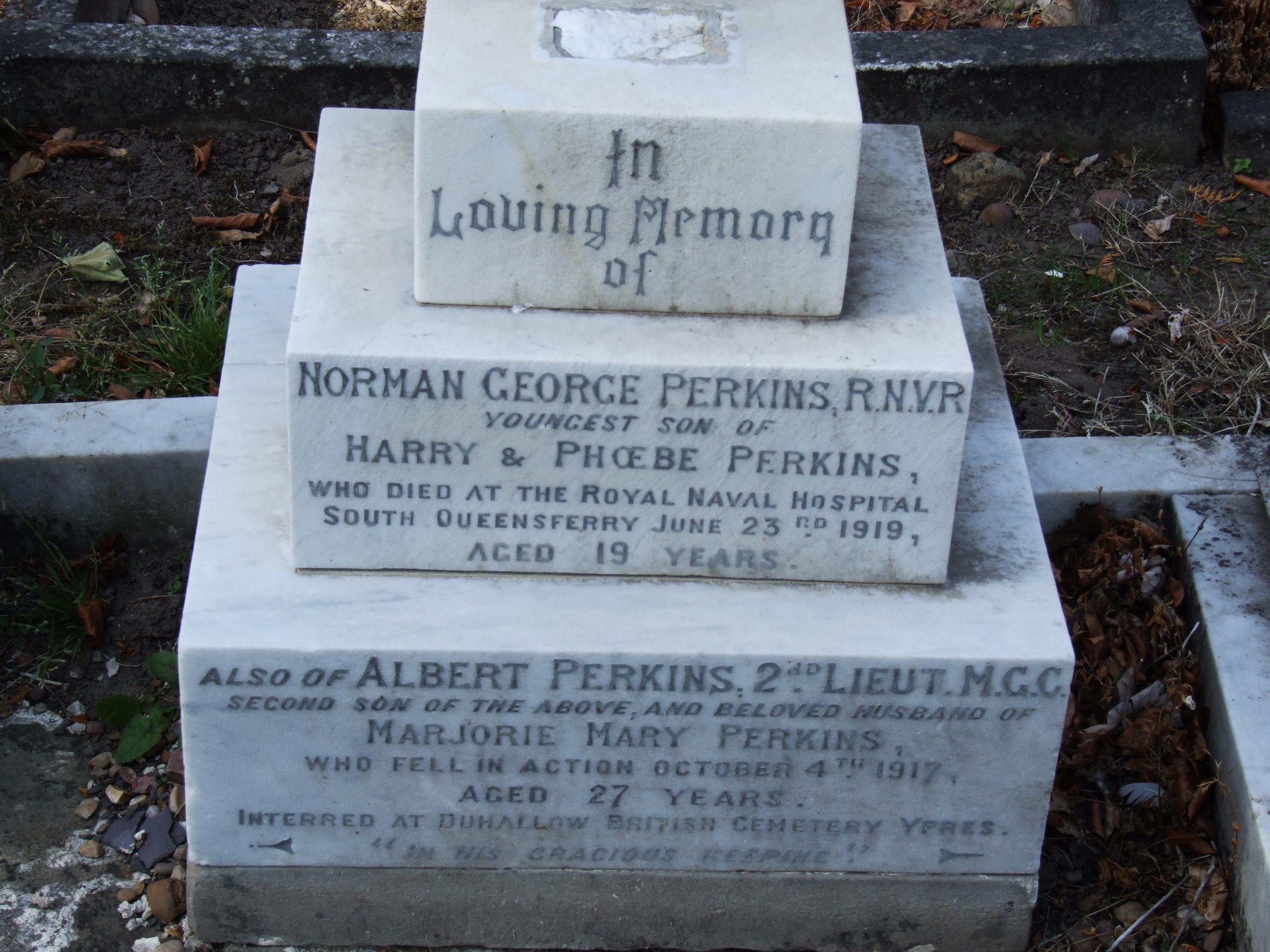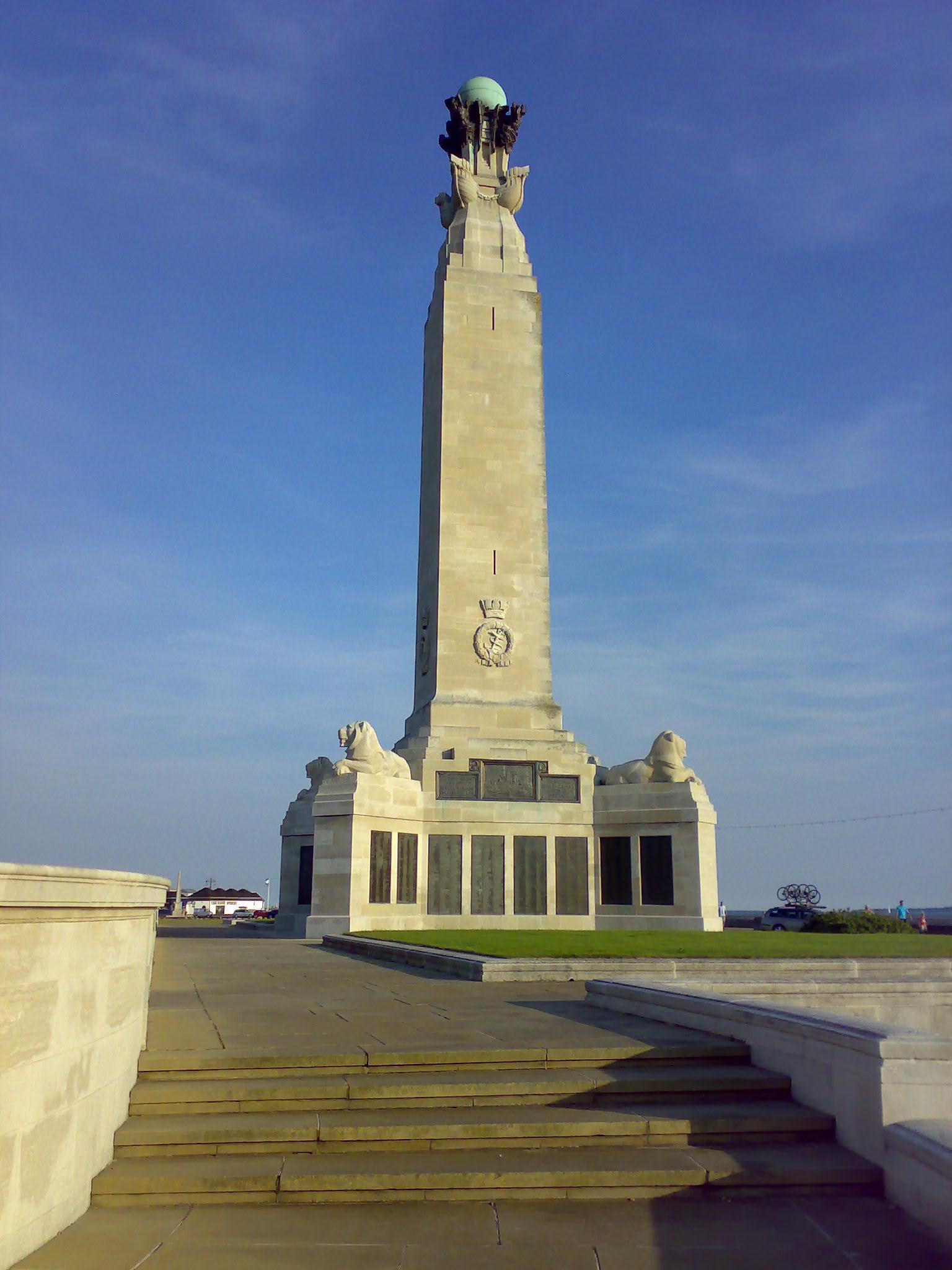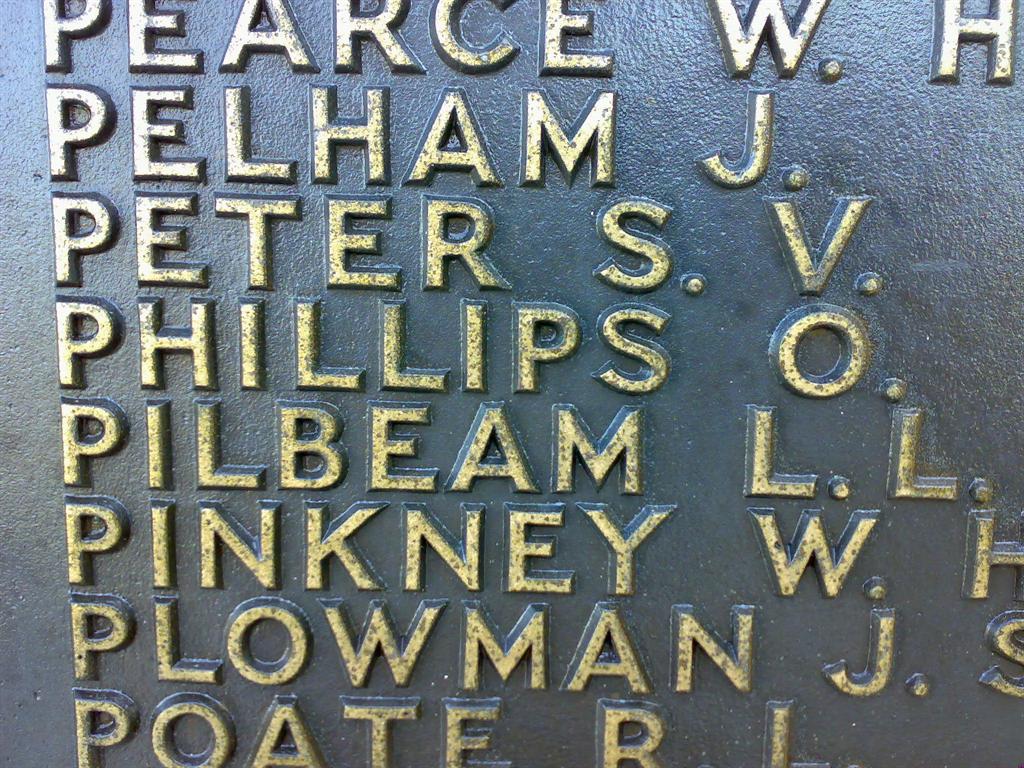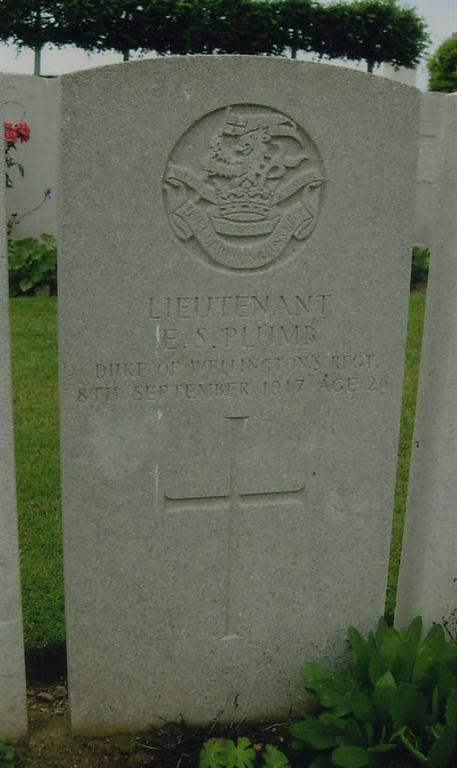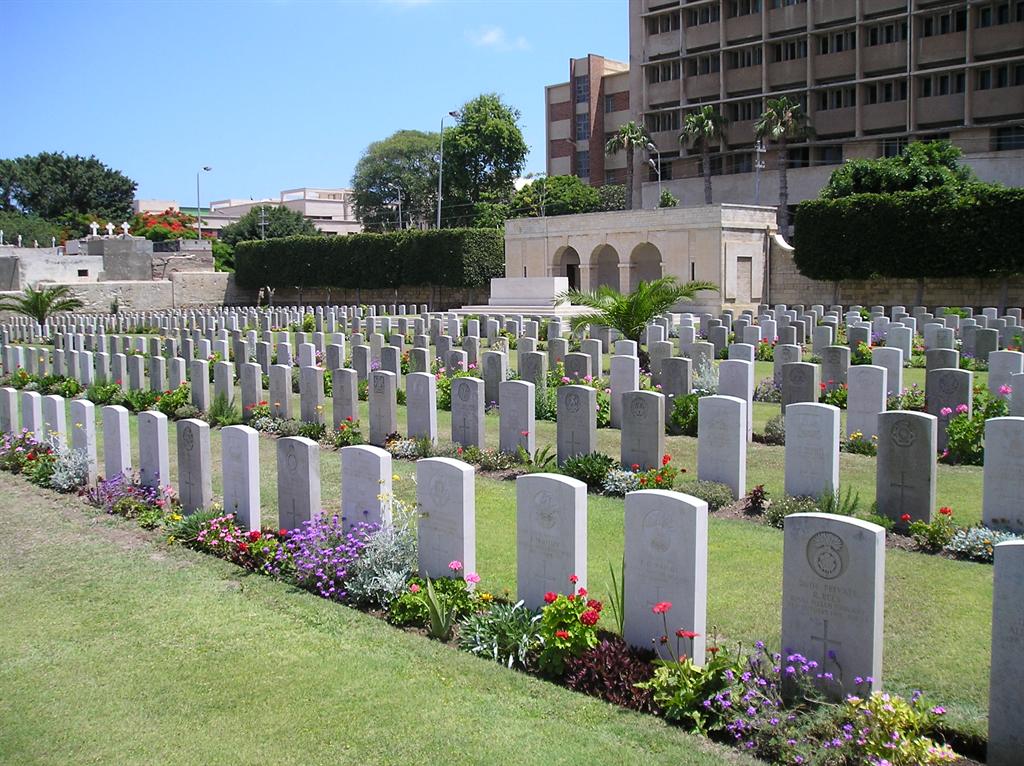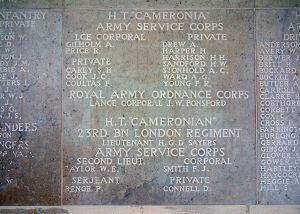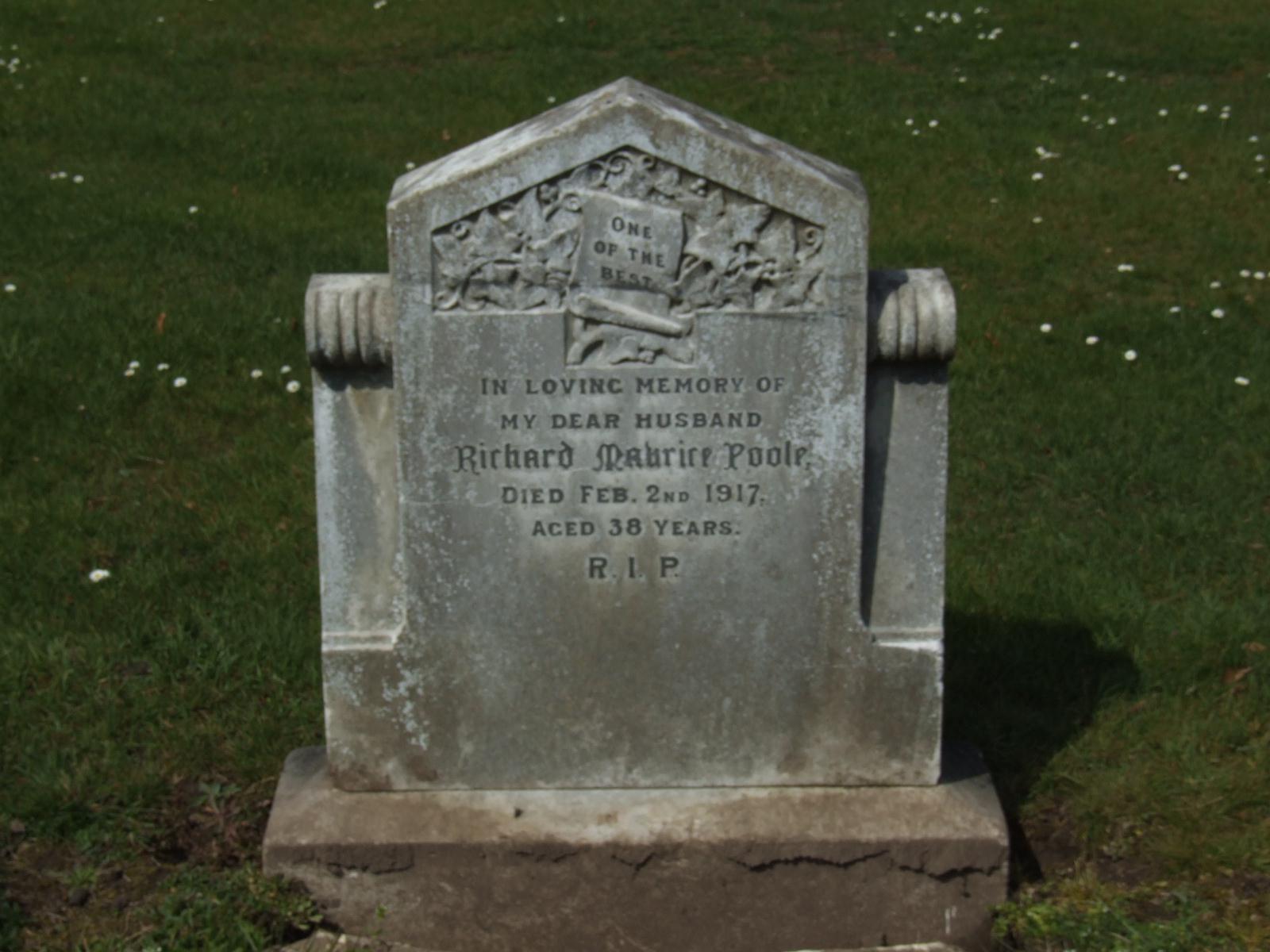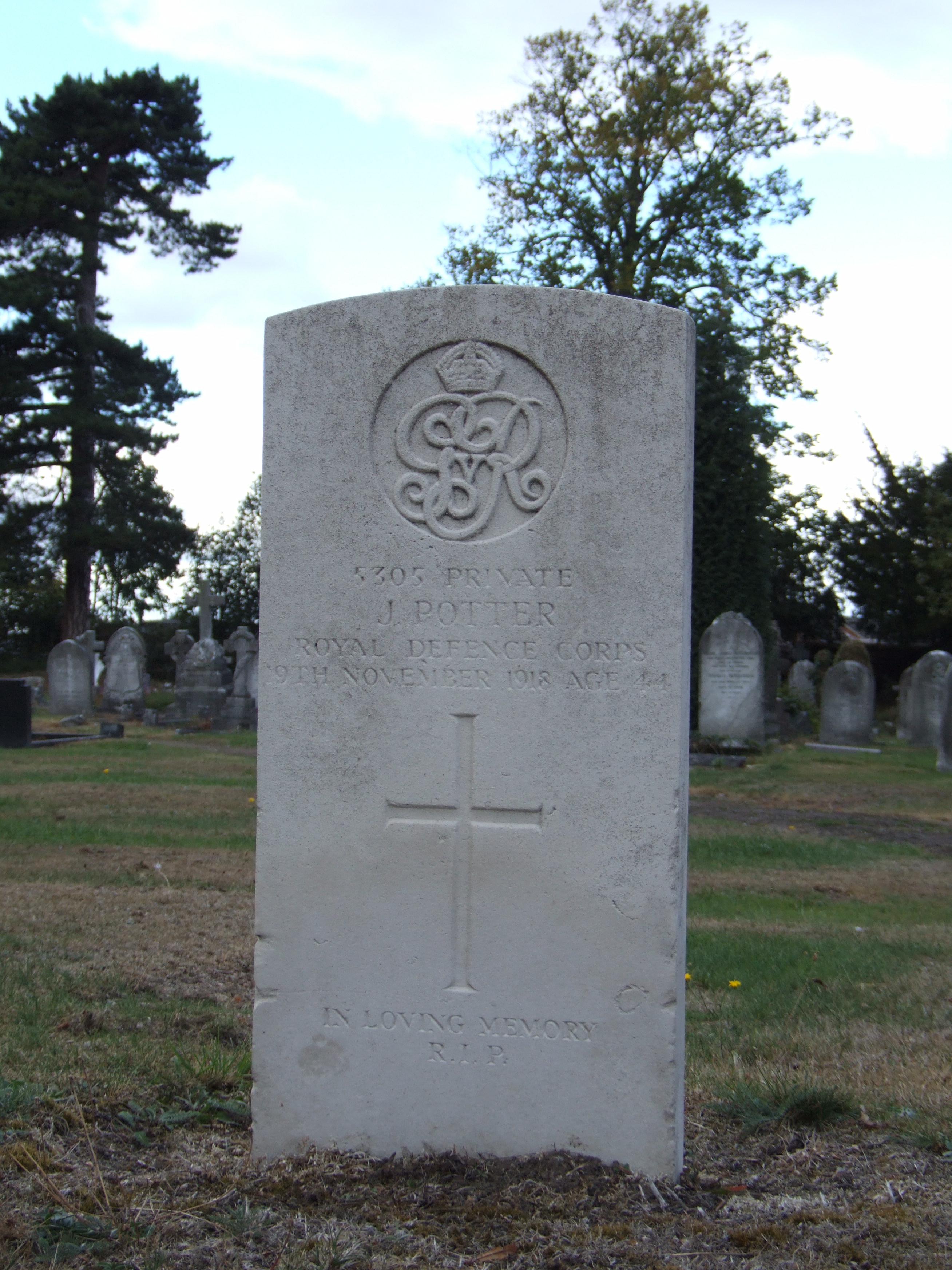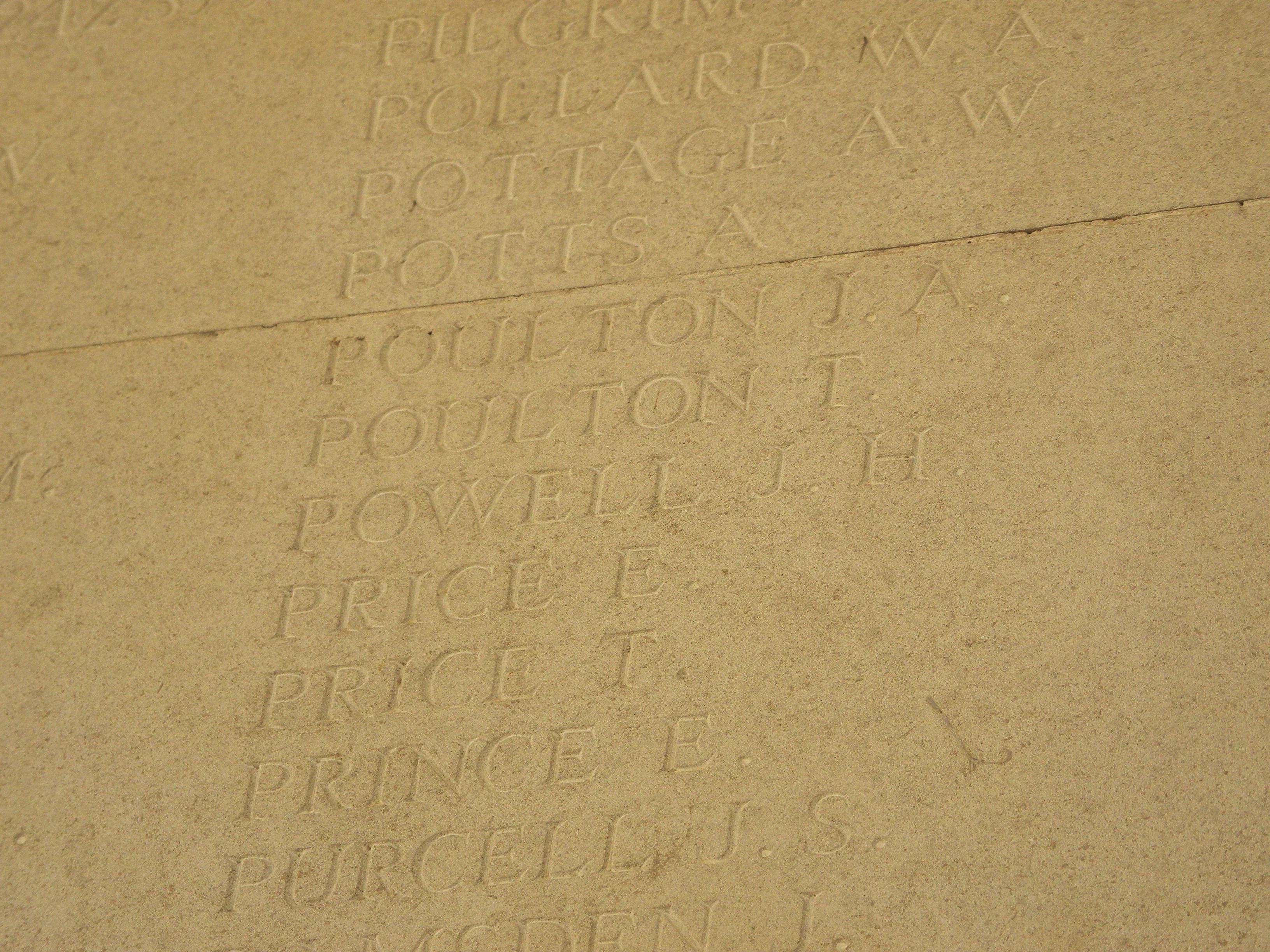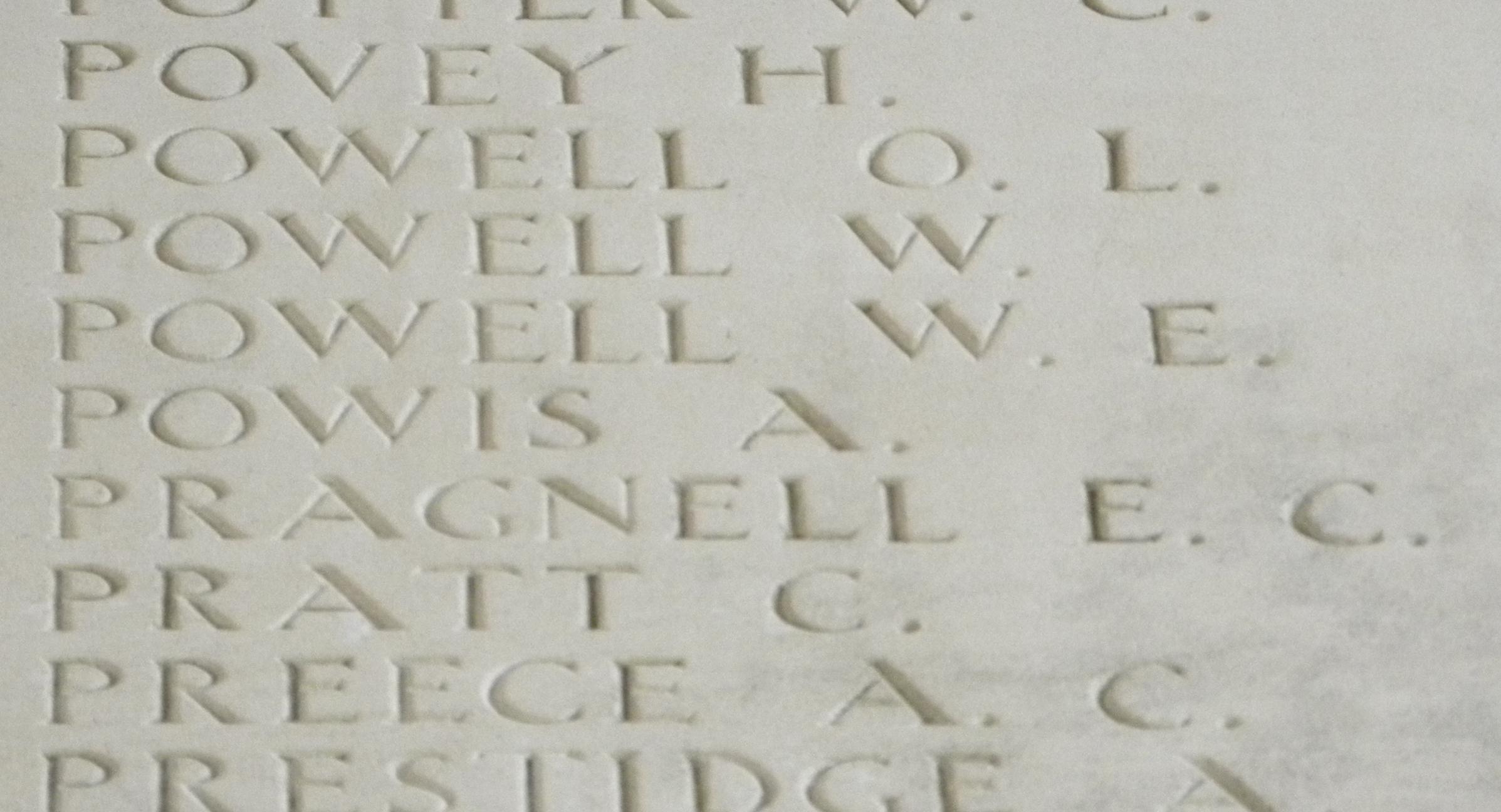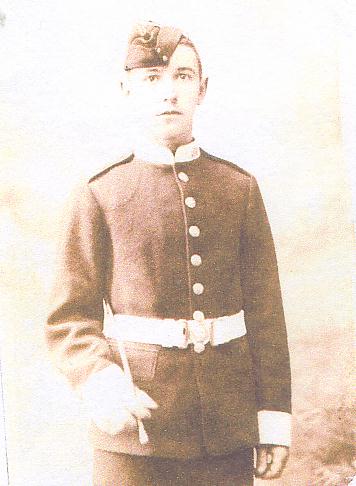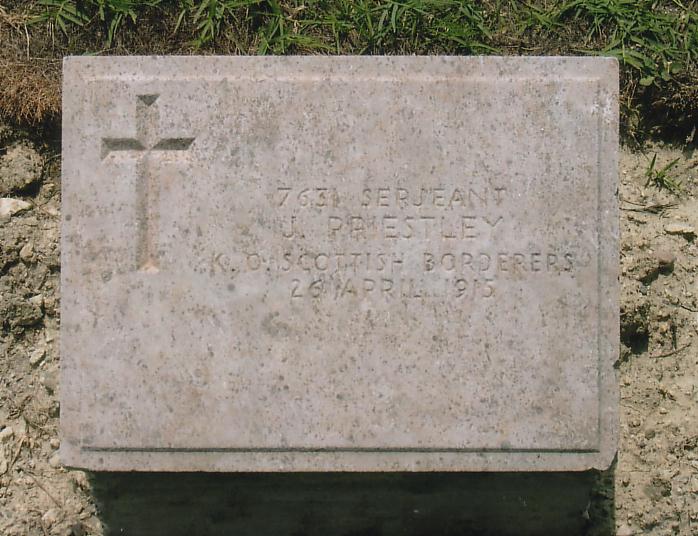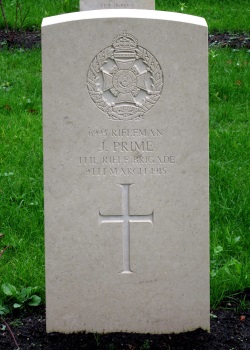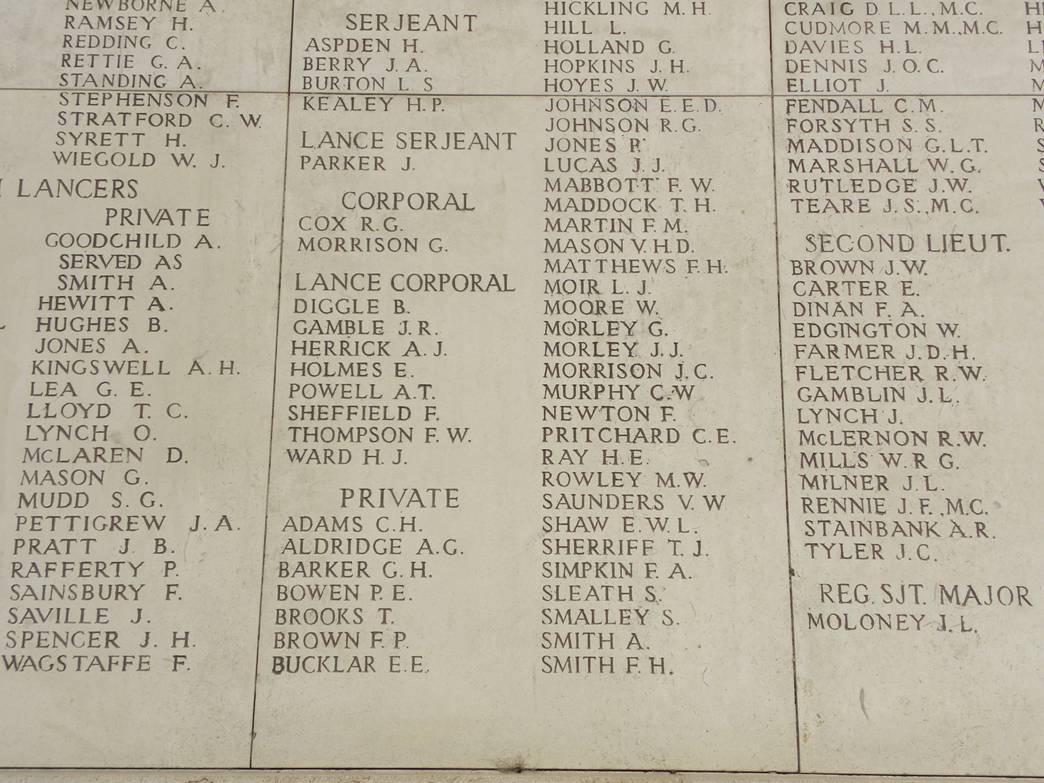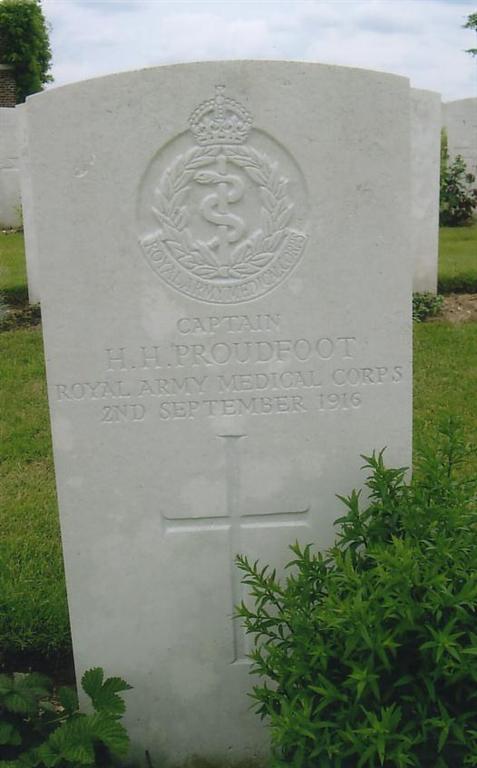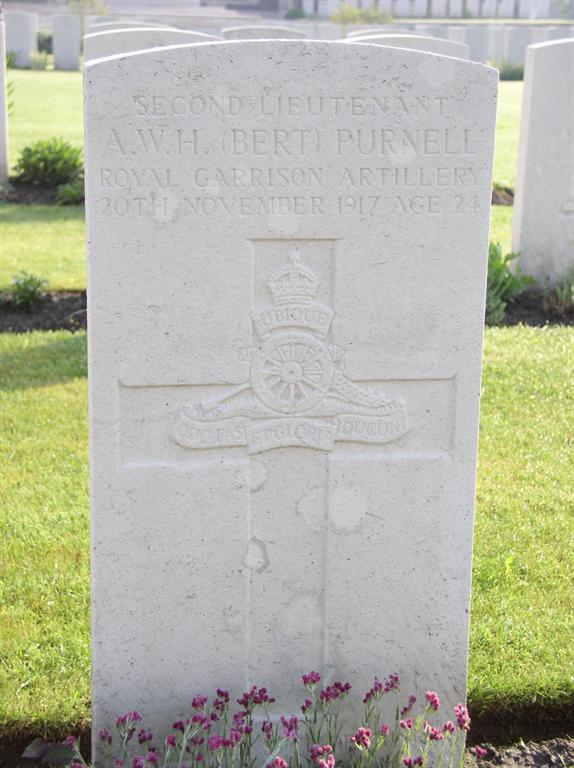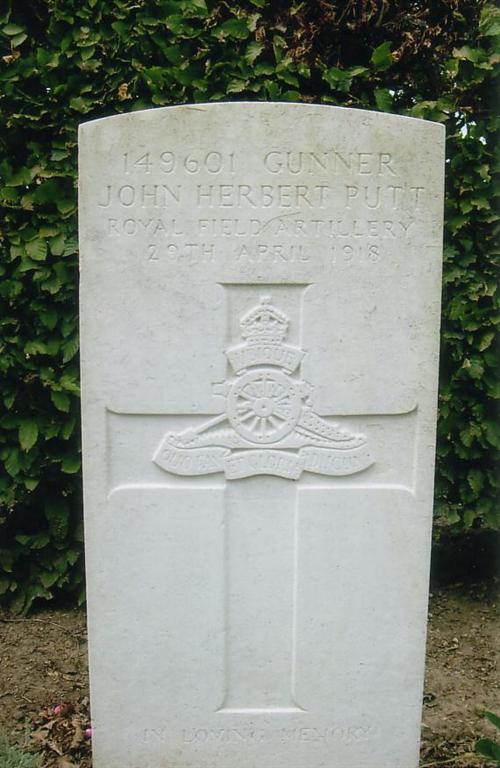|
Captain Thomas Alfred Oliver
|
|
Royal Flying Corps. 1 & 29 Squadrons.
Previously 1/6th Bn, Royal Welch Fusiliers
Killed in Action 14th August 1917, Aged 24.
Commemorated Arras Flying Service Memorial.
|
|
Thomas Alfred Oliver, known as 'Tom', was born in Loughborough on 10th April 1893. He was the only son of Alfred Samuel Oliver and his wife Annie (née Kempson) who were married on 13th February 1893 at Emmanuel Church, Loughborough. Tom's father was one of the last Victorian and Edwardian naturalistic painters and exhibited seven paintings at the Royal Academy in London. He was also a member of the Nottingham Society of Artists and examples of his work remain in a number of art galleries throughout the UK.
Tom's parents appear to have moved to Ruddington, Nottinghamshire, from 1895 until 1903 as that is where Tom's sisters Gladys and Phyllis were born. The family subsequently moved to Capel Curig, Caernarvonshire, North Wales, and young Tom, an artist like his father, joined his father at the family property called 'The Studio'.
Tom enlisted at Caernarvon on 25th August 1914 and joined the 1/6th (Caernarvonshire and Anglesey) Battalion of the Royal Welch Fusiliers as Private 1480. Three months later, however, he was successfully nominated for a temporary commission as a 2nd Lieutenant on the General List, and he subsequently transferred to the Royal Flying Corps. On 17th October 1915 Tom gained his certificate as a Royal Aero Club Aviator, having taken his test on a Maurice Farman Biplane from Shoreham on Sea Military School, Sussex.
Simon Birch, a contributor to the Great War Forum, has provided further details about Tom as follows:
'Oliver was posted to No. 1 Squadron in France in the New Year [1916] and on 20 March, in a raid against the German floatplane base at Zeebrugge, he fought his first combat in a Morane LA (5119), with 2nd Lieutenant D.A. Carruthers aboard, against an Aviatik over Cassel-Poperinghe. Thereafter, he was more or less constantly in action until being rested in January 1917, a period that witnessed at least two successful encounters. The first of these occurred on 3 July 1916 in a dogfight over Houthulst Wood, when Oliver was piloting a Morane BB (5170): 'Lieutenant T. A. Oliver and Sergeant Mumford, in a Morane biplane of No. 1 Squadron, encountered five hostile aeroplanes, driving off four with little trouble. The fifth showed more fight, but was last seen diving vertically with the engine full on, and is believed to have been destroyed' (R.F.C. Communiques 1915-16).
'And the second on 6 August 1916: 'Lieutenant T. A. Oliver in a Nieuport Scout of No. 1 Squadron attacked a hostile machine over Kemmel which in appearance was very much like a Martinsyde. The Nieuport closed to within 150 feet of the hostile machine and fired two drums under the tail. The engine of the hostile machine was seen to stop, and it dived steeply. Five drums in all were fired at the German, whose machine was followed down to 3,000 feet with its propeller stopped. It is believed that the observer of this machine was also hit' (R.F.C. Communiques 1915-16).
'Following his rest from operations in the first half of 1917, Oliver was posted to No. 29 Squadron as a Flight Commander on 10 August. The very next day he added two more enemy aircraft to his tally in an engagement fought over Roulers, and the day after that yet another over Polinchove. But while on patrol on the morning of 14 August, Oliver, piloting a Nieuport 17 (B1557), was shot down and killed by Oberleutnant Wiegand of Jasta 10.'
Tom was aged 24 when he died and his body was never found. His father subsequently kept an aircraft propeller in his studio as a memorial. Tom is commemorated on the Royal Flying Corps Flying Services Memorial, Faubourg d'Amiens Cemetery, Arras. He is also remembered on the Capel Curig war memorial and on the war memorial at St. Peter's Church, Ruddington.
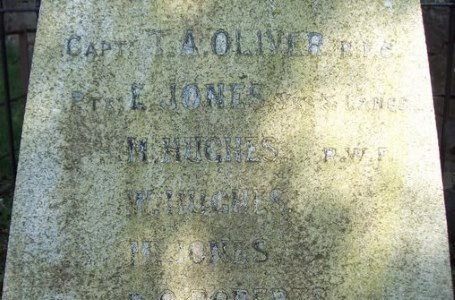 Capel Curig War
Memorial (right)
Capel Curig War
Memorial (right)
and close-up (above)
The Oliver family tombstone in St. Julitta's churchyard, Capel Curig, takes the form of a boulder to which are attached cast metal plates with details of the deceased. The tombstone includes a memorial inscription to 'Tom Oliver RAF'.
 The Oliver family
tombstone
The Oliver family
tombstone
 War memorial, St.
Peter's
War memorial, St.
Peter's
Church, Ruddington
|
|
The Nieuport 17 was a French biplane fighter aircraft of World War I.
|
|
He has no known grave and is commemorated on the Arras Memorial, France.
|
|
Sergeant 45109 Percy Onion(s)
|
|
42nd Bn, Machine Gun Corps.
Formerly 2037 Leicestershire Regiment.
Died of Influenza and Pneumonia London 15th Nov. 1918, Aged 26.
Buried Loughborough Cemetery, 42-313.
|
Percy Onion was born in Loughborough in 1892 and baptised on 19th June 1892 at All Saints Church, Loughborough. He was the son of Isaac Onion and his wife Mary Elizabeth (née Oliver) who were married at All Saints Church, Loughborough, on Christmas Eve 1891. The family surname of 'Onion' was sometimes misspelt on official documents as 'Onions' with only occasional correction.
Percy's father was a hosiery needle maker in the family hosiery manufacturing business. The Onion family was living at 50 Regent Street, Loughborough, when Percy was born, but by 1901 had moved to 78 Ashby Road. Between 1901 and 1911 they moved again to 27 Regent Street.
Percy had one younger sister Elsie. In 1911 Percy, aged 18, was working for the family firm as a hosiery trimmer, but by 1914 he had become a clerk for the Brush Electrical Engineering Company and had also joined the Territorials in the Leicestershire Regiment.
Percy enlisted for full-time service with the Army on 4th August 1914 and was posted to the 2/5th (Territorial) Battalion of the Leicestershire Regiment as Private 2037.
The 2/5th Battalion had its HQ in Loughborough as part of the Lincoln and Leicester Brigade, North Midland Division and was mobilised in September 1914. In January 1915 the battalion moved to Luton being billeted in private homes, in February and March they had a spell at Epping digging practice trenches. On 15th February at Luton Percy was reprimanded for neglect of duty while an Orderly with A Coy.
In July the battalion moved to the St Albans area, under canvas at Briton Camp for training and route marches. In August 1915, the Brigade was retitled 177th Brigade, 59th Division (2nd North Midland) and in October they were moved back to billets in Harpenden. Throughout 1915 some members of the 2/5th Leicesters also provided guards for the prisoner of war camp at Donington Hall.
On 10th July 1915 Percy married Florence Edith Twigg by Licence at St. Peter's Church, Loughborough.
On 28th November 1915, while at Belton Park, Grantham, Percy received a severe reprimand and forfeited a day's pay for being absent for 20 hours without permission. On 14th July 1916, while at Scotton Camp, Catterick, Percy was again reprimanded, this time for neglect of duty and failing to report the absence of a man from his fatigue party.
On 27th July 1916 Percy reenlisted in the Machine Gun Corps, having been discharged from the Territorial arm of the Leicestershire Regiment at Scotton Camp. His Lieutenant Colonel wrote of Percy: 'His behaviour has been good, although once or twice he has failed in the execution of his duty. I feel sure he will now endeavour to give satisfaction'. On his transfer Percy took with him the rank of Corporal accorded him in March 1916 and became Corporal 45109 in the Machine Gun Corps.
Percy then trained with the Machine Gun Corps at Grantham and was promoted to the rank of Sergeant on 19th April 1917 at Clipstone Camp, near Mansfield, Nottinghamshire.
Percy was posted abroad on 14th May 1917, crossed the Channel from Folkestone to Boulogne and went to the Base Depot at Camiers. He then joined the 127th Company of the Machine Gun Corps in the field on 18th June. At the time the company was undergoing training at Beauquesne. When training ended on 10th July the company marched to Candas and entrained for Bailleul. As the company detrained at Bailleul the enemy dropped bombs near the station, causing some casualties. Training then continued at a camp near Bailleul until 10th August.
Percy, however, was taken ill on 1st August with a fever, and was sent from a field ambulance to a casualty clearing station. He was not well enough to rejoin his company until 21st September. The company was again in training, this time at Berquin, but on the 28th September they moved up to the front line east of Messines and remained there, firing daily, until 8th October. After a two-day break at Neuve Eglise the company marched via Thieushook to Ridge Wood, into Divisional reserve.
On 17th October they returned for six days to the front line west of Polderhoek Chateau, following which they moved back to Thieushook where training continued until 11th November. On 12th November the company entrained at Caestre for Wizernes and marched to Westbecourt for further training. On 30th November they entrained at Wizernes for Brandhoek.
During December the company completed two trench tours in the front line of the Passchendaele sector, with breaks at St. Jean and Brandhoek. On Christmas Day they entrained at Brandhoek for Wizernes and marched to Tatinghem for six days training.
On New Year's Day 1918 the company entrained at St. Omer for Suzanne for three further weeks training. While they were at Suzanne Percy was admitted to No. 8 Canadian Field Ambulance with suspected appendicitis, but it must have been a false alarm as he was discharged to his unit the following day. On 22nd January the company began a move over seven days via Vrely, Saulchoy-sur-Davenscourt, and Beines to Montescourt. On 28th January they went into the trenches east of St. Quentin. Freom here they were in action firing throughout February.
On 16th March, while resting and training at Fouquières, the 127th Machine Gun Company was subject to Army reorganisation and became C Coy of the 42nd Battalion of the Machine Gun Corps. From 18th March to 1st April Percy was granted leave to England. As he rejoined his battalion at St. Amand it went into the trenches with the gun positions covering the Vallée-aux-Corbeaux.
On 5th April there was heavy fighting around Bucquoy and B Coy's guns were destroyed in an enemy attack. On 8th April the battalion was relieved and went to Authie to clean up, overhaul the guns and refit. On 14th April they moved to the Bois de Warnimont, near Couin. After selecting the gun positions on 17th April they moved up to the front and were firing every day until the end of the month.
On 30th April Percy was severely wounded in action by shell fire in the right leg, which smashed the bone just above the ankle. He was taken to a field hospital and on 8th May transferred to No. 12 General Hospital at Rouen for an operation. He was then brought back to Tooting Military Hospital, London SW17. He wrote to his wife saying 'I am very lucky to have my life'. His Commanding Officer also wrote saying that the wound was very nasty and painful, and he was sorry to lose Sergt. Onion who was always so very cheerful in or out of the line and under all sorts of circumstances.
Percy was still in Tooting Hospital in November 1914 when he contracted influenza which led to pneumonia and he died, aged 26, on 15th November 1918. He was buried on 20th November in Loughborough Cemetery Grave 42-313.
He is remembered on the memorial in the former St. Peter's Church building, Loughborough, and on the Carillon.
Percy's widow returned to her family in Shakerstone for the birth of Percy's only son Richard in January 1919.
|
|
|
|
Colour Sergeant 8559 Colin Herbert Orton
|
|
1st Bn, Northumberland Fusiliers.
Killed in Action 13th October 1914, Aged 31.
Buried Vieille-Chapelle New Cemetery, VI. D 8
|
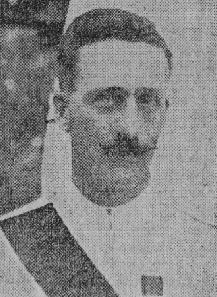
|
Colin Herbert Orton was born in Loughborough in 1883 and baptised on 17th June 1883 at All Saints Church, Loughborough. He was the only surviving child of Alfred William Orton, a bricklayer, and his first wife Mary Jane (née Miller) who were married at All Saints Church, Loughborough, on 3rd April 1881. Alfred and Mary Jane had two other children Maggie and Bertie who died in infancy. Mary Jane died, aged 30, in 1886.
Colin's father Alfred was remarried on 7th July 1889 at All Saints Church to Edith Jane Shorter. Alfred and Edith had thirteen children, of whom seven survived. Colin had two step-brothers Frederick and Everard and five step-sisters Alice, Edith, Elizabeth, Doris and Ivy. Six others Wilfred, Esther, Beatrice and Lilian (twins), Florence and Neville died young.
When Colin was born the family lived at 5 John Street, Loughborough, but after his father married Edith they moved to 38 King Street. In 1901 they were living at 41 Empress Road and by 1911 had moved to 11 Pinfold Gate.
In 1901 Colin, aged 17, was an apprentice bricklayer. For some time he was a drummer at Holy Trinity Church Lads Brigade.
In late 1901 Colin applied to join the Army but was initially rejected because of 'Defective teeth'. He reapplied on 3rd April 1902 and the Leicestershire Regiment took him on as Private 8196. After 49 days drill he was transferred to the Northumberland Fusiliers as Private 8359. Between 1903 and 1910 he served in Peshawar, India, and on the North West Frontier with the 1st battalion of the Northumberland Fusiliers. In 1911 he was stationed in Rawalpindi, in the Punjab and had achieved the rank of Sergeant, later progressing to the rank of Colour Sergeant.
When war broke out the 1st Battalion was at Cambridge Barracks, Portsmouth. On 13th August the battalion left by train for Southampton and embarked on the SS Norman. They arrived at Le Havre on the following day and marched to a rest camp north-east of Le Havre. On 1th August they entrained at Le Havre for Landrecies, where they were billeted in barracks. On 17th August they marched to Noyelles and were billeted in barns and farmhouses. On 21st and 22nd August they marched via Longville and Cuesmes to Blaregnies, where they took up an outpost position on the Mons-Condé Canal.
The Battle of Mons took place on 23rd August. The battalion was heavily shelled by the enemy and was ordered to retire to Frameries but here they were again attacked by German forces. On 24th August the battalion retired further to Bermeries, having incurred 56 casualties. On 25th August the battalion marched to Inchy in the drenching rain and entrenched but then again came under enemy attack.
Between 26th August and 4th September the retreat continued via Audencourt, Hargicourt, Vermand, Crisolles, Ressons-le-Long, Vauciennes, Bouillancy, Penchard, and Villemareuil to Châtres. On 6th September the retirement ended. On 9th September the battalion crossed the River Marne.
The remainder of September 1914 was disastrous for the battalion, during which it incurred 168 casualties. On 10th they met the enemy near Veuilly-la-Poterie. On 11th they moved to the outpost line near Grand-Rozoy and on 12th to Brenelle. On 13th September, at the start of the 1st Battle of the Aisne, they took up a position to protect troops advancing from Braine. From 14th-21st September they were in an outpost position on the road to Rougemaison north of Vailly and then defending strongpoints in a wood beset by enemy snipers. Relieved on 22nd they moved to Courcelles for four days before returning to Vailly and constant enemy gunfire until the end of the month.
On 1st October the battalion left Vailly and marched for six days via Augy, Cramouille, Troësnes, Crépy, and Moru to Pont St. Maxence. From there they took a train to Abbeville and marched to billets at Port le Grand. On 9th and 10th October they marched via Sachin to Robecq and were billeted behind the River Lys. On 12th October they moved to Vieille Chapelle where part of the battalion was in action before all companies were withdrawn to Paradis.
On 13th October when the battalion was in action at Zelobes, at the start of the Battle of La Bassée, Colin, aged 31, was killed in action. He was buried in Vieille-Chapelle New Cemetery, Grave VI. D 8.
|
|
|
|
Private S/44213 Herbert Orton
|
|
6th/7th Bn, Gordon Highlanders.
Previously 57272 The King's (Liverpool Regiment)
Killed in Action 14th October 1918, Aged 19.
Buried Auberchicourt British Cemetery, II. C. 4.
|
Herbert Orton was born on 5th February 1899 in Wymeswold, Leicestershire, and baptised on 19th March 1899 at St. Mary's Church, Wymeswold. He was the son of Herbert Orton and his wife Eliza (née Tuckwood) who were married on 8th December 1896 at St. Andrew's Church, Prestwold, Leicestershire. In 1901 Herbert Junior's father was a butcher and also publican of The Bull's Head, Wymeswold. By 1908 his father had given up the pub, but remained a butcher and the family was living at 71 Ratcliffe Road, Loughborough. Herbert Junior had two brothers Thomas and Albert and two sisters Sybil and Daisy.
Herbert Junior enlisted in 1917 as soon as he was eighteen. As his service papers have not survived his exact date of enlistment and when he was sent abroad are unknown. He was initially posted to the 1/10th (Scottish) Battalion of The King's (Liverpool Regiment) as Private 57272 but was later transferred to the 1/6th (Banff and Donside) Battalion of the Gordon Highlanders as Private 44213. The date of his transfer to the Gordon Highlanders is similarly unknown but is likely to have been at some point in 1918. The 1/6th Gordon Highlanders received drafts of reinforcements at regular intervals throughout 1918.
In January 1918 the 1/6th Gordon Highlanders were firstly providing working parties at Lebucquière, Pas de Calais, and then began training at Achiet-le-Petit. Training continued until 10th February and on 12th February the battalion went into the line at Lebucquière to clear the trenches, make dugouts and complete wiring. On 20th February they moved to Lindop Camp, Frémicourt to work on a cable trench for the Divisional Signals.
During the first three weeks of March the battalion completed two trench tours at Frémicourt during which they wired Boursies and dug a new Reserve line. They also spent six days in Reserve in huts at O'Shea Camp.
On 21st March, the opening day of the German Spring Offensive, there was an intense enemy bombardment, including gas shells, of the British lines. Between 22nd and 24th March the battalion held lines on the north side of the Bapaume-Cambrai road covering Reugny, along the railway north of Frémicourt facing Reugnatre, facing Lebucquière and in front of Beaulencourt. On 25th the battalion was ordered to withdraw to Colincamps and on the following day, after making outposts south of Sailly-au-Bois, to move to Pas.
After proceeding to Neuvillette on 27th March the battalion entrained at Frévent for Lapugnoy, in the Lillers area, and was billeted at Labeuvrière. After a day's training at Orlinghem on 3rd April the battalion marched to Ham-en-Artois.
On 9th April the battalion was quickly moved by lorry to the area of Zenobes to support the 5th and 6th Seaforth Highlanders in holding the line of the River Lawe. The Battle of Estaires had just begun and on 10th April the battalion came under heavy machine gun fire when attempting to drive the enemy back. On 11th April the enemy got through the line and the battalion suffered 636 casualties.
On 12th April the battalion was ordered to proceed to Busnes where they formed part of a composite battalion in reserve. Two days later they marched to Witternesse for reorganisation and training until 4th May. Over 300 reinforcements also joined them. On 5th May the battalion entrained at Aire station for Acq and marched to Neuville St. Vaast.
During May and June the battalion completed four trench tours one at Roclincourt, one east of Bailleul, and two in the Oppy sector. They also provided working parties for trench digging, wiring, making new fire steps and fire bays, and making concertina wire. Breaks were taken at Ecurie Wood Camp and the men were able to take a train from Ecurie to Ecoivres to see a performance of 'Turnip Tops' by The Balmorals.
Further reinforcements arrived in July and on 4th July the battalion returned to the front line. On 11th July the battalion entrained at Ecurie for Monchy-Breton and marched to billets at St. Michel. On 15th July they entrained at Pernes for Romilly-sur-Seine and bivouacked in a poplar wood north of the town. Between 17th and 19th July the battalion travelled by lorry to Gionges, marched to Champillon-sur-Marne and camped in the Bois de St. Quentin.
The Battle of the Tardenois began on 20th July and the Battle of Soissonais and of the Ourq on 23rd. The battalion advanced and took part in an attack on Buzancy but came under heavy machine gun fire. On the evening of 31st July the battalion was withdrawn to woods south-east of Nanteuil.
At the beginning of August the battalion marched to Avize where they entrained for Comblain-Chatelain and were then taken by lorry to Caucourt. Between 5th and 17th August the battalion rested, trained and took part in sports. On 18th they entrained on a light railway at Estrée-Cauchie for Anzin in order to move into the front and support lines near the River Scarpe in front of Athies. Towards the end of August the battalion took part in several attacks, suffering 255 casualties, including 100 cases of mustard gas poisoning.
After a break at Duff Camp at Ecurie Wood the battalion returned to the line in the Fampoux sector on 3rd September. From 12th-23rd September the battalion was in Army reserve at Chateau de la Haie, after which they returned to Duff Camp for practice in a new attack scheme. On 29th September they moved to the railway embankment in the Plouvain sector for drill, training and trench work.
On 2nd October the battalion moved to Frévin-Capelle and on 5th October the 1/6th (Banff and Donside) Battalion was amalgamated with the 1/7th (Deeside Highland) Battalion of the Gordon Highlanders to form the 6/7th Battalion. The newly formed battalion then moved north-west of Quéant for salvage work before proceeding to Escaudoeuvres to take over the front line. On 13th October the battalion attacked the enemy at Avesnes-le-Sec resulting in 322 casualties. On 14th October the enemy retaliated with severe machine gun fire and sniping and Herbert, aged 19, was killed in action.
Herbert was buried in Auberchicourt British Cemetery, Grave II. C. 4.
|
|
|
|
Sergeant 4425 Henry Fred Osborn
|
|
3rd Dragoon Guards (Prince of Wales's).
Died of Wounds 21st May 1915, Aged 33.
Buried Boulogne Eastern Cemetery, VIII. D. 38.
|
Henry Fred Osborn was born in Kesgrave, Suffolk, in 1881, the son of Robert Osborn, an agricultural labourer, and Ellen Osborn (née Grimwood) who were married in Nedging, Suffolk on Christmas Day 1873. Henry had an older brother George and four sisters Ida, Alice, Ellen and Clover. By 1901 the family had moved from Suffolk to Woodhouse, Leicestershire and Henry's father had become a waggoner.
In 1900 Henry enlisted at Lincoln and joined the 3rd (Prince of Wales's) Dragoon Guards. His regiment was deployed to the Boer War from 1901 to 1903, and was on operations in Natal, Zululand and the Orange Free State. After 1903 the regiment was sent back to England, then to Ireland. Henry was certainly in England towards the end of 1909 as he married Elizabeth Emily Gladwell at St. Michael's, Aldershot on 28th October. Henry and his wife were also listed at Aldershot Barracks in 1911, together with their daughter Ida Mary (born in 1910) but Henry's wife sadly died on 19th June that year, aged 20.
It seems likely that Henry went in 1912 to Egypt with his regiment. In August 1914 he was probably in Cairo when his regiment was recalled to England, arriving in Liverpool on 18th October. On 31st October 1914 the regiment landed in France and on 4th November came under the command of the 6th Cavalry Brigade in the 3rd Cavalry Division. It subsequently took part in the first and second battles of Ypres. Henry was wounded during the Second Battle of Ypres and died on 21st May 1915 in a hospital in Boulogne.
Henry was buried in Boulogne Eastern Cemetery, Grave VIII. D. 38. |
|
|
|
Private 18609 Ernest Leslie Oswin
|
|
6th Bn, York and Lancaster Regiment.
Death presumed 7th August 1915, Aged 27.
Commemorated Helles Memorial, Turkey, Panel 171-173.
Served under the alias of 'Ernest Handford'.
|
Ernest Leslie Oswin was born in Loughborough in 1898. He was the eldest son of Edward Oswin, an upholsterer and furniture porter, and his wife Sarah (née Handford) who were married at All Saints Church, Loughborough, on 11th October 1890.
Ernest had two brothers Albert and Reginald and one sister Sarah Doris. Ernest's mother died in 1905 and in 1911 the widowed Edward Oswin was boarding with three of his children (Albert, aged 10, Doris, aged 8 and Reginald, aged 6) at 21 Gladstone St, Loughborough, the home of John and Eliza Foulds. Ernest in 1911 was an 'inmate' at the Northampton Society's Reformatory for Boys at Tiffield, Towcester, Northamptonshire, and his occupation was labourer. Ernest's father later moved to 74 Pinfold Gate.
Ernest enlisted at Pontefract, Yorkshire, on 25th January 1915, using the alias of 'Ernest Handford' (Handford being his late mother's maiden name) and giving his occupation as 'tailor'. He joined the 6th (Service) Battalion of the York and Lancaster Regiment as Private 18609. The battalion was stationed at Grantham, Lincolnshire, but moved to Witley, Surrey, in April 1915.
On 1st July 1915 the battalion was mobilised and entrained at Milford for Liverpool. On 2nd July they embarked on HMT Aquitania which left Liverpool on the following day. On 4th July when the ship was 100 miles off the south coast of Ireland it was attacked by an enemy submarine but fortunately the torpedo missed its target. Between 6th and 10th July the ship sailed via Gibraltar and Malta to the Greek island of Lemnos, where it anchored in Mudros Bay.
The battalion disembarked on 11th July and bivouacked and spent the next eleven days undergoing inspections, carrying stores and having inoculations against cholera. On 22nd July the battalion embarked on the SS Uganda and sailed to Imbros. The battalion remained on Imbros until 5th August, training and practising embarking on lighters and effecting a landing.
On 6th August the battalion embarked on two lighters, transferred to the destroyer HMS Racoon and sailed for Suvla Bay, Gallipoli.
On 7th August the battalion disembarked, advanced and took Lala Baba and proceeded to a further slope to hold the crest line. They then advanced in the direction of Anafarta Sagir and Anzac and came under heavy shrapnel fire. They finally reached Hill 10 and captured Chocolate Hill.
Ernest went missing on 7th August 1915 and he was presumed to have been killed in action, aged 27. He is commemorated on the Helles Memorial, Turkey, as E. Handford.
Ernest's brother Albert served with the Leicestershire Regiment and survived the war.
|
|
Sapper 104571 Charles William Page
|
|
228th Field Coy, Royal Engineers.
Killed in Action 25th March 1918.
Buried Beaulencourt British Cemetery, III. E. 7.
|
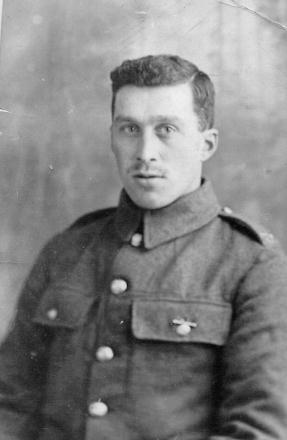
|
Charles William Page was born in Loughborough on 1st February 1890. He was the natural son of Edith Emma Page, daughter of William Page, a carpenter, and his wife Edith of Barrow on Soar. Charles was baptised at All Saints Church, Loughborough, on 21st May 1890 and at that time his mother was living at 16 Court A, Nottingham Road, Loughborough. On 6th June 1897 Charles's mother married Thomas Dexter Hubbard, a boiler maker from Loughborough, at Holy Trinity Church, Barrow on Soar.
In 1901 Charles was living with his mother, a hosiery linker, and stepfather Tom Hubbard, at 51 Cambridge Street, Loughborough. Charles became a joiner and on 22nd October 1910, as 'Charles Edward William Page' he married Minnie Powers at the Methodist Church, Stapleford, Nottinghamshire. In 1911 the young couple were living at Egmanton, near Newark, Nottinghamshire but between 1912 and 1915 they moved to 14 Hilton Street, Stocks Lane, Barnsley, Yorkshire. By the summer of 1915 they had four children Charles Arthur, Millicent, and twins Ruby and Lilian. Lilian, however, died aged five months from congenital debility and marasmus on 17th December 1915.
Charles, who had previously served with the 1/5th Territorials of the Leicestershire Regiment, attested in Barnsley on 22nd October 1915. He joined the 228th Coy of the Corps of Royal Engineers as Sapper 104571. The 228th (Barnsley) Company was a Field Company raised for Kitchener's 5th New Army and was part of the Army's 41st Division from September 1915.
The Royal Engineers played a crucial part in the First World War, ensuring clear routes for army supplies and army communications. They maintained the railways, roads, water supply, bridges and transport, operated the railways and inland waterways and designed and built front line fortifications. They also maintained the telephones, wireless and other signalling equipment, guns and other weapons and developed responses to chemical and underground warfare.
Charles's service record does not state where he was initially trained but it is likely to have been at the Royal Engineers centre in Newark or in Deganwy. He was sent to France on 2nd May 1916.
The 228th Company entrained at Aldershot for Southampton and crossed the Channel on the SS City of Dunkirk, arriving at Le Havre on 3rd May.
After one night in Dock Rest Camp No. 5, they entrained at the Gare des Marchandises for Godewaersvelde and marched to billets. On 9th May they moved to new billets at Ferme du Bois just south of La Becque and on 15th into billets at Leuridan Farm, near Ploegsteert. From here the company organised working parties in the trenches day and night, built concrete dug-outs for machine gun detachments, and constructed gun emplacements. All works in progress were inspected each day. This continued until 14th August when the company was ordered to move to Moulenacher. At Moulenacher there was drill and route marches, concerts and company sports.
Leaving Moulenacher on 24th August the company marched to Bailleul main station, entrained for Longpré, and marched to billets in Bouchon. From 26th August to 1st September the company received instruction for the design and laying out of strong points and the use of Weldon trestles, went on route marches, carried out arms drill, practised bayonet fighting and overhauled and checked equipment.
On 2nd and 3rd September the company moved to Fricourt, a distance of 27 miles, horses and wagons by route march and dismounted personnel by bus. There was considerable work in progress between Montauban and Delville Wood and in Milk Lane trench and special work covering up tanks.
On 15th September, the first day of the Battle of Flers-Courcelette, three sections of the company were engaged in repairing roads from Montauban forward, while the fourth section was constructing strong points in a trench. On the evening of the following day the company moved up to consolidate the line in front of Flers village which was heavily shelled by the enemy for two nights. Road repairs continued on the 17th September before the whole company marched back to the transport lines. From 18th-21st the company remained in camp at Fricourt before moving to Montauban on 22nd to pitch camp there. Work began on a new road by Bernafoy Wood and continued until the end of the month.
From October 1st - 11th October work included maintenance of the Decauville Railway, enlarging the Brigade headquarters and an advanced dressing station, digging a new trench just behind the front line, dealing with damaged water wells in Flers, and road repairs between Longueval and Fish Alley and between Longueval and High Wood. During this time the company suffered nine casualties, eight from machine gun fire and one from a sniper. After two days rest work began again on road repairs and also on the demolition of a German dump of hand-grenades.
On 16th October the company began a five-day move by train and route march via Argoeuvres, Fresnay-Tilloloy and Pont Remy to Godewaersvelde. Billets were found at le Laurier between Eecke and Caestre. On 25th October the company moved to Ouderdom. In this new sector company work was initially at Ouderdom, La Clytte, Kasteel Molen and Reninghelst and began on 27th October, continuing throughout November. In early December the company worked on reclaiming some reserve line trenches, strengthened the Vormazeele defences and supervised the making of strongpoints and machine gun emplacements.
On 19th December Charles left for England for a commission in the Infantry. He returned to France and rejoined the 228th Company on 20th June 1917 at Kruisstraat. After the camp was shelled - resulting in a number of casualties- the company moved to Major's Copse near Vierstraat.
On 29th June the company moved to the Berthen area for training, drill, lectures, field works and route marches. On 11th July Sections 1 and 2 went to Lumbres to work on the rifle ranges for the 2nd Army. On 12th July Section 4 went to the Ypres-Comines Canal for work on the railway and emplacements for the Royal Garrison Artillery, while Section 3 worked on skeleton trenches in the training area. All men returned to training on 16th and 17th July before the whole company moved to Ridge Wood, near Dickebusch. From 19th-29th July the company worked on stocking, clearing and draining of trenches. At the end of the month company headquarters moved to Bois Carré at the same time as the infantry launched an attack in the area.
August began with the consolidation of new positions gained after the infantry attack, wiring, digging, reclaiming and laying of duckboard track and trench boarding. This continued until 13th August when the company moved to rest billets at Thieushouk for inspections.
At some point during late July or early August Charles appears to have been taken ill or wounded. The relevant part of his service record is mostly unreadable but it appears that he was sent to No. 1 Stationary Hospital at Rouen. He was discharged from hospital on 6th September to the Royal Engineers Base Depot at Rouen and rejoined the 228th Company at Ridge Wood on 22nd September. Three days later the company entrained at Ouderdom for Caestre and proceeded via Wormhoudt to Uxem, arriving at La Panne on 29th September. The next few days were spent working on the Divisional HQ and training.
On 5th October most of the company moved to the Nieuport Bains sector to work on the stables and the Divisional Advanced HQ until 9th October. Back at La Panne they worked on the transport lines before training on rafting with Berthon boats (collapsible lifeboats) on the Dunkerke-Fiennes Canal until 22nd October. From 23rd-28th October the company relocated to Wellington and Calgary camps in Oost-Dunkerke in order to work on nearby communication trenches. All company equipment and kit was overhauled at Fort Mardick at the end of October.
In November 1917 the company was sent to Italy as part of the Italian Expeditionary Force. The Italian front was on the verge of collapse as the Battle of Caporetto (24th October-19th November) between the Italian Army and the combined forces of the Austro-Hungarian Empire and the German Reich unfolded. In order to ensure that this did not lead to Italy withdrawing from the war and after a request from General Cadorna to the Allies for support the Italian Expeditionary Force, a joint Franco-British enterprise, was set up.
The 41st Division, to which 228th Coy Royal Engineers belonged, was part of this force and on 7th November the Division was notified that it was to be transferred to Italy. The move, by train, began five days later and by 18th November all units had concentrated north-west of Mantua. The Division was briefly held in that area as a backstop in case the enemy onslaught crossed the River Piave. The Division then proceeded to Vicenza via Montagnano, reaching Castelfranco on 29th November. They took over a sector of front line behind the Piave, north-west of Treviso, between 30th November and 2nd December. From December to February the 228th Coy of the Royal Engineers was chiefly occupied with line and defence improvements.
The intervention of the Allies bolstered the Italians at a critical juncture. The enemy failed to take Monte Grappa and break through the Piave line. The Austrian high command, accepting the advice of the Germans, suspended the operation.
After the Italian front line was stabilised it was agreed that some of the British and French Divisions would return to France. On 28th February 1918 the 41st Division concentrated in Campo San Piero.
On 1st and 2nd March 1918 the 228th Company was at San Andrea for an inspection of cycles, tool carts and forage carts, company drill and rifle exercises. On 3rd March the company marched to Carmignana and entrained for France via the Riviera, arriving at Doullens on 8th March.
From Doullens the company marched to billets in Pas, in the Lens II area. From 11th-18th March they underwent training and took part in company sports before proceeding to Arras on 19th. Here they worked on the reserve line as the Germans opened their Spring Offensive. After Arras was heavily shelled the company moved on to Bihucourt and Sapignies to dig a new line of strong points between Sapignies and Favreuil and a new line in front of Biefvillers.
In the early morning of 25th March the company was withdrawn to Bihucourt Chateau. They then moved forward to Biefvillers-lès-Bapaume to support the infantry and dug themselves in on a line between Biefvillers and Grévillers. When the enemy attacked the company held their position for an hour and a half but were forced to retire.
Charles, aged 28, was killed in action on 25th March 1918 and was buried in Beaulencourt British Cemetery, Grave III. E. 7. B.
In 1918 Charles's widow moved to 26 Penfold Lane, Stapleford, to be near her family. She later moved to 55 King Edward Road, Loughborough, and in 1939 was living there with her daughter Millicent, who ran a wool and linen shop, and her mother-in-law Edith Hubbard.
|
|
|
Mrs Page visiting Charles Grave
|
|
Lieutenant Gerald Lewis Paget
|
|
67 Squadron, Royal Flying Corps.
Previously 17th Bn, Northumberland Fusiliers.
Killed in Action 13th July 1917, Aged 33.
Commemorated Jerusalem Memorial panel 9.
| 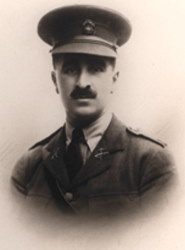 |
Gerald Lewis Paget was born on 25th April 1884 in Loughborough. He was the youngest child of Arthur Paget and his wife Rose Ellen (née Lakin) who were married on 12th September 1864 at St. James’s Chapelry, Birstall, Leicestershire. Gerald had eight brothers Bertie, Mark, Lionel, Robert, Kenneth, Tom, Edgar and Harry and three sisters Rose, Ellen and Ella. Bertie, however, died aged 24 in New South Wales, Australia.
Gerald’s father had been a student in applied sciences at King’s College, London. He then served is pupillage of three years with Messrs. Sharp, Stewart, and Co., Manchester. In 1854 he came to Loughborough, and was for two years engineer and manager, and for five years managing partner, in the firm of Messrs. Paget and White. In 1866 he started business on his own account as an engineer and machinist, taking up a branch of engineering to which some of his ancestors had devoted much attention - the manufacture of knitting, weaving, and other textile machinery. He built a factory on Mill Street (now known as Market Street) and in 1870 introduced his self-acting machine for knitting hosiery by steam power.
The success attained with this knitting machinery encouraged him still further in his experiments towards the constructions of the machine for warp weaving and knitting without weft, which was produced and shown at the Paris Exhibition in 1889. The mechanical ingenuity displayed, and the extreme accuracy and precision of the workmanship, gained for him the decoration of Chevalier of the Legion d’Honneur.
When Gerald was born the family was living at Radmoor House, Loughborough. When he was 10 his father, who had been in poor health for several years after suffering a stroke, died. Gerald’s mother subsequently moved to The Ridgeway, Rothley, Leicestershire.
Between 1898 and 1901 Gerald was educated at Malvern College. After leaving school he gained engineering experience firstly with the Midland Railway at Derby and then with Parsons Steam Turbine Company at Wallsend, Newcastle upon Tyne. In May 1909 he entered the service of the North Eastern Railway as a traffic probationer. He was later assistant train controller at Middlesbrough and personal assistant to the Hull District Superintendent, before gaining experience in the Chief Goods Manager's Office at York. He was an enthusiastic railwayman and took the keenest interest in all new ideas and inventions.
On 2nd July 1913 Gerald married Winifred Emily Gale at Southwell Minster, Nottinghamshire. In October 1913 Gerald was appointed yardmaster as Blaydon, near Gateshead, and he and his wife settled at Wylam, Northumberland. Their daughter Barbara was born there on 13th June 1914.
Gerald enlisted as soon as war broke out, gained a commission and on 12th January 1915 was appointed a Temporary 2nd Lieutenant with the 17th (Service) Battalion (North Eastern Railway Pioneers) of the Northumberland Fusiliers.
In June 1915 the battalion moved to Catterick where it joined 32nd Division as the divisional pioneer battalion. The division embarked for France on 20th November 1915 and the next six months were spent in the Somme sector around Albert, Bouzincourt and Méaulte. The battalion took part in the opening battle of the Somme at Thiepval. In October 1916 it left the division and joined GHQ Railway Construction Troops until the end of August 1917. Gerald, however, is not mentioned in the battalion’s war diary and it is not certain that he was in France with the battalion.
It is known that Gerald was, at some point, was attached to No. 1 Squadron, the Australian Flying Corps as an Observer, and promoted to the rank of Lieutenant.
No. 1 Squadron, Australian Flying Corps (AFC), formed at Point Cook in January 1916, was referred to by British authorities from 16th March 1916 to February 1918 as ‘No. 67 Squadron Royal Flying Corps (RFC)’ to avoid confusion with No. 1 Squadron RFC), not to mention No. 1 Squadron, Royal Naval Air Service, and because the AFC was in any case not recognised as being independent of the RFC.
The squadron, consisting of 12 aircraft organised into three flights, arrived in Egypt in April 1916 and was subsequently assigned to the RFC's 5th Wing. In mid-June it began operations against Ottoman Empire (Turkish) and Senussi Arab forces in Egypt and Palestine. It undertook reconnaissance, ground liaison and close air support operations as the British Empire forces advanced into Syria.
According to an official report ‘On 13th July 1917 two B.E.2.e aircraft left the Aerodrome at Deir-el-Balah on a reconnaissance of Beersheba and Irgeig. By some mistake the escort, which was to have been provided by No. 14 Squadron (RFC), failed to appear over Esani, the meeting place, at the time arranged, and the two B.Es-2nd Lieutenant Archibald Henry Searle (Pilot) and Lieutenant Gerald Lewis Paget (RFC) (Observer) in one and 2nd Lieutenants Reginald Baillieu and Adrien Barbe (RFC) in the other-went on without escort.
When in the vicinity of Bir-Ifteis, Palestine, the machine flown by Searle was attacked by a hostile machine, the port side wing was seen to fold up and the machine crashed to the ground behind enemy lines, and was surrounded by Turkish Cavalry. Searle had been shot through the head and both Searle and Paget were found dead in the wreckage. Baillieu and Barbe managed to escape with injury to their machine and landed safely in the British lines. Searle and Paget were buried with full military honours by the enemy.’
Gerald was aged 33 when he died. His place of burial is unknown.
He is remembered on the Jerusalem Memorial Panel 9. He is also commemorated on a memorial erected by the enemy at Sheria and later moved to the Beersheva War Cemetery. In England Gerald’s family placed a memorial stone in Loughborough Cemetery. He is further remembered on the war memorial at Wylam, Northumberland, and on the war memorial at Malvern College.
Gerald’s widow Winifred was remarried in Tewkesbury in 1920 to Dr. Norman Devereux, a medical practitioner who had served in the Royal Army Medical Corps in the war. She sadly died, however, the following year. Gerald and Winifred’s seven-year old daughter Barbara went to live with her maternal grandmother the Honourable Mrs. Handford at Southwell, Nottinghamshire.
|
 Beersheba RFC/AFC Memorial Beersheba RFC/AFC Memorial
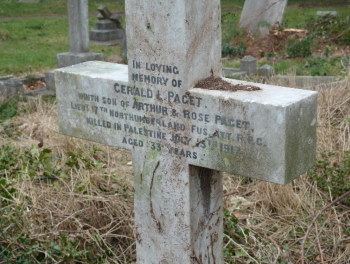 (above) Memorial, Loughborough Cemetery (above) Memorial, Loughborough Cemetery
(Left) War Memorial, Wylam, Northumberland |
|
Sergeant T2/14153 Arthur Frederick Palmer
|
|
475th H.T. Coy, 10th Div. Train, Army Service Corps.
Died of Malaria 8th September 1916, Aged 35.
Buried Pieta Military Cemetery, C. XI. 6.
(his brother Edwin Palmer also fell see below)
|

|
Arthur Frederick Palmer, known as 'Fred', was born on the 9th December 1879 at 15 High Street, Loughborough. He was the fourth son of Dr. William Grimes Palmer and his wife Eliza who were married on 2nd August 1871 at All Saints Church, Loughborough, by Archdeacon Henry Fearon. Dr. Palmer was a medical officer for the Loughborough District and Workhouse and later for the Rural Sanitary Authority of the Loughborough Union. Eliza was the niece and adopted daughter of John Tyler Esq., of Thorpe Villa, Loughborough.
Dr. and Mrs. Palmer had twelve children: Lucy, William, Henry, Ethel, John, Edith, Arthur Frederick, Gertrude, Edwin, Sybil, Kathleen, and Margaret. Between 1881 and 1891 the family moved from High Street, Loughborough, to Thorpe Cottage, Derby Road, Knightthorpe. Dr. Palmer died there from peritonitis and other complications on the 15th November 1889, aged 45, leaving Eliza a widow. In 1901 Fred was working as a mechanical engineer and living with his mother and six of his siblings at Thorpe Cottage. He was still living there with her and his brother Edwin in 1911. His mother Eliza died on 5th May 1914.
Fred volunteered at Leicester for active service at the outbreak of war in August 1914, giving his place of residence as Belvedere, Kent. He joined 475th Horse Transport Coy., 52nd (Lowland) Div. Train of the Army Service Corps as Private T2/14153. After a period guarding the Scottish coastal defences the 52nd Division was warned on 5th April 1915 that it would go on overseas service, a directive confirmed on 7th May, the destination being Gallipoli.
The units embarked at Liverpool and Devonport between 18th May and 8th June, the first units landing on Gallipoli (Cape Helles) on 6th June. The Division was then involved in the Battle of Gully Ravine (28th-29th June) and the Battle of Achi Baba Nullah (12th-13th July).
At the beginning of October 1915 the 475th Horse Transport Coy was transferred to the 10th (Irish) Division of the Army. It withdrew from Gallipoli and went via Mudros to Salonika, landing there between 5th and 10th October. In December 1915 the British Salonika Force fought a battle against Bulgaria at Kosturino, north of Lake Doiran.
During the first four months of 1916 the British Salonika Force redoubled its efforts to prevent Bulgaria invading Greece. Large amounts of barbed wire were used and a bastion about eight miles north of Salonika was created connecting with the Vardar marshes to the west, and the lake defences of Langaza and Beshik to the east, and so to the Gulf of Orfano and the Aegean Sea. This area was known as the 'Birdcage' on account of the quantity of wire used.
The Salonika Force then dug-in until the summer of 1916, by which time the international force had been reinforced and joined by Serbian, Russian and Italian units. The Bulgarian attempt at an invasion of Greece in July 1916 was repulsed near Lake Doiran.
Fred, who had been promoted to the rank of Sergeant, had been offered a commission, which he declined. He contracted malaria whilst on active service in Salonika and died at the Military Base Hospital, Tigné, Malta, on the 8th September 1916, aged 35. He is buried at Pieta Military Cemetery, Triq Id-Duluri (Our Lady of Sorrows) Street, Pieta, Malta, Grave C. XI. 6.
A newspaper report of his death noted that: 'Fred Palmer was educated at the Loughborough Grammar School and was well known and liked in the town. He was a member of local sports clubs and enjoyed taking part, especially in football where he was a member of the Loughborough Corinthians Football Club. He was also a good oarsman and a member of the Loughborough Boat Club. Fred acted as goalkeeper for the Loughborough Hockey Club and was regarded as a 'sound and useful player'.
Fred is commemorated on the memorial at All Saints Church, Loughborough, and on the Loughborough Grammar School Roll of Honour as well as on the Carillon.
Fred's brother Edwin, who served with the 2nd London Regiment (Royal Fusiliers), was killed in 1917.
|
|
Loughborough Corinthians FC, winners of the Leicestershire Junior Cup, 1900/01.
Fred Palmer middle front row.
|
|
|
|
Corporal 233858 Edwin Palmer
|
|
2/2nd (City of London) Battalion, Royal Fusiliers.
Death presumed on or since 15th June 1917, Aged 34.
Commemorated Arras Memorial bay 9.
(his brother Arthur Palmer also fell see above)
|
Edwin Palmer was born on the 29th May 1883 at 15 High Street, Loughborough and baptised on 29th June 1883 at All Saints Parish Church, Loughborough. He was the fifth son of Dr. William Grimes Palmer and his wife Eliza (née Tyler) who were married on 2nd August 1871 at All Saints Church by Archdeacon Henry Fearon. Dr. Palmer was a surgeon and medical officer for the Loughborough District and Workhouse and later for the Rural Sanitary Authority of the Loughborough Union. Eliza was the niece and adopted daughter of John Tyler Esq., of Thorpe Villa, Loughborough.
Dr. and Mrs. Palmer had twelve children: Lucy, William, Henry, Ethel, John, Edith, Arthur Frederick, Gertrude, Edwin, Sybil, Kathleen, and Margaret. Between 1881 and 1891 the family moved from High Street, Loughborough, to Thorpe Cottage, Derby Road, Knightthorpe. Dr. Palmer died there from peritonitis and other complications on the 15th November 1889, aged 45, leaving Eliza a widow. Edwin attended Loughborough Grammar School. In 1901 he was working as a bank clerk and living with his mother and six of his siblings at Thorpe Cottage. He was still living there with her and his brother Arthur Frederick in 1911.
After Edwin's mother Eliza died on 5th May 1914 it seems that Edwin may have moved to London. What is certain is that he became a cashier at the London, City and Midland Bank and in August 1915 joined the Inns of Court O.T.C. as Private 8537. The Inns of Court O.T.C. provided basic and officer training at Berkhamsted Common, Hertfordshire. The subjects covered were drill, musketry (although limited by a shortage of suitable ranges), entrenching (but little in the way of trench warfare, apart from bombing), map reading, field exercises in open warfare (designed to instil leadership and initiative), and lectures, which covered a whole range of subjects from sanitation, through tactics, to the history of the war.
Edwin subsequently joined the 2/2nd (City of London) Battalion, Royal Fusiliers as Private 233858. This was a 'home' unit of the London Regiment, an all-Territorial Force regiment, which was affiliated to the Royal Fusiliers. Initially a second line reserve unit it suffered from lack of equipment of all sorts which greatly affected training. After the passing of the Military Service Act in early 1916 the Battalion could be sent overseas, once trained. Edwin's service record has unfortunately not survived. Precise details regarding his military service are therefore unavailable. At some point, however, he was promoted to Corporal.
After being based in the Ipswich area, the battalion had a role in the East Coast defences in spring 1916. It moved again, to Sutton Veny, in July 1916. The Battalion received a warning order on 1st January 1917 that it would soon depart for France. The men crossed the Channel to Boulogne from 20th January and completed concentration at Lucheux on 8th February. The battalion took part in the pursuit of the German retreat to the Hindenburg Line from 14th March to 5th April, the Battle of Bullecourt from 4th-17th May and the actions of the Hindenburg Line from 20th May -16th June.
On 15th June 1917 the 2/2 Londons were in the area of Bullecourt and engaged in a prolonged attack to take the Hindenburg Line to the north-west of the village. Edwin was reported missing on 15th June and was presumed to have been killed in action on or after that date. He was aged 34.
A local newspaper noted that Corporal Palmer 'had many friends in the town whose esteem he had won by his courtesy and consideration'.
Edwin is commemorated on the Arras Memorial bay 9, on the memorial at All Saints Church, Loughborough, and on the Loughborough Grammar School Roll of Honour as well as on the Carillon.
Edwin's brother Arthur Frederick died of malaria in 1916 while serving with the Army Service Corps.
|
|
Loughborough Corinthians FC, second team 1901/02
Edwin Palmer seated 2nd from the left.
|
|
|
|
Private 358082 Tom Palmer
|
|
10th Bn, The Kings Liverpool Regiment.
Killed in Action 4th October 1918, Aged 25.
Buried Rue-Petillon Military Cemetery Fleurbaix I. E. 44.
|
Tom Palmer was born in Sileby, Leicestershire, on 3rd April 1893. He was the natural son of Mary Elizabeth Palmer, a blacksmith's daughter from Sileby. On 13th November 1897 Tom's mother married Samuel Robey at All Saints Church, Loughborough. One year later Tom's step-sister Doris was born. Tom's stepfather was a brickyard labourer who progressed to being a tile maker and his mother was a Griswold hand. In 1901 the Robey family lived in Brook Street, Sileby, but by 1911 had moved to 35 Albert Street, Loughborough. The family later moved to No. 19 in Albert Street.
Tom was educated at an Intermediate School in Loughborough. After leaving school he became a hosiery apprentice and by 1916 was a hosiery factory overlooker. He enlisted on 22nd May 1916 and joined the King's (Liverpool Regiment) as Private 358082.
After initial training Tom was sent overseas on 22nd February 1917 to join the 1/10th (Scottish) Battalion of the Regiment as a stretcher bearer. He joined his battalion at C Camp, Brandhoek, where the battalion was undergoing training.
During March, April and May the battalion did trench tours in the Potijze and St. Jean sectors with breaks in billets in the areas of the Convent des Carmes, Ypres, or Ypres prison. They also formed working parties for the Royal Engineers in Ypres and at Proven. In addition there were two training sessions, one at Brandhoek C Camp and one at Poperinghe.
At the beginning of June the battalion was shelled while in B Camp, Brandhoek, and moved to a canvas camp near Vlamertinghe. Between 5th and 11th June the men were on front line working parties. This was followed by a trench tour in the Railway Wood sector during which the enemy blew up several mines. On 19th June the battalion entrained at Poperinghe for Zeggerscappel and travelled by bus to Zudausques. Here, for the rest of June the battalion underwent training and carried out trench digging.
Training continued at Esquerdes until 19th July. On 20th July the battalion entrained at St. Omer for Poperinghe and began a trench tour in the Wieltje sector. On the next four days the battalion suffered repeated enemy mustard gas shell attacks and more than 63 men were sent to hospital with gas poisoning. After a break at Derby Camp the battalion took part in an attack on the enemy east of Wieltje on 31st July. This was successful but the battalion encountered heavy machine gun and rifle fire and enemy snipers were very active. The following two days were spent holding the captured trenches in the face of heavy enemy artillery fire and there were many casualties.
After three days rest at Vlamertinghe and Watou on 6th August the battalion entrained at Abeele for Audruicq and marched to billets at Zouafques. Here training in musketry, open warfare and field firing took place until 12th September.
On 13th September the battalion entrained at Audruicq for Goldfish Chateau, Ypres, and went into the front and support lines being accommodated in German concrete dugouts and gunpits. On 26th September the battalion entrained at Proven for Miraumont and then marched via Beulencourt to Villers-Faucon before going into the trenches at Epehy.
The first two weeks of October were spent on trench improvement at Epehy, followed by a week's training at Villers-Faucon. In November, at Epehy, an attack took place in which the enemy offered little resistance. Ten days later, however, the enemy attacked, and outflanked the battalion which was forced to withdraw.
In December the battalion was on the move again to Tincourt, Beaumetz-lès-Aire, Flamincourt, by train to Aubigny, Izel-lès-Hammeau, Bailleul-aux-Cornailles, Tangry, Crépy and back to Beaumetz-lès-Aire on 16th December. Training and reorganisation then took place until 8th February 1918.
Between 9th and 14th February the battalion marched via Westrehen, Lapugnoy and Verquin to Le Preol to go into reserve and practice tactics. On 25th February the battalion went into the trenches north of the La Bassée Canal. Here, although heavily trench-mortared by the enemy, they carried out wiring work and patrols.
The enemy now appeared to be building up to an attack. On 14th and 15th March, and once again in the trenches, the battalion suffered two days of heavy enemy bombardment. The German Spring Offensive began on 21st March. After a break in Divisional reserve at Mesplaux Farm for training the battalion was taken by bus to Annequin on 27th March and moved into the trenches in the Cambrin locality immediately south of La Bassée Canal.
Relieved on 7th April two companies of the battalion went to Mesplaux Farm and two to Le Hamel. On 9th April there was a very heavy enemy bombardment of the front and back areas and the battalion moved to the Tuning Fork line area. The enemy shelled all roads and tracks and the battalion sustained heavy casualties en route. On 10th April No. 2 Company was attacked three times but beat off the enemy at heavy cost. On 13th April the battalion made a successful counter-attack before moving to Festubert. After Festubert was bombed by the enemy the battalion moved to Raimbert.
After moving to Verquin on 20th April the battalion went into the trenches at Tuning Fork South and Gorre Wood and although experiencing a heavy enemy bombardment put up a successful counter-attack on 24th April. After two more enemy bombardments the battalion proceeded to Labourse but this was also shelled and they moved to Vaudricourt.
During May the battalion completed four trench tours, two in the Festubert left sub-sector, one at Le Preol, and one in the Le Plantin sub-sector. After a period of training at Vaudricourt from 1st-8th June there were two more trench tours, one at Le Plantin and one at Festubert. At the end of June there was an epidemic of flu and 200 men were sent to hospital. July included trench tours again at Le Plantin and Festubert, the Brigade horse show and fete in vaudricourt chateau grounds and tactical training at Decuvin Camp.
In August there were trench tours in the Cailloux sector and at Le Plantin with a break from 16th-25th August at No. 1 Camp, Vaudricourt where the brigade boxing competition took place. At the beginning of September the battalion moved to Camp N. 2 at Vaudricourt for training and football. At this time there were indications of an enemy withdrawal. On 23rd September, after a trench tour where they were heavily shelled, the battalion moved by train to Béthune and then returned to the trenches at Festubert.
On 2nd October the battalion was ordered to advance. On 3rd they reached the La Bassée-Fromelles line and then to a line running through Petit Moisnil. At dusk they were at the outpost line running through Hocron. On 4th October, having been told to advance across the canal if possible, the battalion became engaged in heavy fighting amid constant machine gun fire and any movement was difficult and dangerous.
Tom, aged 25, was killed in action at Don, north-west of La Bassée, on 4th October 1918. His Commanding Officer wrote to Tom's parents as follows: 'He, in company with others who fell in action, was in no little measure responsible for the fine success of the Battalion during the action'. His Captain wrote, 'Private Palmer had gone out into the fire swept zone with a stretcher to rescue a wounded man, and was killed instantaneously… It was a very brave action and I have recommended him for a decoration. He will be a great loss to the company, as he was always cheery, willing, and an excellent stretcher bearer. It is very hard to fill the place of such men'. His Lieutenant also wrote, 'Machine gun bullets were sweeping all over the position, but Private Palmer never hesitated for a moment. He reached the wounded man, bound and dressed his wounds. Palmer's position became very serious and perilous, as he was in full view of the enemy. The air was ringing with bullets, but Tom calmly picked up his stretcher, and was killed by a bullet in the neck.'
Tom was buried at Rue-Petillon Military Cemetery, Fleurbaix, Grave I. E. 44. He is commemorated on the memorial at Emmanuel Church, Loughborough, and on the Carillon.
|
|
|
|
Gunner 194561 Alfred John Paltridge
|
|
26th Heavy Bty, Royal Garrison Artillery.
Killed in Action 9th September 1918, Aged 21.
Buried Chapel Corner Cemetery, Sauchy-Lestrée, A. 28.
|
Alfred John Paltridge was born in Loughborough in 1897. He was the son of Alfred John Paltridge, a journeyman tailor, and his wife Clara (née Conley) who were married on 5th May 1889 at the Wesleyan Methodist Chapel, Loughborough. Alfred Junior had one brother Henry and two sisters Frances and Ethel. Five other siblings died in infancy. The Partridge family moved from place to place because of Alfred Senior's work. In 1890 they lived at 40 Berners Street, Leicester, from 1892 to 1897 they were in Loughborough, in 1899 in Derby, in 1901 at 25 Porter Street, Leicester, and in 1911 at 60 Waterway Street, Nottingham. In 1911 Alfred Junior was an errand boy.
Alfred Junior's mother died in 1912 and his father in 1915. His brother Henry died in Loughborough in 1916.
Alfred appears to have enlisted sometime in 1916 but the exact dates of his enlistment and when he was sent to France are unknown as his service record has not survived. He joined the Royal Garrison Artillery, trained as Gunner 194561, and was posted to the 26th Heavy Battery.
The Heavy Batteries of the RGA were equipped with heavy guns, sending large calibre high explosive shells in fairly flat trajectory fire. The usual armaments were 60 pounder (5 inch) guns, although some batteries had obsolescent 5 inch howitzers. As British artillery tactics developed, the Heavy Batteries were most often employed in destroying or neutralising the enemy artillery, as well as putting destructive fire down on strongpoints, dumps, store, roads and railways behind enemy lines. These weapons became the first to be hauled by motor tractors rather than horse power and some of the guns were so large that they could only be deployed on railway tracks.
In about March 1915 Heavy Batteries were removed from Army Divisions and Heavy Artillery Groups (HAGs) were formed for heavy and siege batteries. The batteries could then be placed as required. Arthur is known to have served with the 26th Heavy Battery. In 1916 26 HAG was with 3 HAG from 7th-21st April after which it moved to 42 HAG until 14th June. On 1st December 1916 to 26th January 1817 it was with 62 HAG and then moved to 73 HAG until 6th December that year. In 1918 it was with 23 HAG and then 42 HAG. Unfortunately war diaries for specific HAGs are rarely found and Arthur's exact whereabouts over his years of service remain unidentified.
Alfred was killed in action, aged 21, on 9th September 1918. He was buried in Chapel Corner Cemetery, Sauchy-Lestrée, Grave A28.
Alfred is remembered on the memorial in All Saints Church, Loughborough, and on the Carillon.
|
|
|
|
Regimental Sergeant Major 3538 George Charles Parker
|
|
1/1st Leicestershire Yeomanry.
Killed in Action 13th May 1915, Aged 42.
Commemorated Ypres Menin Gate panel 5.
|
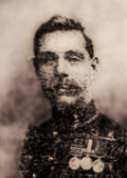
|
George Charles Parker was born in Clewer, Windsor, in 1872, the son of George Parker and his wife Lydia (formerly Sumner, nee Gray). His mother was a widow with three children when she married George's father, and she went on to have eight more children with George Parker, including George Charles. At first the family lived at Wellington Place, Clewer, and George's father was a gardener, but by 1911 his parents had moved to 30 Eton Square, Eton, and his father was a carman.
George Parker enlisted at Aldershot and fought with the 19th (Queen Alexandra's Own Royal) Hussars in the Second Boer War. He had 5 bars, including one for the Defence of Ladysmith, with his Queen's South Africa medal. He was with the Hussars in Curragh, Ireland between 1903 and 1908 and in Norwich between 1908 and 1910. He eventually became a Squadron Sergeant Major and after leaving the Hussars, went on to be involved with the cadets at Eton College.
He married Edith Jane Kingston in 1905 in Eton. As World War 1 approached he enlisted in the Leicestershire (Prince Albert's Own) Yeomanry as Regimental Sergeant Major 3538. He moved his family to 22 Toothill Road, Loughborough. He and his wife had three children: Arthur (born 1906 in Curragh, Eire), William (born 1909 in Norfolk) and Edith Mary (born 1915 in Loughborough).
The 1/1st Leicestershire Yeomanry was mobilised on 5th August 1914 and billeted in the village of Palgrave, Suffolk, until 1st November 1914. On 2nd November they entrained at Diss with the horses and travelled to Southampton Docks. They sailed for France, arriving at Le Havre the following day, and proceeded to No. 2 Rest Camp. On 4th November they entrained for St. Omer and marched to Esquerdes where they remained for four days to carry out bayonet and entrenching exercises.
On 11th November they marched to Eecke to join the 3rd Cavalry Division and on the following day proceeded via Poperinghe to Bellewaarde Farm on the Hooge Road east of Ypres. Here they joined the 7th Cavalry Brigade and were sent to the support and reserve trenches. On 16th they moved to billets in Ypres where they were heavily shelled. From 17th - 21st November A and C Squadrons were in the advance, support and reserve trenches east of Zillebeeke and B Squadron was in dugouts near the Menin-Ypres road. From 22nd November to 4th December they were at St. Sylvestre near Caestre refitting and exercising while being on duty in General reserve.
On 3rd December they paraded with the 7th Cavalry Brigade for an inspection by His Majesty the King. From 7th -17th December they were based at Oxlaere and then Berthen for drill and entrenching practice while again being in General reserve. On 18th December they moved to an area south of Hondeghem and the Caestre road. Here classes for reserve stretcher bearers and machine gunners took place. On 22nd December they moved to La Brearde where they remained until 2nd February 1915 for training in an advanced guard scheme, hand grenade and entrenching instruction, route marches and inspections.
On 3rd February they were transported by bus to Ypres and marched to Zillebeke where they took over the front line trenches. They spent several days draining and improving the trenches amid enemy sniping. Relieved on 8th February they moved to billets in Ypres as part of the General reserve. On 11th February there was heavy shelling near their billets and on the following day they moved by bus back to La Brearde. Training took place there until 11th April.
On 12th April they moved to Renescure and on 23rd April marched via Abeele to Godewaersvelde. On 24th they proceeded to Vlamertinghe before moving at night to Reninghelst. On 25th and 26th April they moved via Poperinghe and Watou to Forge, where they left the horses, and returned to Vlamertinghe. On 27th they were shelled out of their huts and bivouacked in a field. On 28th they moved to Abeele and over the next three days met up with the Brigade at Forge.
In early May they left the horses at Vlamertinghe and marched to Hazebrouck before going by bus to Brielen near Ypres. On 12th May, as dismounted infantry, they took over the trenches north of the railway near Bellewaarde Farm and immediately became involved in the Battle of Frezenberg Ridge (otherwise called the 2nd Battle of Ypres). During this battle on 12th and 13th May the Leicestershire Yeomanry suffered 186 casualties.
George, aged 42, died on 13th May at the Battle of Frezenberg, shot through the neck in A Squadron's trench whilst attempting to assist Lt. Colonel Evans-Freke. The colonel also lost his life that day.
George is commemorated on the Ypres (Menin Gate) Memorial, Panel 5. He is also commemorated on the war memorial in All Saints Church, Loughborough.
George Parker belonged to the Howe and Charnwood Masonic Lodge and is also commemorated on the Masonic Roll of Honour commissioned by the United Grand Lodge of England, Freemasons' Hall, London.
|
|
|
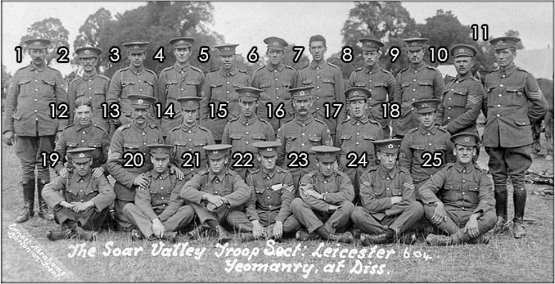
The Soar Valley Troop, 1914.
7. Cecil Pepper 9. Percy Jones 16. George Parker 21. Billy Moore 23. Dan Moore 24. Thirlby Hack
|
|
Lance Corporal 15179 Harry Parkinson
|
|
6th Bn, Leicestershire Regiment.
Killed in Action 5th October 1917, Aged 22.
Commemorated Tyne Cot Memorial panel 50 - 51.
|
Harry Parkinson was born in Loughborough in 1895, the son of Frederick James Parkinson and his wife Julia (née West) who were married in Loughborough in 1884. He was baptised at All Saints Church, Loughborough, on 1st December 1897. Harry's father was a coachbuilder of electric cars and the family lived in Gladstone Street, Loughborough, firstly at No. 28 and later at No. 36. Harry had one brother Francis and four sisters Gertrude, Amy, Dora and Winifred. Another sister Ethel died as an infant. In 1911 Harry, aged 16, was an iron turner.
Harry enlisted in September 1914 and joined the Leicestershire Regiment as Private 15179. Posted to the 6th (Service) Battalion he was sent from the Depot to Bordon, near Aldershot, Hampshire where the emphasis was on individual training, squadron and platoon drill. In March 1915 the battalion went into billets in Liphook. In April the 6th Battalion became part of the 37th Division of the Army and concentrated at Cholderton on Salisbury Plain. On 22nd July the Division began to cross the English Channel arrived in France on 30th July 1915. The Division initially concentrated near Tilques not far from St.Omer.
In September the battalion was sent to Berles-au-Bois, south-west of Arras and near the front line. In the months that followed the 6th Battalion did tours in the trenches, alternating with the 8th Leicesters who relieved them. The battalion was engaged in localised operations seeking a tactical advantage and remained in the area around Bienvillers and Bailleulmont until July 1916.
On 1st July 1916 the 6th Battalion moved from Saulty to Humbercamps, where it was held in reserve for the Somme Offensive which had just begun. On 6th July the battalion marched to Talmas to join the Army's 21st Division. From 7th to 10th July the battalion was in Hengest-sur-Somme, and from there on 10th proceeded by route march, bus and train to Fricourt, Between 14th and 17th July the battalion took part in an attack on and successfully captured Bazentin-le-Petit Wood and village. On 20th July the battalion entrained at Ribemont for Saleux, after which they marched to Hengest. Travelling part of the way in lorries and part of the way on foot they reached Arras on 27th July and relieved the 8th Leicesters in the trenches on 7th August. The remainder of August was spent in the trenches and in billets at Arras.
On 4th September the battalion left Arras for Liencourt and after a week there for training moved to Fricourt and Bernafay Wood, east of Montauban-de-Picardie. Here from 19th to 24th September the men were employed in the improvement of communication and support trenches in preparation for a forthcoming attack on Gueudecourt. On 25th September the 6th Leicesters moved up to the assembly trenches in order to be ready to support the 8th and 9th Leicesters as they advanced. Progress was made north and east of Gueudecourt but as the Leicesters consolidated their position the village itself and its approaches were heavily bombarded by the enemy. This situation remained the same over the next few days. After the attack the battalion returned to bivouac at Bernafay Wood.
On 4th October the battalion began a three-day transfer by train and route march to Sailly La Bourse and began trench tours in the Hohenzollern Sector near Vermelles. They remained in the front line, in the support trenches or in Reserve until mid-December when they moved to Auchel. From 21st December 1916 to 28th January 1917 the battalion was in training at Auchel. Training was continued at Houtkerque until mid-February. Trench tours at Noyelles and Vermelles followed until the beginning of April when the battalion transferred to Hamelincourt. From 11th to 13th April the battalion was in action at the start of the Arras Offensive and on 3rd May in an attack on Fontaines les Croisilles.
On the following day the battalion moved to the support posts on the Sunken Road, staying there until 8th May when they moved to the forward posts. Relieved on 11th May they marched to the railway bank and on 12th May to billets in Berles-au-Bois. The remainder of May was spent resting and training in musketry and tactical schemes. From 1st-7th June two companies of the battalion worked on improving C Camp at Moyenville whilst the other two companies worked for the Royal Engineers digging communication trenches in Sunken Road. Following this the battalion returned to the trenches at Croisilles, taking the front line from 11th-19th June. Here they were heavily shelled. From C Camp at Moyenville on 20th June the battalion moved to Hendecourt-les-Ransart for rest, training and field firing.
Back in Divisional Reserve at Moyenville on 1st July the battalion moved back into the front line and support trenches at Croisilles from 8th July until 1st August. From 1st-9th August there was training at Moyenville as well as working parties at St. Leger prior to another trench tour at Croisilles until 17th. August concluded with training at Hamelincourt and Manin.
In the first two weeks of September there was training, sports and a military gymkhana at Manin. On 16th September the battalion entrained at Savy for Caestre and continued training there and at Fontaine Houck until 25th September. On 26th they moved by bus to a camp on the road between La Clytte and Dickenbusch and immediately marched to Scottish Wood and Bedford House. The battalion moved up to the line on the Ypres-Menin Road near Hooge on 30th September.
On October 1st they moved into reserve in Polygon Wood before being relieved for two days. On 4th October the battalion moved to Zillebeke Lake and consolidated in front of Polygon Wood. On 5th October, when the battalion was in the front line, Harry, aged 22 and now a Lance Corporal, was killed in action.
Harry is remembered on the Tyne Cot Memorial, Zonnebeke, Panels 50-51, and on the Carillon. Harry's mother passed away the day after receiving the news of her son's death.
|
|
|
|
Corporal M2/113122 Ivor John Parkinson
|
|
51st Auxiliary Bus Coy, Army Service Corps.
Died at Home of Influenza and Pneumonia 11th November 1918, Aged 25.
Buried Loughborough Cemetery, 42/259.
|
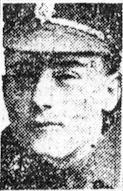
|
Ivor John Parkinson was born in Loughborough in late 1893 and baptised at All Saints Church, Loughborough, on 18th March 1894. He was the son of John Henry Parkinson and his second wife Emily Mary Ann (née Johnson, known professionally as Madame Johnson). Ivor's parents were married in Loughborough in 1892. Ivor had one brother Rex and four sisters Gwendoline, Lorna, Eileen and Ruby. Two other siblings died in infancy. He also had a half-brother Wilfred from his father's first marriage to Emma Tovey. Emma had died, aged 30, in 1891.
The Parkinson family lived for some years in Wood Gate, Loughborough, firstly at No. 69A and then No. 70. Between 1911 and 1914 they moved to Queen's Hall, Packe Street.
Ivor's father was a painter in 1894. By 1901 he had become a machinist's clerk and by 1905 had joined his wife Emily as a teacher of dancing at her dancing school. Ivor's mother taught music as well as dancing and ran an orchestra known as 'Madame Johnson's Orchestra'. This orchestra played at the Victoria Room in the Town Hall in 1914 when Ivor, his parents and sister Lorna demonstrated the Argentine and New York versions of the tango at the Loughborough Tradesmen's Association Annual Ball.
Ivor, who trained as an electrical engineer and then became a motor driver, enlisted at Leicester on 20th April 1915. He was posted to the Army Service Corps Mechanical Transport Section as Private M2/113122 and sent to Bulwell, Nottinghamshire, for recruits' drill and training. On 28th July 1915 he moved to Hungerford to join Company 339 of Mechanical Transport and two months later was promoted to Acting Corporal.
Ivor was sent to France on 1st April 1916, via Southampton to Rouen. He joined his company at 7 GHQ Ammunition Park and on 14th May was promoted to Corporal. On 7th August 1916 he moved to the 23rd Ammunition Supply Park and on 2nd August 1917 to the 51st Auxiliary (Omnibus) Company.
Where Ivor was after he joined the Omnibus Company, however, is unknown as the operations of the bus companies overseas are not well documented.
Buses played a vital role in supporting Britain and her allies during the First World War. More than a thousand buses were commandeered by the War Department for service on the front lines. Many of the buses were driven in France and Belgium and some were even sent to Egypt.
This was the first use of motorised transport in a war and the converted 'battle buses' would travel in convoys at night, often of over 70 vehicles, to transport troops to the front lines. They would take fresh troops out and return with the sick and wounded, or men leaving the trenches for rest periods. Some buses even had special boxes built on top to bring homing pigeons to the front line for carrying messages. Buses often came under enemy fire and some ended up forlornly lying in ditches. The surviving buses served until the end of the war and were used to bring troops home. Altogether 1,429 transport staff lost their lives in the war.
Initially the buses remained in their original livery but were later painted in khaki or green. The glass windows were prone to breakage by the men's rifles and packs and were later removed, being replaced with wooden planks. Whilst abroad, some buses were converted for non-passenger-carrying duties such as armoured cars and mobile anti-aircraft gun carriages and had their bodies removed. Drivers were armed with a rifle, bullets and a bayonet which they kept on the dashboard.
Ivor was granted leave from 20th-30th September 1917 and probably returned to Loughborough. In 1918 he was granted another period of leave from 20th October-4th November but on 31st October he was admitted to Loughborough General Hospital with influenza and pneumonia. He died in Loughborough Hospital, aged 25, on 11th November 1918, Armistice Day.
Ivor was buried in Loughborough Cemetery Grave 42/259. His gravestone bears the following additional inscription: 'This memorial was erected by the Officers, N.C.Os and Men of the 51st Aux. Bus Co., B.E.F. France as a token of respect to a dearly loved comrade'.
Ivor's father received a letter from his Commanding Officer which read as follows: 'Your son was one of the oldest members of this Company and was one of the most popular men among all ranks and I can assure you that his loss will be felt most keenly by everyone, not only as a man but also as a musician. He was the life and soul of our Concert Party. Apart from this his presence in our canteen as Corporal-in-Charge was a very great asset. His place as an accompanist will be most difficult if not impossible to fill'.
Ivor's father served as a Sergeant in the Royal Defence Corps and survived the war but died in 1920, aged 61. Ivor's mother died in 1924, aged 53.
|
|
|
|
Second Lieutenant Alfred John Parr DCM
|
|
59th Bn. Australian Light Infantry. A.I.F.
Died of Wounds 1st October 1918, Aged 24.
Buried Prospect Hill Cemetery, Gouy. IV. A. 16.
(his step brother Arthur Newbon also fell)
|
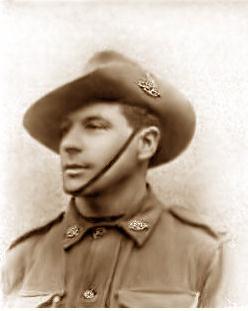
|
|
Alfred John Parr was born in Beeston, Nottinghamshire, in 1894 and baptised at the Church of St. John the Baptist, Beeston, on 24th October 1894. He was the son of John Parr, an iron moulder, and his wife Elizabeth Ann (née Archer) who were married at Holy Trinity Church, Loughborough, on 17th May 1891. By 1897 the Parr family had moved to Loughborough from Beeston. Alfred had twin brothers Archibald and John.
When Alfred was five his father died and in the spring of 1900 Alfred's mother married Charles Newbon, a widowed iron driller, in Loughborough. In 1901 the Newbons were living at 19 Ratcliffe Road, Loughborough, and Alfred now had two step-brothers James and Arthur and a step-sister Ellen who had already left home. He also had a baby step-brother Charles Newbon as well as an adopted sister Mabel Barber. By 1911 the family had moved to 72 Pinfold Gate and Alfred had one more step-brother Robert Newbon and three step-sisters Bertha, Hetty and Ruth Newbon from his mother's second marriage.
Alfred attended the Emmanuel Boys School then worked as a foundry labourer at the Empress Works. When he was about nineteen, he decided to emigrate to Australia. Shipping records show a factory worker, Mr A. Parr arriving in Melbourne on SS Port Lincoln on 4 March 1914. It appears Alfred went to the Western District after his arrival to work on the land, possibly at the property of William Hallam near Cavendish, Victoria.
A year after his arrival in Australia, Alfred travelled to nearby Hamilton and enlisted with the Australian Expeditionary Force on 3rd March 1915. He gave his religion as Methodist. Six weeks later, on 17th April Alfred embarked as Private 2059 with the 7th Battalion, 5th Reinforcements, at Melbourne on HMAT Hororata and sailed for Egypt. On 8th June 1915 he left Zeitoun, Egypt, embarked with the 5th Reinforcements at Alexandria on HMAT Seean Choon and sailed for Gallipoli. He joined B Company of the 7th Battalion at Anzac Cove, Gallipoli, on 17th June.
On 14th July 1915 Alfred was wounded in the knee. He was taken aboard the hospital ship Gascon and four days later admitted to the Convalescent Hospital, Tigne, Malta. On 3rd August he was transferred to St. Andrew's Military Hospital, Tigne, and to Riccisoli, St. David's, Malta, on 18th August. On 20th August he embarked for Egypt on HMT Southland, reaching Alexandria on 25th August. On 30th August he embarked on the HMAT Karroo for the Dardanelles and rejoined his battalion at Lone Pine, Gallipoli on 9th September. Much of October and November 1915 were spent training at Mudros on the island of Lemnos, before the battalion returned to Anzac Cove on 26th November. The following week, during the last throes of the Gallipoli campaign, Alfred was promoted to Lance Corporal.
Alfred returned to Alexandria on the HMT Empress of Britain on 7th January 1916. He was then transferred to the 59th Battalion from Serapoun and taken on the strength at Tel-el-Kabir on 24th February. On 24th March he was transferred to the 14th Infantry Brigade headquarters at Tel-el-Kabir, where he stayed for three months.
On 18th June Alfred embarked on HMT Georgian, arriving at Marseilles on 27th June. He was then transferred to B Company of the 59th Battalion on 7th August, joining them south-west of Fromelles. The 59th Battalion had just emerged from the Battle of Fromelles with grievous losses. Despite this the battalion did trench tours in the front line around Fromelles for a further two months.
In late August Alfred spent a week at the 15th Brigade Grenade School followed by more training in September and October with the 5th Division Grenade School. On completion, Alfred was promoted to Corporal on 15th October 1916.
Alfred was granted leave from 30th November- 17th December 1916 and while he was on leave he was promoted to the rank of Sergeant. He rejoined the battalion at Ribemont, France.
The 59th Battalion spent the winter of 1916-17 rotating in and out of the front line. In March 1917 the battalion participated in the advance that followed the German retreat to the Hindenburg Line, but was spared having to assault it. It did, however, defend gains made during the 2nd Battle of Bullecourt (3rd-17th May 1917). Alfred became ill with influenza on 17th March 1917 and on 22nd/23rd March he was transferred and admitted to 14th Australian Field Ambulance with defective vision. He was discharged to duty on 25th March 1917.
At the end of June 1917, Alfred was placed on the Supernumerary list and proceeded to join the 15th Training Battalion (Permanent Cadre) at Hurdcott, Tidworth, Wiltshire, transferring to Aldershot on 3rd September. He may have visited his mother in Loughborough while in England. He returned to the battalion on 19th November 1917 at Lindenhoek Camp in Belgium. By the end of the month, the battalion was off to Messines to relieve the 55th Battalion in the front line.
On 9th February 1918 Alfred was sent to the 2nd Army Central Field School of Instruction. He rejoined the 59th Battalion on 19th March and was promoted to Temporary Company Sergeant Major (Warrant Officer Class II).
 Hamilton War Memorial, Victoria, Australia
Hamilton War Memorial, Victoria, Australia
With the collapse of Russia in October 1917, a major German offensive on the Western Front was expected in early 1918. This came in late March and the 5th Division moved to defend the sector around Corbie. During this defence, the 59th Battalion participated in the now legendary counter-attack at Villers-Bretonneux on 25th April.
By the start of June the battalion was at Frechencourt. On 4th June 1918 Alfred was awarded the Distinguished Conduct Medal for his actions at Villers-Bretonneux. The citation read: 'For conspicuous gallantry and devotion to duty. During our attack the services rendered by this NCO were most valuable; he kept his platoon well in hand, and afforded every information to his company officer as to the needs of the situation. He led an attack on and captured an enemy machine-gun that was causing casualties, and near the final objective, with a bombing party, he captured another machine-gun and two officers and fifty men. He showed great courage throughout and set a fine example to his men'.
When the Allies launched their own offensive around Amiens on 8th August 1918 the 59th Battalion was amongst the units in action, although its role in the subsequent advance was limited. The battalion fought around Peronne in the first days of September and on 18th September Alfred was promoted to 2nd Lieutenant in the field.
Alfred's battalion entered its last battle of the war from Bellicourt, north of St. Quentin on the 29th September 1918. This operation was mounted by the 5th and 3rd Australian Divisions, in co-operation with American forces, to break through the formidable German defences along the St Quentin Canal.
Alfred, aged 24, was wounded in action on 29th September while leading D Company in the advance. A letter from the Commanding Officer of the 59th Battalion recorded the following: '2nd Lieutenant A. J. Parr, 59th Battalion. The above named Officer was reported wounded in action on the 29th September 1918 and was carried out of the line by stretcher bearers of this Battalion. He was conveyed to a Regimental Aid Post on the 14th Brigade and died a few minutes after arrival there'.
Alfred was buried at Prospect Hill Cemetery, Gouy, Grave IV. A. 16. He is commemorated on the Hamilton War Memorial, Victoria, Australia, on the Australian War Memorial, Canberra, on the Nottinghamshire County Council Roll of Honour and on the Carillon, Loughborough.
Alfred's step-brother Arthur Newbon was killed in action in 1914.
|
|
Alfred having Bayonet practice.
|
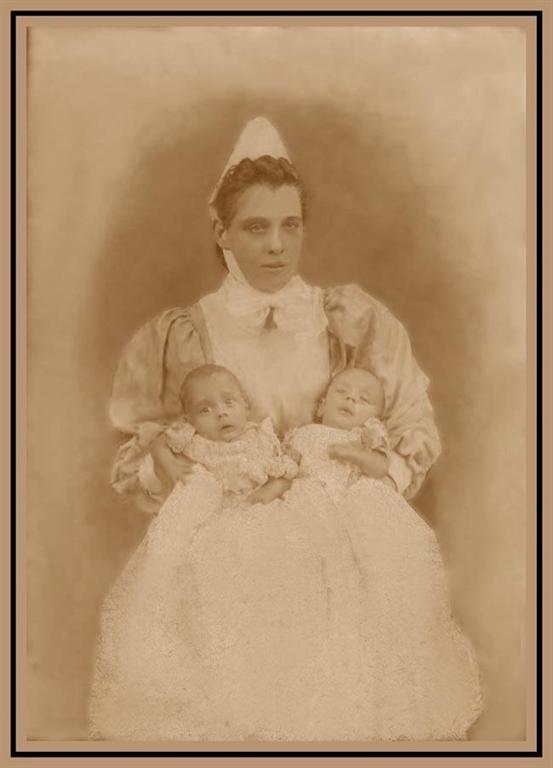
The Parr Twins
|
|
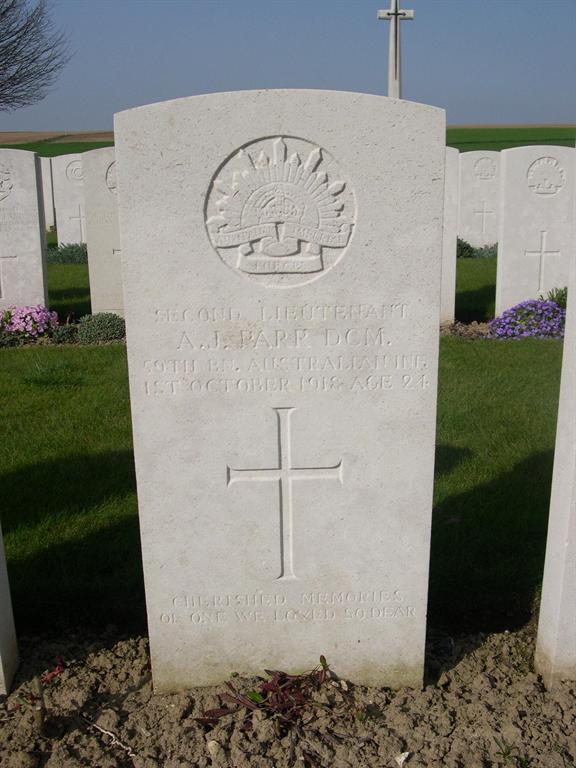
Prospect Hill Cemetery
|
Australian Memorial
|
|
Private 7877 Frank Parrott
|
|
2nd Bn, Leicestershire Regiment.
Died of Wounds 30th November 1914, Aged 24.
Buried Le Touret Military Cemetery, I. D. 9.
|
Frank Parrott was born in Thorpe Acre, Loughborough, in late 1889 or 1890. He was the son of John Charles Parrott and his wife Drusilla Harvey (née Hutchinson) who were married in Loughborough in late 1879. At the time of the marriage Drusilla already had a natural daughter Elizabeth Hutchinson who became part of the Parrott household and who was a half-sister or sister to Frank. Frank also had one full brother George and two full sisters Annie and Nora.
The Parrott family lived at Dishley Cottage, Thorpe Acre, between 1879 and 1901, but by 1911 had moved to 62 Derby Road, Loughborough. When the family lived in Thorpe Acre Frank's father was employed as a cattleman and farm labourer but in Loughborough he found employment as a brickyard labourer.
Frank trained as a butcher, but as soon as he was 18 he enlisted with the Army. When he enlisted it was noted on his record that he was 'deficient of right forefinger'. He joined the Leicestershire Regiment on 12th February 1906 and became Private 7877. After four months training at the Depot he was transferred to the 2nd Battalion at Colchester.
On 21st September 1906 he was posted to the 1st Battalion at Shorncliffe, Kent. On 4th March 1909 he was reposted to the 2nd Battalion and he embarked on HT Rohilla for India. Between 1907 and 1914 he served in Belgaum, Bellary, Bareilly, and Ranikhet. In February 1912, while in Bellary, he was taken to hospital with rheumatic fever.
In August 1914 Charles Frank's battalion was in Ranikhet with the Indian Corps (Gharwal Brigade) in the Meerut Division and was ordered to proceed to France. The troops moved to Karachi, embarked on the SS Devanha and the SS Elephanta and sailed on 21st September. The battalion arrived at Marseilles on 12th October 1914 and stayed at La Valentine Camp. On 26th October they transferred via Orleans, Lillers and Calonne-Ricouart to the frontline trenches. For the next month they came under continued shellfire, bombing and sniping from the enemy but, nevertheless, continued to strengthen the trenches. They also took part in the operations connected with the Battle of La Bassée and were given breaks in billets at La Couture.
On 23rd November the battalion was ordered to move to Gorre and took part in an attack on the enemy before returning to La Couture and further trench duty.
Frank, aged 24, died of wounds in No. 7 British Field Ambulance on 30th November 1914. He was buried in Le Touret Military Cemetery, Grave I. D. 9.
Frank's brother George served with the Royal Engineers and survived the war.
|
|
|
Private SR/10050 Harold Cubiss Partridge
|
|
6th Bn, Leicestershire Regiment..
Died of Wounds 4th May 1917, Aged 23.
Buried Warlincourt Halte British Cemetery, X. F. 2.
|
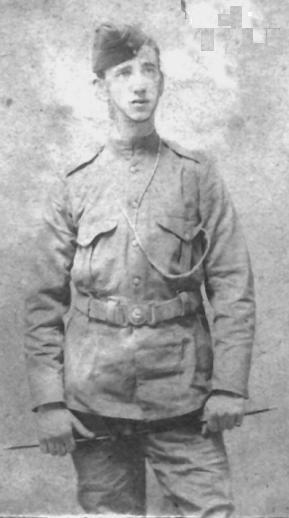
|
Harold Cubiss Partridge was born in Loughborough in the summer of 1893, his birth being incorrectly registered as 'Harold Cupiss Partridge'. Harold was the son of Harry Partridge from Loughborough and his wife Mary Ann (née Jennings) who came from Cheshire. 'Cubiss' was the maiden name of Harold's maternal grandmother. Harold's parents were married at St. Margaret's Church, Whalley Range, Manchester, in 1876, moved to Westminster, London and then settled in Loughborough where Harold's father ran a hairdressing business at 23 Baxter Gate. In 1901 the Partridge family lived at 123 Nottingham Road but by 1911 had moved to 24 Glebe Street. Harold's parents later moved to 8 Ratcliffe Road. Harold had three brothers Harry, John and Walter and five sisters Gertrude, Annie, Alice, Kate and Lilian. Two other siblings died young. Harold's brother Harry, who had served with the 1st Leicestershire Regiment in the 2nd Boer War, died in 1913.
In 1911 Harold was a storekeeper at the Empress Works. He was subsequently employed at the Brush Electrical Engineering Company. He enlisted on 15th August 1914 and joined the Leicestershire Regiment as Private 10050. Posted to the 6th (Service) Battalion he was sent from the Depot to Bordon, near Aldershot, Hampshire where the emphasis was on individual training, squadron and platoon drill. In March 1915 the battalion went into billets in Liphook. In April the 6th Battalion became part of the 37th Division of the Army and concentrated at Cholderton on Salisbury Plain. On 22nd July the Division began to cross the English Channel and after forfeiting a day's pay for unauthorised absence on 22nd July Harold arrived in France on 30th July 1915. The Division initially concentrated near Tilques not far from St.Omer.
In September Harold's battalion was sent to Berles-au-Bois, south-west of Arras and near the front line. In the months that followed the 6th Battalion did tours in the trenches, alternating with the 8th Leicesters who relieved them. The battalion was engaged in localised operations seeking a tactical advantage and remained in the area around Bienvillers and Bailleulmont until July 1916. On 8th June 1916 Harold was admitted to the 49th Field Ambulance with an undiagnosed problem, but he was discharged to his unit on 17th June.
On 1st July 1916 the 6th Battalion moved from Saulty to Humbercamps, where it was held in reserve for the Somme Offensive which had just begun. On 6th July the battalion marched to Talmas to join the Army's 21st Division. From 7th to 10th July the battalion was in Hengest-sur-Somme, and from there on 10th proceeded by route march, bus and train to Fricourt, Between 14th and 17th July the battalion took part in an attack on and successfully captured Bazentin-le-Petit Wood and village. On 20th July the battalion entrained at Ribemont for Saleux, after which they marched to Hengest. Travelling part of the way in lorries and part of the way on foot they reached Arras on 27th July and relieved the 8th Leicesters in the trenches on 7th August. The remainder of August was spent in the trenches and in billets in Arras.
On 4th September the battalion left Arras for Liencourt and after a week there for training moved to Fricourt and Bernafay Wood, east of Montauban-de-Picardie. Here from 19th to 24th September the men were employed in the improvement of communication and support trenches in preparation for a forthcoming attack on Gueudecourt. On 25th September the 6th Leicesters moved up to the assembly trenches in order to be ready to support the 8th and 9th Leicesters as they advanced. Progress was made north and east of Gueudecourt but as the Leicesters consolidated their position the village itself and its approaches were heavily bombarded by the enemy. This situation remained the same over the next few days. After the attack the battalion returned to bivouac at Bernafay Wood.
On 4th October the battalion began a three-day transfer by train and route march to Sailly La Bourse and began trench tours in the Hohenzollern Sector near Vermelles. They remained in the front line, in the support trenches or in Reserve until mid-December when they moved to Auchel. From 21st December 1916 to 28th January 1917 the battalion was in training at Auchel. Training was continued at Houtkerque until mid-February. Trench tours at Noyelles and Vermelles followed until the beginning of April when the battalion transferred to Hamelincourt. From 11th to 13th April the battalion was in action at the start of the Arras Offensive and on 3rd May in an attack on Fontaines les Croisilles.
Harold was wounded on 3rd May and died of his wounds in the 32nd Casualty Clearing Station on 4th May 1917. His parents received a letter from a comrade which said that that while Harold was lifting another man up who had been hit, a shell burst, killing the man, and striking Pte. Partridge on the back of the head. Harold had been taken into hospital and operated upon instantly, but his injuries were so severe that he died about ten o'clock the following morning. He was only 23.
Harold was buried in Warlincourt Halte British Cemetery Grave X. F. 2. He is remembered on the memorial in All Saints' Church, Loughborough, on the Brush Company Roll of Honour (inside the Carillon) as well as on the Carillon.
Harold's brother Walter served with the 1/5th Leicesters, was wounded in 1915, but survived the war. His brother John had been turned down by the militia in 1900 through ill-health.
|
|
|
|
Lieutenant Thomas Bond Paul
|
|
Indian Medical Service.
Killed in Action 19th September 1915, Aged 25.
Buried Basra War Cemetery Iraq. V. W. 18.
|
|
Thomas Bond Paul, born in 1890 in Loughborough, was the son of Dr. Reginald Paul, MRCS, surgeon and medical practitioner, and Amy Hodgson Paul (née Abbott) who were married at St Mark's Church, Notting Hill, London on 17th November 1879. Thomas had two older sisters Hilda and Margery, and one younger brother Geoffrey. Two other siblings Gilbert and Ruth had died shortly after birth.
From 1891 to 1901 the Paul family lived at 18/19 Fennel Street, but by 1911 had moved to 20 Woodgate, Loughborough. Thomas was educated at Loughborough Grammar School and took a special interest in the Loughborough Boat Club and in aquatic sports.
On leaving school, Thomas entered as a student at the Middlesex Hospital in London to qualify for the medical profession. He qualified in 1914 with a Licence in Medicine and Surgery of the Society of Apothecaries (LMSSA). In late July 1914 he entered for an examination for a commission in the Indian Medical Service. Out of sixteen successful candidates Thomas took the sixth position and he was appointed a Lieutenant in the Indian Medical Service on 1st August 1914. He left London for Bombay on the P & O liner SS Moldavia on 22nd August 1914.
Initially Thomas was sent to Belgaum, a city in the Indian state of Karnataka which served as a major military installation for the British Raj. He was then attached to the Indian Expeditionary Force commanded to protect the oilfields and pipeline near Basra, Mesopotamia.
The Indian formations contained some British units, including the 6th (Poona) Division to which Thomas Bond Paul had been assigned. The first part of this Division left Bombay on 16th October 1914 as part of Indian Expeditionary Force 'D', the remainder following at the beginning of November. They landed at the head of the Persian Gulf and after two days of fighting occupied the oil port of Al-Faw on 6th November. The capture of Basra followed on 21st November and of Qurna between 3rd and 19th December 1914. Early successes spurred more pushes deeper into Mesopotamia, despite the challenges of moving troops by boat through the marshlands of the Tigris and Euphrates rivers. An Ottoman counter-offensive to recapture Basra in April 1915 failed but not without some hard fighting and the British took Nasiriyah on 24th July 1915.
Conditions in Mesopotamia defied description. Extremes of temperature (120 degrees F was common), arid desert and regular flooding, flies, mosquitoes and other vermin all led to appalling levels of sickness and death through diseases such as cholera, malaria and dysentery. Medical arrangements were quite shocking, with wounded men spending up to two weeks on boats before reaching any kind of hospital. Major Markham Carter reported to the Government of India that he found men 'with their limbs splinted with wood strips from 'Johnny Walker' whisky boxes, 'Bhoosa' wire, and that sort of thing'.
Thomas Bond Paul, Surgeon in His Majesty's Indian Medical Service, died of disease on 19th September 1915 while on active service at Nasiriyah, Mesopotamia. He was buried at Basra War Cemetery (now in Iraq). There are 2,551 burials from the First World War here, 74 are unidentified. In 1935 it became necessary to remove the headstones as the salts in the soil were causing them to deteriorate. The names of those known to be buried in the cemetery were recorded on a screen wall.
Lieutenant Paul was a bachelor and died intestate. Letters of administration regarding his estate were issued to the attorneys of his father Reginald Paul, sole next of kin, on 5th May 1916, ratified by a Committee of Adjustment assembled at Belgaum by order of G.O.C. Poona Brigade and His Majesty's Court of Judicature in Bombay.
Lieutenant Paul is commemorated at Loughborough Grammar School, Emmanuel Church, Loughborough, and on the Carillon.
|
|
|
|
Private 100744 Albert Peak
|
|
2nd Bn, Leicestershire Regiment
Killed in Action 25th September 1915, Aged 23.
Commemorated Loos Memorial panel 42 - 44.
|
Albert Peak was born in 1892 in Loughborough, the son of Josiah Peak and Kate Peak (née Dexter) who were married in Loughborough in 1873. Albert had one older brother Robert, born in 1880. In 1881 the Peak family lived at 19 Meadow Lane, and Josiah was a blacksmith. By 1891 Kate had moved to 14 Court A, Moira Street in Loughborough with her son Robert while her husband Josiah was living in Attercliffe cum Darnall, Sheffield, earning a living at a boiler riveter.
Life must have become increasingly difficult for Kate Peak as in 1901 Albert, aged 8, is listed as having been adopted by an elderly widow, Ann Hoult, of 8 Court A, Barrow Street, Loughborough, while his mother was still living at Moira Street and working as a sorter in a dye works. In 1911 Albert was back living with his mother at 3 Court B, Pinfold Gate and was employed as a trimmer in a hosiery factory, but his mother Kate sadly died the following year.
Albert enlisted and joined the 2nd Battalion of the Leicestershire Regiment as a Private on 13th August 1914. He embarked for France at Southampton on 3rd June 1915 and joined his battalion on 17th June. The 2nd Leicesters were at this point alternately in the trenches or in billets while war training, in the area of Calonne and Vieille Chapelle north-east of Bethune. The corps was then rested in a quiet sector until it was deployed for the Battle of Loos.
The initial attack at Loos was to be made by three divisions, with the Meerut Division leading the attack on the Indian front; Blackader's brigade, with two Gurkha battalions and the 2nd Leicesters, was on its right flank. Whilst the attack successfully crossed no-man's land under cover of the barrage, the right flank of the brigade was caught up in defensive wire, and only one battalion successfully made its way into the German trenches. Gas also affected some of the men and the smoke caused a dense fog, making direction difficult. From the 2nd battalion 72 men were killed, 217 wounded, 42 were gassed, and 96 were recorded as missing. Albert was one of the men killed. Albert is commemorated on the Loos Memorial, Panel 42 - 44.
Albert's brother Robert served for twelve years with the 15th and 19th King's Hussars and in 1901 was in Meerut, India. As a Reservist he also fought on the Western Front in 1914 until he contracted rheumatic fever and was discharged as severely disabled.
|
|
|
|
Private 13245 George Thomas Pears
|
|
8th Bn, Leicestershire Regiment.
Died of Wounds 15th July 1916. Aged 25.
Buried Heilly Station Cemetery II. B. 43.
(his brother John Pears also fell see below)
|
George Thomas Pears was born in Loughborough in 1891, the son of Albert Pears and his wife Martha Ann (née Bradshaw) and was baptised on 19th January 1894 at Loughborough Methodist Chapel. George's parents were married in Loughborough in 1883 and they had eight children: John, Albert, William, George, Mary, Dorothy ('Dolly'), Ernest and Lilian. Ernest and Lilian, however, both died aged one. George's father was a labourer in 1891 and the family lived at 51 Paget Street, Loughborough. In around 1895 his father started a coal dealing business but unfortunately went bankrupt a couple of years later and in 1901 he was employed as a collector of the town's refuse, with the family living at 100 Leopold Street. In 1911 George's father was described as a 'Scavenger for the Corporation', George himself was a labourer and spinner in a hosiery factory, and the Pears family had moved to 51 Oxford Street. Between 1911 and 1914 George joined Messenger and Co. in Loughborough, the makers of Edwardian glasshouses.
George enlisted on 5th September 1914 in Loughborough and joined the 8th (Service) Battalion of the Leicestershire Regiment as Private 13245.
George was sent firstly to Aldershot for training and then to Shorncliffe in Kent at the end of February 1915. In April 1915 George's battalion became part of the newly established 37th Division of Kitchener's 2nd New Army and the Division began to concentrate on Salisbury Plain. George was billeted at Perham Down. On 25th June the units were inspected by King George V at Sidbury Hill. On 22nd July the Division began to cross the English Channel and George, having spent the previous five days in hospital, travelled to France on 29th July 1915. Initially the 37th Division concentrated near Tilques.
The 8th Battalion then moved via Watten, Houlie, St. Omer, Eecke and Dranoutre to Wulverghem and Berles-au-Bois, a short distance from the front line. In the months that followed the 8th Battalion did tours in the trenches, alternating with the 6th Leicesters who relieved them. They were Involved in operations in Bailleul, Le Bizet, Armentières, Mondicourt, Beauval and Berles-au-Bois. In April 1916 the 8th Leicesters moved to the Doullens area for six weeks for cleaning up, resting and training. In mid-May they returned once more to the trenches in the Bienvillers-Bailleulmont sector, but nearer Gommecourt. In June there was a series of nightly excursions into No-Man's Land with patrols attempting to gather information on the enemy's dispositions. On other occasions there were working parties out repairing the British barbed wire entanglements. The situation became increasingly hazardous as the month wore on when the Germans began to use a new and more accurate type of trench mortar.
The 8th Battalion did not participate in the first days of the Somme Offensive but was held in reserve. On 6th July they left billets at Humbercamps and marched to Talmas, continuing on the following day to billets in Soues. On 10th July the battalion marched to Ailly-sur-Somme, entrained for Méricourt and travelled from there by lorry to bivouacs in Méaulte. Between 10th and 13th July the battalion was in the trenches near Fricourt and subjected to fairly continuous enemy fire. On 14th July the battalion was involved in the attack on Bazentin Le Petit village and Bazentin Le Petit Wood and at some point George was wounded. He was taken to No. 36 Casualty Clearing Station at Heilly but died from his wounds on 15th July, aged 25. During the following week George's parents received news of his death in a letter from the sister in charge of the Casualty Clearing Station. After regretting the unfortunate circumstances which caused her to write she continued: 'He was admitted to this hospital last night suffering from a wound of the chest and one of the left leg. The wound of the chest was the fatal one. We did all we could to relieve him, but could not prevail to save his life. He passed away very peacefully at 10.40 a.m. today (Saturday). He will be buried by the chaplain in the military cemetery attached to this camp......He was a very brave patient'.
George is buried in Heilly Station Cemetery, Grave II.B.43. He is commemorated on the memorial at the former St. Peter's Church, Loughborough, and on the Roll of Honour from Messenger and Co. (held by the Carillon Museum) as well as on the Carillon.
George's mother Martha died a few months after George and his brother John, who served with the North Staffordshire Regiment, was killed in Mesopotamia in 1917.
|
|
|
|
Private 25584 John James Pears
|
|
7th Bn, Prince of Wales's (North Staffordshire) Regiment.
Killed in Action 25th Jan. 1917. Aged 31.
Buried Amara War Cemetery, Iraq XVII. D.2
(his brother George Pears also fell see above)
|
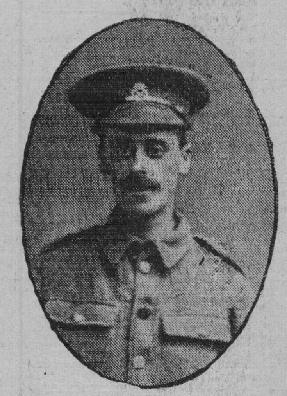
|
John James Pears was born in Woodthorpe, near Loughborough in 1885, the son of Albert Pears and his wife Martha Ann (née Bradshaw) and was baptised on 30th August 1885 at Loughborough Methodist Chapel. John's parents were married in Loughborough in 1883 and they had eight children: John, Albert, William, George, Mary, Dorothy ('Dolly'), Ernest and Lilian. Ernest and Lilian, however, both died aged one. John's father was a labourer in 1891 and the family lived at 51 Paget Street, Loughborough. In around 1895 his father started a coal dealing business but unfortunately went bankrupt a couple of years later and in 1901 he was employed as a collector of the town's refuse, with the family living at 100 Leopold Street.
On 12th April 1909 John married Sarah Ann Morley at Loughborough Methodist Chapel and in 1911 they were living at 15 Edward Street, Loughborough. John was working as an assistant grocer for Messrs. Peark's at Loughborough He also worked for a number of years for the Primitive Methodist Sunday School in Swan Street. John and Sarah's son John Leslie was born in Loughborough on 5th March 1914. By 1915 the couple had moved to 24 Ash Street, Burton upon Trent as John had secured employment with the Burton upon Trent Co-operative Society's Grocery Department as a grocer.
John enlisted in Burton on 10th December 1915. He joined the Prince of Wales's (North Staffordshire) Regiment and was mobilised on 31st May 1916. After John was mobilised his wife returned to live in Loughborough at 122 Paget Street.
From the Depot John was posted to the 3rd (Reserve) Battalion as Private 25585. The battalion was stationed at Forest Hall, Newcastle and was on duty with the Tyne Garrison. On 14th October 1916 John was once again posted, this time to the 7th (Service) Battalion which was with the Tigris Corps in Mesopotamia.
On 12th December the Tigris Corps, having been given reinforcements and now under the overall leadership of Lieutenant General Sir Frederick Stanley Maude began an advance from Sheik Sa'ad towards Kut, the ultimate aim being the capture of Baghdad. The exact date on which John joined 'A' Squadron of the 7th Battalion is unrecorded but he was certainly there by January as on 7th he was given one day's field punishment No. 2 'for discharging his rifle with neglect'. This punishment was being placed in fetters and handcuffs but not attached to a fixed object, together with hard labour and loss of pay. The soldier was still able to march with his unit.
Maude led the troops to victory at the Battle of Abdul Hassan on 9th January 1917. Ahead of the men now stood the Hai Salient, a strategically important position held by the Ottoman Empire. An attack was ordered for the 25th January 1917. Following an artillery bombardment the troops left the cover of the British lines and set off across No-Man's Land towards the enemy defences. Enemy machine guns fired at the North Staffords, slaughtering their ranks. Despite the fierce defence, the Staffords made it to the Salient. Now, the fighting was fierce close combat. Troops fought hand to hand, thrusting and stabbing with bayonets, or swinging loathsome entrenching tools, some of them customised for attack using nails or heavy weights.
John James Pears, aged 31, was killed in action during the successful attack on the Hai Salient. He is buried in Amara War Cemetery, Iraq, Grave XVII. D. 2. In 1933 the grave headstones were removed after it was found that they were being damaged by salts in the soil and a memorial wall erected instead with the names of the dead engraved upon plaques.
His brother George who was with the 8th Leicesters died on the Somme in July 1916. John's mother died shortly afterwards aged 59 in the autumn of 1916.
John's widow was remarried in Loughborough in 1923 to John A. Smith.
|
|
Amara War Cemetery.
In 1933, all of the headstones were removed from this cemetery when it was discovered that salts in the soil were causing them to deteriorate. Instead a screen wall was erected with the names of those buried in the cemetery engraved upon it.
|
|
Private 74166 James Pearson
|
|
Royal Defence Corps.
Formerly 2809 Cheshire Regiment
Died at Home 10th November 1918, Aged 28.
Buried Loughborough Cemetery 39-313.
|
James Pearson was born in Tansley, Derbyshire, in 1890. He was the son of John Pearson and his wife Catherine (née Carr) who were married in the Belper registration area in 1876. James's father was a railway and general labourer. James had two brothers Charles and Arthur and two sisters Annie and Kate. Two other siblings had died in infancy. When James was born the family was living at Golden Hill, Tansley, but by 1901 had moved to 27 Bolehill, Wirksworth, Derbyshire. After James's father died in 1906 James, who was a cotton tape weaver, moved with his widowed mother to 6 Barnet Street, Macclesfield, Cheshire. He later moved to 51 Hastings Street, Loughborough, possibly because his sister Annie and her husband Thomas Middleton lived there.
James enlisted in Macclesfield in November 1914 and joined the 1/7th Battalion of the Cheshire Regiment as Private 2809. He was sent to Northampton, Cambridge and then Bedford for training. On 13th May 1915 the battalion became part of the 159th Brigade of the 53rd (Welsh) Division of the Army and in July 1915 sailed from Devonport to Alexandria, Egypt, and then on to Gallipoli.
On 9th August 1915 the battalion landed on C Beach, Suvla, and immediately came under shellfire from the Ottoman forces. The battalion moved along the edge of the bay and was ordered to attack in the direction of a dip in the hills behind Anafarta Saghir. Nothing was said, however, as to where the enemy might be. In the late afternoon a party of men reached a hedge and trench near Sulajik and were told to put the trench in a state of defence. The night was quiet apart from some enemy sniping.
On 10th August the battalion was ordered to attack Hill 70 with the other battalions of the 159th, 158th and 160th Brigades. The attack, however, was unsuccessful and James's battalion suffered severely. A second attack was similarly unsuccessful. The Turks then attacked disguised at Gurkhas but were beaten off at some cost.
On 11th August the battalion moved further north to trenches which needed widening and improving and remained there until 26th August when they moved to a rest camp. On 31st August they proceeded to the trenches at Sulajik where they remained until 20th September apart from four days rest at Anafarta Saghir. On 18th September the Turks bombarded the Allied lines in the area of Chocolate Hill but no attack followed.
From 20th-30th October the battalion was in Divisional and then Corps reserve on No. 1 Beach, Lala Baba. During this time the men were rearmed with short rifles and long bayonets. At the beginning of November, the battalion, still in Corps reserve, was employed constructing defences at Lala Baba while being in a constant state of readiness to move if necessary. During late November the Lala Baba defences were garrisoned nightly by a group of three officers and 100 men from the battalion.
On 27th November two companies of the battalion were attached to the Highland Mounted Brigade for trench duties in Brigade reserve. The battalion's other two companies were attached to the 1/4th Cheshires in Lala Baba. James's battalion was evacuated from Gallipoli to Alexandria on 12th December but James, by this time, was no longer with them.
It is not known at what point James was evacuated from Gallipoli as his service record has not survived but he became ill, was taken to Alexandria and returned to England on a hospital ship. He was admitted to Queen Alexandra's Military Hospital, Millbank, London, SW1, on 18th December 1915 suffering from dysentery and a hernia. He was then moved to a convalescent camp at Eastbourne on 31st December 1915.
After he recovered James was transferred from the 1/7th Cheshires to the Royal Defence Corps as Private 74166.
The Royal Defence Corps (RDC) was a corps of the British Army formed in March 1916. It was initially formed by converting the (Home Service) Garrison battalions of line infantry regiments. Garrison battalions were composed of soldiers either too old or medically unfit for active front-line service; the Home Service status indicated they were unable to be transferred overseas.
The role of the corps was to provide troops for security and guard duties inside the United Kingdom; guarding important locations such as ports or bridges. It also provided independent companies for guarding prisoner-of-war camps. By April 1918 some 27,000 men were serving in the RDC. Of these, 14,000 were employed at prisoner of war camps.
The RDC consisted of two types of units, Protection Companies and Observer Companies. James joined No. 163 Protection Company, under the Northern Command of the RDC, but no records survive of where he was posted.
James died at the Fifth Northern General Military Hospital, Leicester, on 10th November 1918, aged 28. He may have been a victim of influenza. He was buried in Loughborough Cemetery, Grave 33-313.
James's mother had died in the summer of 1916 in Macclesfield.
James is remembered on the memorial in the former St. Peter's Church building, Loughborough, and on the Carillon.
|
|
|
|
Captain Lawrence Peel MiD
|
|
2nd Bn, Yorkshire Regiment.
Killed in Action 23rd October 1914. Aged 30.
Commemorated Ypres Menin Gate panel 33.
|
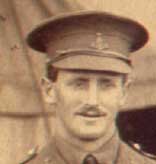
|
Lawrence Peel was the third son of William Peel, J.P., and Meliora Sybella Peel of
Knowlmere Manor, Newton, near Clitheroe, Lancashire. He was educated at Horris Hill,
Newbury, Berkshire and Winchester College. He passed out from Sandhurst with distinction
in 1903, being gazetted to the 2nd Battalion, Yorkshire Regiment. He served for several
years in India and South Africa becoming Adjutant of his battalion in 1907 and Captain in
1911.
At the outbreak of war he was with his regiment in Guernsey and proceeded to the front
within a few weeks in command of the Divisional Cyclist Company of the 7th Division.
Lawrence Peel was reported missing on the night of October 23rd-24th 1914, whilst leading
his Company in an attempt to capture some farm buildings on the Zaanvoorde Ridge, near
the Ypres-Menin road. His name was mentioned in one of Lord French's earliest despatches.
Lawrence Peel married the Hon. Ethel Laura Brooks, daughter of the 2nd Baron Crawshaw, in
1912 at St. George's, Hanover Square, London, and they had one son, Geoffrey William Peel,
born in 1913. His widow was remarried in 1925 to Lt. Colonel Sir Robert Edward Martin and
lived at The Brand, Loughborough.
|
|
Officers of the Second Battalion the Yorkshire Regiment, photographed in October 1914.
Captain Peel back row 1st on Left.
One thing that is remarkable about this photo is that of the 26 Officers photographed in October 1914, 10 were dead by the end of the year, 3 more were killed subsequently, 10 were wounded and / or taken prisoner, and only 3 appear to have survived the War unscathed.
Lieut. Philip Chabert KIDD. Killed 30 October 1914.
Capt Michael Day Wade MAUDE. Died of Wounds 14 October 1917.
Lieut. Q/Master Edward PICKARD. Survived the War, serving throughout with the 2nd Battalion.
2nd Lieut. William Arthington WORSLEY. Wounded and taken prisoner, 30 October 1914.
Lieut. Richard WALMESLEY. Killed 23 October 1914.
Captain Lawrence PEEL. Killed 24 October 1914.
Lieut. Frank Cooper LEDGARD. Killed 23 October 1914.
Captain Robert Boulton CORSER. Wounded 1 November 1914. Survived the War.
Captain Hugh LEVIN. Severely wounded 29 October 1914. Survived the War.
Lieut. Leslie Hanson MARRIAGE. Wounded 29 October 1914. Survived the War.
Lieut. Richard Herbert PHAYRE. Killed 26 October 1914.
Lieut. Hubert Stanley KREYER. Wounded 11 March 1915. Survived the War.
Lieut. COLLEY. Survived the War.
Lieut. THORNE. Survived the War.
Captain Bryan Seymour MOSS-BLUNDELL. Wounded November 1914. Survived the War.
Major Thomas Wolryche STANSFELD. Wounded November 1914. Survived the War.
Major Wilfred Beckett WALKER. Killed 29 October 1914.
Lieut. Colonel Walter Lorenzo ALEXANDER. Killed 14 May 1915.
Colonel Charles Arthur Cecil KING. Killed 30 October 1914.
Captain Cusack Grant FORSYTH. Killed 14 September 1916.
Captain Hugh William McCALL. Wounded October 1914. Survived the War.
Captain Ernest Scott BROUN. Killed 30 October 1914.
Captain Claud Gifford JEFFERY. Died of Wounds 24 October 1914.
Lieut. Walter Anfrid Auschar CHAUNCY. Wounded September 1915. Survived the War.
2nd Lieut. Hugh Geoffrey BROOKSBANK. Died of Wounds 16 December 1914.
2nd Lieut. Robert Henry MIDDLEDITCH. Wounded and taken prisoner, 30 October 1914.
|
|
|
|
Private 241292 Thomas Pepper
|
|
11th Bn, Leicestershire Regiment.
Previously 3616, 2/5th Bn Leicestershire Regiment.
Died of Wounds 3rd June 1918, Aged 35.
Buried Esquelbecq Military Cemetery, II. E. 14.
|
Thomas Pepper was born in late 1880 in Loughborough and baptised on 16th March 1881 at All Saints Church, Loughborough. He was the youngest son of Henry Pepper and his wife Martha (née Brooks, or Brookes) who were married at Emmanuel Church, Loughborough, on 12th August 1860. Thomas' father was a framework knitter of cotton hosiery and the family lived at 3 Court D, Pinfold Gate, Loughborough. Thomas had five brothers William, Harry, Joseph, Arthur and George and two sisters Emma and Mary.
In 1886, when Thomas was five, his mother died but his sister Emma took over the running of the household in Pinfold Gate and looked after her father and the four youngest children. Thomas' father died in 1900 and Thomas, who was now an iron turner, went to live with his brother William, wife Alice and family at 27 Rosebery Street. Between 1901 and 1902 he moved to Cobden Street. Thomas married Elizabeth Selby, who also lived in Cobden Street, on 25th January 1902 at Holy Trinity Church, Loughborough. The couple went to live at 36 Wellington Street and by 1911 had four children Thomas Leonard, Gladys, Elsie and Lilian. Between 1913 and 1918 they had four more children: Arthur, Eric, Dora and Eva and moved to 109 Station Road.
The date of Thomas' enlistment is unknown as his service papers have not survived but he was probably conscripted in late 1916. At the time he enlisted he was working at the Brush Company as a blacksmith's striker. He joined the 2/5th Battalion of the Leicestershire Regiment as Private 3616. He was subsequently posted to the 11th (Service) Battalion (Midland Pioneers) of the Leicestershire Regiment as Private 241292 and is likely to have been among one of the many drafts of reinforcements sent to the 11th Battalion between July and December 1917.
Pioneer battalions were created to provide the Royal Engineers with skilled labour for building roads and trenches, but they were still fighting soldiers.
On 1st July 1917 the 11th Battalion was at Mazingarbe where it had been since the beginning of February 1917, completing tunnelling work. Nearly every day during this period there had been casualties among the battalion and hospital admissions were comparatively high.
On 2nd July the battalion went by bus to Watou and marched to a camp of pitched tents for instruction until 18th July. On 19th July the battalion transferred by bus to a pitched camp at Dickebusch. From here they worked on the construction of light railways, track laying, ballasting and grading throughout August and September. In October they moved into skeleton houses in Ypres and began making them into billets as well as taking turns by company at a rest camp in Eecke.
At the beginning of November the battalion returned to Béthune, marched to Petit Servins, went by bus to Beaulencourt and marched to tents in Dessart Wood. Work from here included road repairing, digging a pipe trench, filling shell holes, dismantling old dugouts and loading and unloading. On 25th November the battalion moved to Bapaume to work on a broad gauge railway near Havrincourt. In early December the battalion was billeted in trenches near Ribecourt and then in tents at Etricourt before moving by bus to Hendricourt-lez-Ransart for rest, training and rifle drill until 26th December.
On Boxing Day the battalion moved to Courcelles-le-Comte to begin constructing Nissen huts and cookhouses for a new camp on the Achiet-le-Grand to Achiet-le-Petit road. This work lasted until 19th January 1918, after which the men went to Beaumetz-les-Cambrai and Beugny to lay duckboards, excavate sump holes, deepen trenches, and mine for new dugouts. The battalion also took over eight Lewis gun posts from the Royal Scots. In February the battalion was tunnelling and wiring, digging drains on the Vaulx-Morchies road, repairing the Vaulx-Lagnicourt road and grading and cutting a railway.
In March the battalion began excavating a tunnel, cleaning and widening a road to Lagnicourt, making dugouts and screens along the Morchies road and constructing a trench railway in Lagnicourt. This work continued until 20th March, just before the enemy began a Spring Offensive. On 21st March 1918 the battalion was ordered to 'Stand To' in the Vaulx-Morchies Line where it suffered a heavy enemy attack. Casualties over 21st and 22nd March totalled 231.
On 23rd March the battalion marched via Bapaume and Achiet-le-Grand to Pioneer Camp, Logeast Wood, and were almost immediately ordered to occupy an outpost position on the eastern edge of the wood. On the following day they marched to Puisieux-au-Mont and entrained for Doullens. After one night at Mondicourt or the Citadel on 26th March they entrained for Peselhoek or Proven and marched to F Camp. On 27th March the battalion moved to Ryveld where it remained until 3rd April re-equipping and training.
On 3rd April they moved by light railway from Remu Siding to Hellfire Corner and went into billets at White Chateau. From 4th-15th April the battalion did garrison work and also worked on trenches and the forward roads before moving to Carbine Camp. From here they worked on trench construction and wiring. On 28th April they moved to Hollis Camp, Brandhoek, and were ordered to battle positions in the Vlamertinghe-Hallabast line.
During May the men were occupied strengthening and improving a trench near the Poperinghe road, maintaining and wiring the Vlamertinghe line, demolishing huts in Carbine Camp and salvaging materials, working on an advanced post near Zillebeke and laying duckboarding. Hollis Camp was shelled twice and men also became casualties while at work. On 27th May the enemy also began a bombardment and opened an attack.
It is not known when Thomas was wounded but he died from his wounds, aged 35, on 3rd June 1918 and was buried in Esquelbecq Cemetery, Grave II. E. 14.
Thomas is commemorated on the memorial in the former St. Peter's Church building, Loughborough, on the Brush Company Memorial in the Carillon Museum, and on the Carillon.
|
|
|
|
Gunner 64559 Charles Percival
|
|
50th Coy. Royal Garrison Artillery.
Died Sierra Leone 27th Nov. 1916, Aged 37.
Commemorated Freetown (King Tom) Memorial.
|
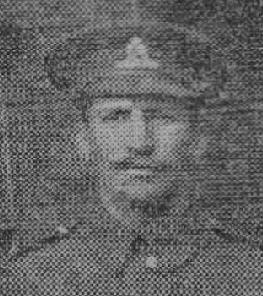
|
Charles Percival was born in 1879 in Shepshed. He was the son of Thomas Percival and his wife Mary (née Harris) who were married in 1874. Charles had six brothers Thomas, John, William, Enoch, Alfred and Harry and one sister Ada. He also had a half-brother Thomas Percival (formerly Harris) born four years before his mother married Thomas Percival. Charles's father was a farm labourer in 1881 and the Percival family lived at 44 Chapel Street, Shepshed. By 1891 they had moved to 117 Station Street, Loughborough and Charles's father was employed as a railway platelayer's labourer. They later moved to 35 Station Street. Charles's mother was a hosiery weaver until the family left Shepshed.
In 1900 Charles married Annie Pollard in Loughborough and by the end of 1901 they had two children Florence and Charles Leonard. In 1901 Charles was a storeman at an electrical works and he and Annie lived at 37 Pinfold Street, Loughborough. By 1911 they had moved to 38 Russell Street and Charles was now employed as a railway drayman while Annie was a point seamer of wool hosiery.
Charles's service record has not survived but it is known that he trained as Gunner 64559 with the Royal Garrison Artillery and was sent to Freetown in Sierra Leone, Africa. His service number indicates that he enlisted sometime towards the end of 1915.
Freetown was a port of considerable strategic importance to the Royal Navy and was defended by the 50th Company of the Royal Garrison Artillery with two 9.2 inch and four 6 inch guns. Eighty-three Sierra Leonian gunners were commanded by nine British officers and senior non-commissioned officers (NCOs). Freetown also had a military hospital which received sick troops from almost every convoy which passed through from Australia and New Zealand bound for England, German East Africa and Mesopotamia.
Within the area of Freetown itself malaria and typhoid were endemic. An A.I.F. soldier Bill Beckett recorded in his diary that Major Beckett said of Freetown: 'We are not here because we like it, but because someone must look after this outpost of the Empire. When you are at anchor in the Bay, you see the best of the Town, as it looks very pretty from the Bay; but it is really a rotten place, and is known as the white man's grave' . The walls of churches in Freetown are covered with memorial tablets to British soldiers who died while serving at the Garrison. Charles died from malaria, aged 37, on 27th November 1916.
Malaria in the First World War was an unexpected adversary. In 1914, the scientific community had access to new knowledge on transmission of malaria parasites and their control, but the military were unprepared, and underestimated the nature, magnitude and dispersion of this enemy. At least 1.5 million solders were infected, with case fatality ranging from 0.2 -5.0%. In sub-Saharan Africa many casualties resulted from high malaria exposure combined with minimal control efforts for soldiers considered semi-immune. Clinical treatment primarily depended on quinine, although efficacy was poor as relapsing Plasmodium vivax and recrudescent Plasmodium falciparum infections were not distinguished and managed appropriately.
Charles is commemorated on the Freetown (King Tom) Cemetery Memorial, Sierra Leone.
|
|
|
|
Private 62192 Enoch Percival
|
|
15/17th Bn, West Yorkshire Regiment (Prince of Wales's Own).
Killed in Action 19th July 1918, Aged 19.
Buried Merville Communal Cemetery Ext, III. E. 24.
(His brother Joseph also fell see below)
|
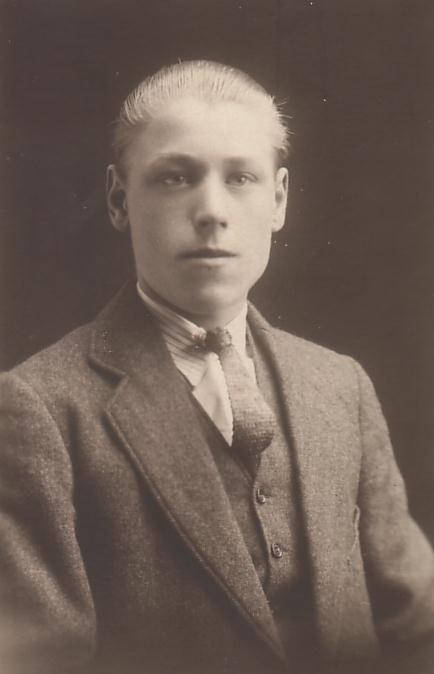
|
Enoch Percival was born in Loughborough in the spring of 1899 and baptised at the Methodist New Connexion Chapel, Leicester Road, Loughborough, on 21st May 1899. He was the son of Benjamin Percival and his wife Mary Ann Cooper (née Noon) who were married in Loughborough in 1887.
In 1901 Enoch's father was a brickyard labourer but in 1911 he was working as a pumping engine driver with a team from the Loughborough area on the construction of an estate in the Romford area of Essex. At this time he was away from home and lodging with the Joyce family at the Old White Hart, Romford.
Between 1901 and 1911 the Percival family lived at 21 Beacon Road, Loughborough, but Joseph's parents later moved to Dead Lane, then to 12 St. John Street, Long Eaton, Derbyshire, and finally to Ilkeston. Enoch had five brothers Herbert, Joseph, Walter, Arthur, and Frank. Another brother Charles died shortly after birth in 1895.
Enoch enlisted at Loughborough in 24th May 1917 as soon as he was eighteen years old. At the time he was a motor mechanic. He was sent to the 7th Training Reserve Battalion which was known as the 7th 'Young Soldier' Battalion and became Private 5/107486. The battalion was based at Rugeley Camp in Staffordshire.
A considerable reorganisation of the reserve infantry battalions had taken place on 1st September 1916. Before this date, most of the infantry regiments contained one or more reserve battalions of the regular and new armies. Recruits would be posted to these battalions for basic training, before they were posted to an active service unit. With the introduction of conscription, the regimental system simply could not cope with numbers and a new structure was put into place: the Training Reserve. The local nature of recruitment for infantry regiments was abandoned and the entire system centralised. After 1st September 1916, regimental distinctions disappeared and the reserve units of the regiments were instead redesignated as battalions of the Training Reserve.
On 8th August 1917 Enoch was transferred to the 10th Training Reserve Battalion, also based in Rugeley. This battalion was the 242nd 'Graduated' Battalion.
At some point after December 1917 Enoch was posted to the 15/17th Battalion of the Prince of Wales's (West Yorkshire) Regiment as Private 62192. This battalion had been formed from the Regiment's 15th and 17th Battalions, the 1st and 2nd Leeds Pals Battalions respectively, in December 1917. The precise date on which Enoch was posted to the Leeds Pals is unknown as his service record is badly damaged. The war diary of the 15/17th battalion, however, contains an entry for 5th April 1918 which notes that 503 Ordinary Rank reinforcements joined from England, all young soldiers but well-trained. It is very likely that Enoch was in this group which was unusually large as the battalion had just suffered 615 casualties in the March German Spring Offensive.
On 6th and 7th April the battalion moved to Caucourt for several days training, after which, on the evening of 10th April, they marched to Villers Brulin and were taken by bus to Brigade reserve at Merris. On 11th the battalion was in the support line for an attack on La Plate Becque, and on 12th part of the battalion moved to a new position at Rau de Leet near Merris while the remainder moved to Hondeghem. The men near Merr is came under heavy machine gun fire and moved to defend Meteren, on a line between Meteren and Bailleul, before leaving for Hondeghem.
On 19th April the battalion moved to Le Tir Anglais, south of Hazebrouck, and was in reserve until the end of the month. During this time they dug a defensive line from Grande Marquette Farm to the railway line, completed the wiring and connected up posts. At one point some of the men found themselves having to counter-attack the enemy at Moyenville and hold the line for 36 hours before being overwhelmed.
From 1st-9th May the battalion was in camp, training and also providing working parties entrenching a line of defence in front of Le Tir Anglais farm. On 9th they went into the front line west of Meteren and experienced much sniping and machine gun fire from the enemy. Enemy planes also bombed the right front and back areas. After a break in Thieushouk, during which the battalion provided working parties to dig on the Roukloshille Switch line, the men returned to the front for another trench tour.
On 25th May the battalion was taken by bus from Caestre to Heuringhem and marched to billets in the Wardrecques area. They stayed here until 15th June for cleaning up, inspections, parades and training and enjoyed concert parties by 'The Owls'. The battalion then marched to Hondeghem and were billeted in barns and under canvas in fields while they dug trenches in the Hazebrouck defences. After another trench tour the battalion began preparations for an attack on La Plate Becque. This took place on 28th June and was very successful, the battalion capturing ten machine guns and three trench mortars.
In early July, after a short period in Brigade reserve, the battalion completed three trench tours. During the third tour the enemy was abnormally active and Enoch, aged 19, was killed in action on 19th July 1918. He was buried in Merville Communal Cemetery Extension. Grave III. E. 24.
Enoch's brothers Joseph and Arthur also served with the Leicestershire Regiment. Joseph died in 1922 but Arthur survived.
|
|
|
|
Private 2363 Joseph William Percival
|
|
1/5th Bn, Leicestershire Regiment.
Died at Home 20th April 1922, Aged 30.
Buried Loughborough Cemetery, 28 - 210.
(His brother Enoch also fell see above.)
|
Joseph William Percival was born in Loughborough in late 1891 or early 1892 and baptised at the Methodist New Connexion Chapel, Leicester Road, Loughborough, on 24th January 1892. He was the son of Benjamin Percival and his wife Mary Ann Cooper (née Noon) who were married in Loughborough in 1887.
In 1901 Joseph's father was a brickyard labourer but in 1911 he was working as a pumping engine driver with a team from the Loughborough area on the construction of an estate in the Romford area of Essex. At this time he was away from home and lodging with the Joyce family at the Old White Hart, Romford. In 1911 Joseph was working as a fitter of hosiery machines.
Between 1901 and 1911 the Percival family lived at 21 Beacon Road, Loughborough, but Joseph's parents later moved to Dead Lane, then to 12 St. John Street, Long Eaton, Derbyshire, and finally to Ilkeston. Joseph had five brothers Herbert, Walter, Arthur, Enoch and Frank. Another brother Charles died shortly after birth in 1895.
Joseph, who had previously been with the 5th Battalion of the Leicestershire Regiment for seven years, enlisted for war on 14th September 1914. As Private 2363 he was sent to Luton for training.
The battalion sailed for France on 26th February 1915 in very rough seas. They travelled by train via Rouen, Abbeville and St. Omer to Arneke where they detrained for Hardifort. The battalion was then held in reserve for, but did not take part in the Battle of Neuve Chapelle. For the whole of April they were in trenches near Wulverghem and subjected to continual sniping by the enemy, and then moved on to Zillebeke, followed by a tour in the area of Mount Kemmel. After this they were moved to a slightly different part of the line to relieve the Sherwood Foresters.
From July to September 1915 the battalion was in the area of Zillebeeke and Ouderdom, before moving to Hesdigneul in October, La Couture in November and Merville and Thienne in December. January 1916 was taken up with a potential move of Joseph's battalion to Egypt which was aborted at Marseilles, the battalion being returned to Candas, and the area of Vimy Ridge.
In mid-February 1916 the 1/5th Battalion took over the line north of the River Ancre opposite Beaumont-Hamel in France. On 29th February the battalion moved to the area of Doullens where the men worked on improving the trenches despite being subjected to a considerable bombardment from the enemy with mines and craters being blown.
In mid-February 1916 the 1/5th Battalion took over the line north of the River Ancre opposite Beaumont-Hamel in France. On 29th February the battalion moved to the area of Doullens where the men worked on improving the trenches despite being subjected to a considerable bombardment from the enemy with mines and craters being blown.
From 9th March 1916 the 1/5th Leicesters were in the area of Vimy Ridge, Pas de Calais, either in the front line, in support, in reserve or at rest. On 27th April the battalion was sent to the neighbourhood of Neuville St. Vaast to work with the French and English tunnellers and then to billets in Luchaux for bayonet training. Around this time Joseph was wounded in the buttocks and on 13th May he was brought back to England.
On 16th September 1916 Joseph was posted to the 4th (Reserve) Battalion of the Leicesters but his health did not improve and on 8th November 1916 he was discharged from the Army. He was awarded a Silver War Badge.
On 9th September 1917 Joseph married Florence Mary Ford at Fairfield Wesleyan Chapel, Chapel-en-le-Frith, Derbyshire. At the time of his marriage Joseph was a clerk and slot-collector. Joseph and Florence set up home at 2 Biggin Street, Loughborough, and had two children John and Kathleen.
Joseph died on 20th April 1922 in Loughborough, aged 30. His daughter Kathleen was born in the autumn of 1922. Joseph's widow did not remarry. She moved to the Buxton area of Derbyshire with her children.
Joseph's brothers Enoch and Arthur also served with the Leicestershire Regiment in the war. Enoch was killed in 1918 but Arthur survived.
. |
|
|
Joseph William Percival
Has no memorial on his grave.
|
|
Second Lieutenant Albert Perkins
|
|
197th Coy. Machine Gun Corps.
Previously 149th Coy Machine Gun Corps and also Pte. PS/3092, 21st (Service) Battalion (4th Public Schools), Royal Fusiliers.
Killed in Action 4th October 1917, Aged 27.
Buried Duhallow A.D.S. Cemetery I. D. 31.
(his brother Norman G. Perkins also fell see below)
|
|
|
Charity match for the Loughborough Hospital against a Loughborough Wednesday team.
Albert Perkins seated front row on the right.
|
Albert Perkins was born in Loughborough 1890. He was the son of Harry Perkins and his wife Phoebe (née Turner) who were married on 26th August 1886 in the Basford area of Nottinghamshire.
Albert had two brothers Harry and Norman and one sister Ellen. In 1891 the family lived at 27 Storer Road, Loughborough but by 1901 had moved to Ludlow House, 1 Cumberland Road.
Albert's father trained as a solicitor firstly with Mr. William White Goode and then with Alderman Clifford. In 1900 he was appointed Assistant Town Clerk of Loughborough and shortly afterwards Town Clerk, a position he held until 1930.
Albert attended Loughborough Grammar School from September 1901 to 1906. In 1911 Albert was articled to the architect, Mr. A. E. King of Messrs A. King and Co. of Baxtergate and on Mr. King's death joined Mr. Haynes in carrying on the business. Albert also enjoyed football.
Albert enlisted in September 1914 with the 21st University and Public Schools (UPS) Battalion. He was initially sent to Epsom, Surrey and moved to Ashtead in October 1914. Trench digging was practised at Caterham and Woldingham in January 1915. In February 1915 he moved into a brand new camp at Woodcote Park, Epsom. Once men of the UPS had entered camp they became Royal Fusiliers forming the 18th, 19th, 20th and 21st (Service) Battalions. Albert was now Private PS/3092 in the 21st (Service) Battalion (4th Public Schools) of the Royal Fusiliers. As well as exercising in Woodcote Park they also used Epsom Downs, Headley Heath and the surrounding countryside in order to attain a level of efficiency that would allow them to go to war. In June 1915 the battalion moved to Clipstone Camp, Nottinghamshire, as part of the 98th Brigade, 33rd Division. The battalion then moved to Tidworth, Salisbury Plain, on 8th August 1915 and was sent to France on 14th November 1915.
After concentrating at Morbecque with the 33rd Division the battalion moved to Béthune and was sent to learn the skills of real trench warfare in the area around La Bassée Canal. On 2nd March 1916 Albert was admitted to No. 4 Stationary Hospital at Arques with scabies and discharged to duty on 11th March.
Albert officially left the Royal Fusiliers on 23rd April 1916, having returned to England in March 1916 to join an Officer Cadet Unit. Albert was sent to No. 1 Officer Cadet Battalion at Membland Hall, Newton Ferrers, Devon, where some of the cadets published a magazine entitled Ye Gasse Shelle.
Albert gained his commission as Temporary 2nd Lieutenant (on probation) on 5th August 1916. During the autumn he married Marjorie Mary Andrews in Nottingham. On 22nd November 1916, having completed his probation, he joined the 149th Machine Gun Corps in France at Albert. Albert and Marjorie's son, Eric, was born in early 1917 in King's Norton, Warwickshire.
On 1st December 1916 Albert's company marched to billets in Bresle, and after overhauling the guns and limbers, began a period of training until 22nd December. After Christmas they moved to Bazentin-le-Petit and for most of January 1917 were in the front line carrying out indirect night firing, two breaks being taken at High Wood East Camp. From Albert on 25th January the company marched to Dernancourt for training until 8th February, after which they moved to Fontaines-les-Cappy and went into the line from 12th to the 26th February. Here they carried out night firing while being subjected to heavy enemy shelling including some lachrymatory (tear gas) shells. Most of March was spent at Foucaucourt in training. Between 30th March and 10th April the company moved by stages to Hauteville before going into the Wanquetin-Arras line from 11th- 23rd April.
On 27th April the company entrained for Pommera. Two further moves to Souastre and Mercatel took place at the beginning of May, followed by training at Pommera until 17th May. Towards the end of May two sections were in the line at Sensée Valley, west of St. Leger. Relieved on 27th May the company moved to Monchy-au-Bois to clean the guns and rest. From 1st-18th June further training took place and the war diary includes a note on 9th June as follows: '2nd Lt. A. Perkins plus I OR [Ordinary Rank] (batman) to Machine Gun School [Camiers] for instruction'. Between 25th and 28th June all twelve guns assisted the 150th Infantry Brigade in an operation.
From 1st -11th July the company carried out indirect night fire on enemy tracks and works and fired at hostile aircraft, including 4,700 rounds in one day on new enemy trenches. After four days rest at Mercatel they were back in the line firing on the north-east corner of Triangle Wood and on more aircraft. On 3rd August the enemy bombarded the Brigade with gas shells. Relieved on 4th they had eight days rest in camp before returning to fire every day on targets including the suspected enemy HQ, Fontaine Trench and Cherisy Bridge.
At some point around this time is known that Albert was sent to hospital. He recovered in about a month, was sent to the Base in France and posted to 197th Machine Gun Corps in Ledringhem. He joined his new company on 28th September just before it moved to Riegersburg Camp on 1st October. On 10.00am on 4th October, at the Battle of Broodseinde, Albert, aged 27, was hit by a shell splinter and died five minutes later.
Albert's wife received a letter of sympathy from the Captain of the Machine Gun Company to which her late husband was attached. He expressed the deepest sympathy of his brother officers, and said: 'Although he only joined this company a week ago, we were all beginning to have a very warm regard for him, and I am sure that he had not been so unfortunately taken from us we should soon have learned to love him. His bright cheery disposition and companionable ways makes us feel his loss keenly. This being so with us, who only knew him for one short week, makes it very easy for us to have some little idea as to your feelings at the loss of one who must have been dearer to you than life itself'. He said that he was with Second Lieutenant Perkins when he died. During a terrible bombardment a shell burst just outside their shelter and a splinter struck him on the right breast, and in five minutes he passed away, quite peacefully and painlessly. He added: 'He died a soldiers death- to my mind the most glorious death to die- but he was young and fair, cut off in his prime, which is always so sad. He showed all the qualities of a gallant soldier and a gentleman, which though, I hope will cheer you when you think of the departed dear one'.
Albert was buried at Dunhallow A.D.S. [Advanced Dressing Station] Cemetery, Ypres, Grave I. D. 31. He is remembered on the Memorial in the former St. Peter's Church building, Loughborough, and on the Carillon.
His brother Norman who served with the R.N.V.R. died in 1919.
Albert's widow was remarried in 1921 to Albert W. Bennett and moved to Maidstone, Kent.
|
|
|
|
Ordinary Telegraphist Z/7455 Norman George Perkins
|
|
Wireless Station (Aberdeen) HMS President IV, Royal Naval Volunteer Reserve.
Died in the Royal Naval Hospital, South Queensferry, West Lothian, 23rd June 1919, Aged 18.
Buried Loughborough Cemetery, 13/241.
(his brother Albert Perkins also fell see above)
|
Norman George Perkins was born in Loughborough on 28th June 1899 and baptised at All Saints Church, Loughborough, on 30th July 1899. He was the son of Harry Perkins and his wife Phoebe (née Turner) who were married on 26th August 1886 in the Basford area of Nottinghamshire.
Norman had two brothers Harry and Albert and one sister Ellen. In 1891 the family lived at 27 Storer Road, Loughborough but by 1901 had moved to Ludlow House, 1 Cumberland Road.
Norman's father trained as a solicitor firstly with Mr. William White Goode and then with Alderman Clifford. In 1900 he was appointed Assistant Town Clerk of Loughborough and shortly afterwards Town Clerk, a position he held until 1930.
Norman attended Loughborough Grammar School from January 1908 to July 1915. His obituary in the school alumni magazine notes that: 'He was so sociable and friendly and so good-tempered that it was impossible to be angry with him. He had quite a genius for drawing and his family's aptitude for music, [although] he was never very prominent at games'.
Norman also attended the Sunday School at St. Peter's Church, Loughborough, and was a member of the church choir.
When he left school Norman was employed in the offices of the Empress Works but as his health was not good he gave up his post there and was ultimately obliged to undergo a serious operation. As soon as he recovered, on 8th April 1918, he joined the Royal Naval Volunteer Reserve.
Norman was taken on at Bristol as Ordinary Seaman Z/7455 and on 13th April 1918 sent to HMS President IV. This was a shore establishment and the London accounting base, from 1918 to 1926, which handled the accounts of the commands of the Coastguard ships and the Reserves. On 5th August 1918 Norman became an Ordinary Telegraphist, and on 20th September he was posted to the Wireless Station in Aberdeen.
In 1919 Norman was taken ill and he died from Hodgkin's Disease in the Royal Naval Hospital, South Queensferry, West Lothian, on 23rd June 1918. He was 18 years old.
Norman's funeral was held at St. Peter's Church, Loughborough, and he was buried in Loughborough Cemetery, Grave 13/241.
|
|
|
|
Private 18884 James Phillips
|
|
6th Bn, Leicestershire Regiment.
Died of acute nephritis 17th December 1915, Aged 36.
Buried Humbercamps Communal Cemetery Extension I. D. 3.
His brother Owen Phillips also fell See below.
|
James Phillips was born in 1879 in Loughborough and baptised on 23rd August 1886 at Emmanuel Church, Loughborough. He was the son of John Owen Phillips and his wife Mary Ann (née Woolley) who were married at Emmanuel Church on 23rd December 1875. In 1881 James' father was a stoker in a hosiery factory, but by 1891 had become a bricklayer's labourer. In 1881 the family was living at Court A, 3 Wellington Street, Loughborough. By 1891 they had moved to 32 Sparrow Hill and further moves followed to Wheatsheaf Yard, to 11 Court C, Ward's End, and to 2 Brick Yard. In 1898 when James was 19 his father died, aged 43. By 1901 James was a brick maker and his mother a hosiery seamer. His mother died in 1905. James had five brothers Harley, Edward, Owen, John and Joseph and four sisters Anne, Sarah, Mary and Florrie. James' brother John died in 1913.
On 31st May 1901 James, now calling himself 'James Bullimer Phillips', married Frances Humphrey at Christchurch, Mountsorrel. By 1911 they had three children Wilfred, Ernest, Frances, had moved to 4 Rudkin Street, Leicester and James was employed as a slater's labourer. Between 1911 and 1915 two more daughters Edith and Gladys were born, although Gladys died in infancy.
The date that James enlisted is unknown as his service papers have not survived, but it was either in 1914 or 1915. He joined C Company of the 6th (Service) Battalion of the Leicestershire Regiment, part of Kitchener's First New Army, as Private 18884. The battalion was training in Aldershot from 1914 to March 1915 and then moved to Liphook, Hampshire.
In April 1915 the 6th Battalion became part of the 37th Division of the Army and concentrated at Cholderton on Salisbury Plain. On 25th June the 37th Division was inspected by King George V at Sidbury Hill. On 22nd July 1915 the Division began to cross the English Channel and by 2nd August all units were concentrated near Tilques not far from St.Omer in the Nord-Pas-de-Calais. It is possible that James did not go to France at this point but was among a later batch of reinforcements in October or November 1915.
At the beginning of August the battalion marched over several days to Locre before going into the trenches, firstly at Wytschaete for instruction in trench warfare, and then at Mont Kemmel. Some of the battalion then participated in working parties at Armentières before, on 26th August, the whole battalion entrained at Doullens and marched to Berles au Bois, south-west of Arras and near the front line.
In the months that followed the 6th Battalion did tours in the trenches, alternating with the 8th Leicesters who relieved them. The battalion was engaged in localised operations seeking a tactical advantage and remained in the area around Berles au Bois. Conditions in the trenches deteriorated badly as the year drew to a close.
James, aged 36, died of acute nephritis on 17th December 1915. He was buried in Humbercamps Communal Cemetery Extension Grave I. D. 3.
James' brothers served in the war, Harley with the Lincolnshire Regiment, Edward, Owen and Joseph in the Royal Navy. Owen was lost at sea in 1914, but the other brothers survived the war.
|
|
|
|
Able Seaman 217302 Owen Phillips
|
|
HMS Bulwark Royal Navy.
Killed in Action 26th November 1914, Aged 33.
Commemorated Portsmouth Naval Memorial 2.
His brother James Phillips also fell See above.
|
Owen Phillips was born in late 1881 in Loughborough and baptised on 26th June1886 at Emmanuel Church, Loughborough. He was the son of John Owen Phillips and his wife Mary Ann (née Woolley) who were married at Emmanuel Church on 23rd December 1875. In 1881 James' father was a stoker in a hosiery factory, but by 1891 had become a bricklayer's labourer. In 1881 the family was living at Court A, 3 Wellington Street, Loughborough. By 1891 they had moved to 32 Sparrow Hill and further moves followed to Wheatsheaf Yard, to 11 Court C, Ward's End, and to 2 Brick Yard. In 1898 when Owen was 16 his father died, aged 43. By 1901 Owen was a foundry labourer and his mother was a hosiery seamer. His mother died in 1905. Owen had five brothers Harley, James, Edward, John and Joseph and four sisters Anne, Sarah, Mary and Florrie. James' brother John died in 1913.
Owen enlisted in the Royal Navy to serve a 12 year engagement on the 19th September 1901, his reckonable service to commence on the 5th November 1902. He gave his date of birth on enlisting as the 5th November 1884 but this was incorrect. In September 1901 he was 19 years old, not 17.
He was allocated the service number 217302 in Portsmouth, Hampshire, and it was noted that he had cross flags, a sailor's bust and V.R.R. tattooed on his left forearm,
Owen joined HMS Northampton, a shore establishment, as a Boy 2nd Class and was promoted to Boy 1st Class on 18th December 1901. Between 1901 and 1914 Owen served on a number of Royal Navy ships including HMS Cleopatra, HMS Research, HMS Duke of Wellington, HMS Drake, HMS Firequeen, HMS King Edward VII, HMS Hecla, HMS Prince George, HMS Prince of Wales, HMS Revenge, HMS Hercules, HMS Good Hope, and HMS Bulwark. These ships included a Comus-class screw corvette, an armoured cruiser, a Majestic-class pre-dreadnought battleship, a King George V-class battleship, a Royal Sovereign-class battleship, a Drake-class armoured cruiser and depot ships. Owen also served in the shore-based establishments HMS Victory, HMS Victory I and HMS Excellent and received training at the Royal Naval School Gunnery, Whale Island, Portsmouth. In 1902 he was promoted to Ordinary Seaman and in 1903 to Able Bodied Seaman. In 1904, while on HMS Drake he was sentenced to four days in cells for an unspecified misdemeanour.
On 3rd September 1910, Owen, who was serving aboard HMS Prince of Wales married Alice Louisa Stevens at St. Bartholomew's Church, Charlton, Dover, Kent. While Owen was at sea Alice remained living with her parents at 31 Wyndham Road, Dover. In 1914 Owen and Alice had a daughter Lilian.
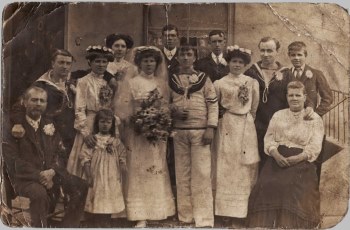
The Wedding of Owen Phillips and Alice Stevens
Owen joined HMS Bulwark on 18th December 1913. On 26th November 1914 the battleship, part of the 5th Battle Squadron, was moored to No.17 buoy in Kethole Reach on the River Medway, almost opposite the town of Sheerness, Isle of Sheppey, Kent. Many of her crew had been given leave the previous day. They had returned to the Bulwark at 7 o'clock that morning and the full complement was on board. The usual ship's routine was taking place. Suddenly a roaring and rumbling sound was heard and a huge sheet of flame and debris shot upwards. The ship lifted out of the water and fell back. There was a thick cloud of grey smoke and further explosions. When the smoke eventually cleared, the Bulwark had sunk without trace, with the loss of 736 men including Owen, aged 33. Two of the 14 survivors died later in hospital.
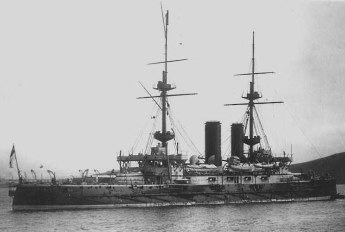
HMS Bulwalk
The explosion was likely to have been caused by the overheating of cordite charges that had been placed adjacent to a boiler room bulkhead. The explosion was heard in Whitstable, 20 miles away, and in Southend where the pier was shaken by the explosion but not damaged. The nearby areas of Sheerness and Rainham took the brunt of the blast with reports of damage to property being made. Fragments of personal items also showered down in the streets of Sheerness.
Owen is commemorated on the Portsmouth Naval Memorial, Panel 2, and on the memorial in Emmanuel Church, Loughborough, as well as on the Carillon.
|
|
|
|
Corporal 4681
Leonard George Arthur Phipps, afterwards Pilkington
|
|
1/10th (Scottish) Bn. The King's (Liverpool Regiment).
Died of Wounds 16th September 1916, Aged 23.
Buried St. Sever Cemetery, Rouen, Grave B. 19. 29.
(His brother John Herbert also fell see below)
|
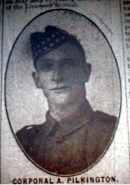
|
Leonard George Arthur Phipps, known to his family as 'Arthur', was born at 18 Factory Street, Loughborough in 1893. He was the son of John
Phipps, a mechanic and fitter of hosiery frames, and his wife Catherine (née Carrington) who were married in Loughborough in 1881. Arthur had
one brother John Herbert, known as 'Herbert' and three sisters Mary, Alice and Sarah. When Arthur's mother died in 1900 his maternal aunt Emma
Pilkington (née Carrington) and her husband Henry, a fitter, took Arthur aged seven and Herbert aged ten to live with them. In 1901 Arthur and
Herbert were living at 205 Bristol Road, Northfield, Worcestershire. Arthur's father, meanwhile, remained in Loughborough with his three
daughters, having moved to 10 Duke Street.
Not long after 1901 Emma and Henry Pilkington moved with their nephews Arthur and Herbert to 26 Sefton Road, Sandylands, Heysham, Lancashire,
and in 1902 Emma and Henry had a son of their own called Alec Henry, a cousin for Arthur and Herbert. Arthur's whereabouts in 1911 are unknown
but their father died that year in Loughborough. Arthur and Herbert's sisters were all married by 1912 and two of them Alice and Sarah stayed
in Loughborough.
Arthur enlisted in early June 1915 at Lancaster and joined the 1/10th (Scottish) Battalion of the King's (Liverpool Regiment) as Private 4681
'Arthur Pilkington'. He was sent to France on 6th September 1915 and took part in the second attack on Bellewaarde Ridge on 25th September.
This was a disastrous diversionary attack launched to draw German attention away from the opening day of the Battle of Loos.
On New Year's Day 1916 the battalion was resting in Reninghelst south-west of Ypres but on 8th January transferred to Bailleul and entrained
for Pont Rémy. From there they marched to Heucourt-Croquoison south of Abbeville in Picardy where they remained until 4th February and
received training in physical drill and bayonet fighting, musketry, range practice, route marching and French digging. The Army's 55th
Division, to which the battalion now belonged, was inspected at Hallencourt on 29th January. On 4th February they moved to Prouville where
training continued until 12th February when they went into the trenches at Bellacourt south-west of Arras. Trench tours alternated with time
in billets at Grosville and La Herlière. At some point Arthur was promoted to the rank of Corporal.
On 8th March the battalion moved to Saulty and continued with trench tours until the end of June. On 12th-13th July they moved to a position
in front of Agny village, the battalion being in Brigade Reserve. On 18th July they were ordered to move to Bernaville and in late July they
took over a section of front line near the village of Guillemont, Somme. They were in action at the Battle of Guillemont (3rd-6th September),
the Battle of Ginchy (9th September) and the Battle of Flers-Courcelette (15th-22nd September).
The date when Arthur was severely wounded in action is unknown but he died on 16th September 1916 in No. 9 General Hospital, Rouen. He was
only 23. He was buried in St. Sever Cemetery, Rouen, Seine-Maritime, Grave B. 19. 29. His effects were shared between his aunt Emma Pilkington
and his three sisters.
Arthur is remembered under the name 'Arthur Phipps' on the memorial at All Saints Church, Loughborough. He is also remembered under the name
'Arthur Pilkington' on the war memorial as well as on his brother's gravestone in St. Peter's Churchyard, Heysham, and on the Morecambe and
Heysham War Memorial, Memorial Gardens, Marine Road, Morecambe.
Arthur's brother Herbert served with the 51st Auxiliary Bus Company of the Army Service Corps and died of pneumonia while still in service in
1918.
|
|
|
|
Private DM2/208114
John Herbert Phipps, afterwards Pilkington
|
|
Army Service Corps, 51st Auxiliary Bus Company
Died at home 7th November 1918, Aged 28.
Buried in St. Peter's Churchyard, Heysham, Lancashire.
(His brother Arthur also fell see above)
|
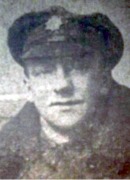
|
John Herbert Phipps, known to his family as 'Herbert', was born at 18 Factory Street, Loughborough in 1890. He was the son of John Phipps, a mechanic and fitter of hosiery frames, and his wife Catherine (née Carrington) who were married on 13th March 1881 at Holy Trinity Church, Loughborough. Herbert had one brother Leonard George Arthur, known as 'Arthur' and three sisters Mary, Alice and Sarah.
When Herbert's mother died in 1900 his maternal aunt Emma Pilkington (née Carrington) and her husband Henry, a fitter, took Herbert aged ten and Arthur aged seven to live with them. In 1901 Herbert and Arthur were living at 205 Bristol Road, Northfield, Worcestershire. Herbert's father, meanwhile, remained in Loughborough with his three daughters, having moved to 10 Duke Street.
Not long after 1901 Emma and Henry Pilkington moved with their nephews Arthur and Herbert to 26 Sefton Road, Sandylands, Heysham, Lancashire, and in 1902 Emma and Henry had a son of their own called Alec Henry, a cousin for Herbert and Arthur. By 1911 Herbert, now calling himself 'Herbert Pilkington', had set up business as a newsagent in West Street, Morecambe. Herbert's father died in 1911 in Loughborough. Arthur and Herbert's sisters were all married by 1912 and two of them Alice and Sarah stayed in Loughborough.
Herbert enlisted at Morecambe and joined the 51st Auxiliary Bus Company of the Army Service Corps as Private DM2/208114 using the name 'John Herbert Pilkington'. He trained at Hounslow, Middlesex, before being sent to France in 1916 or later to join the 51st Auxiliary Omnibus Company. Where Herbert was after he was sent abroad, however, is unknown as the operations of the bus companies overseas are not well documented.
Buses played a vital role in supporting Britain and her allies during the First World War. More than a thousand buses were commandeered by the War Department for service on the front lines. Many of the buses were driven in France and Belgium and some were even sent to Egypt.
This was the first use of motorised transport in a war and the converted 'battle buses' would travel in convoys at night, often of over 70 vehicles, to transport troops to the front lines. They would take fresh troops out and return with the sick and wounded, or men leaving the trenches for rest periods. Some buses even had special boxes built on top to bring homing pigeons to the front line for carrying messages. Buses often came under enemy fire and some ended up forlornly lying in ditches. The surviving buses served until the end of the war and were used to bring troops home. Altogether 1,429 transport staff lost their lives in the war.
Initially the buses remained in their original livery but were later painted in khaki or green. The glass windows were prone to breakage by the men's rifles and packs and were later removed, being replaced with wooden planks. Whilst abroad, some buses were converted for non-passenger-carrying duties such as armoured cars and mobile anti-aircraft gun carriages and had their bodies removed. Drivers were armed with a rifle, bullets and a bayonet which they kept on the dashboard.
Herbert was on leave from France when he died from pneumonia at home - 26 Sefton Road, Sandylands, Heysham - on 7th November 1918, aged 28. He may have been a victim of the flu epidemic. He was buried in St. Peter's Churchyard, Heysham, Lancashire.
Herbert is remembered under the name 'J. Herbert Phipps' on the memorial at All Saints Church, Loughborough. He is also remembered under the name 'Herbert Pilkington' on the war memorial in St. Peter's Churchyard, Heysham, and on the Morecambe and Heysham War Memorial, Memorial Gardens, Marine Road, Morecambe.
Herbert's brother Leonard, who served with the King's (Liverpool Regiment) died of wounds in 1916.
|
|
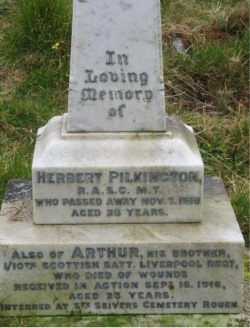
St. Peter's Churchyard, Heysham
|
|
2nd Lieutenant Francis Burton Pitts
|
|
3rd Bn, attd 8th Bn, Leicestershire Regiment.
Died of Wounds 17th May 1917, Aged 27.
Buried Cabaret-Rouge British Cemetery, Souchez, X.V.I. G. 7.
|
Francis Burton Pitts, known as Frank, was born in Loughborough on the 9th January 1890. He was the second child of Thomas and Honor Pitts (née Thursby Vale). His parents were married on 1st June 1887 at the Church of St. Mary and St. John, Rothley, and at the time of the marriage Frank's father was the Rector of Loughborough. A Fellow of Emmanuel College, Cambridge, Thomas Pitts had been previously an Assistant Master at Haileybury College, Curate of Little Amwell Church, Hertfordshire, and Rector of Thurning, Huntingdonshire. Frank's mother was the daughter of Henry Edward Martindale Vale, a Major in the Worcestershire Regiment and Deputy High Sheriff of Herefordshire. Frank had two brothers Bernard and Hugh and one sister Honor and the Pitts family initially lived at 43 Vicarage Close, Loughborough, later moving to The Rectory, Rectory Place.
In January 1897, when he was seven years old, Frank joined Loughborough Grammar School where he was educated until he was fourteen. In 1904 he left Loughborough to attend Magdalen College School, Oxford where he was selected for the football team in his first season. He also enjoyed playing golf. Frank left Magdalen College School in 1906. In 1909, when he was nineteen, Frank entered the Royal College of Music where he studied piano and organ and stayed until the 18th December 1912. He gave his home address as The Rectory, Loughborough and his London address as 9 Addison Bridge Place, Kensington.
Frank initially enlisted with the 21st (Service) Battalion of the Royal Fusiliers (City of London Regiment), known as the 4th Public Schools Battalion. As Private 3098 he trained at Epsom, Clipstone Camp, Mansfield, and Salisbury Plain and on 14th November 1915 was sent to Morbeque, France. On 26th February 1916 the battalion transferred to GHQ, just before it moved from St. Omer, to Montreuil sur Mer. The battalion was disbanded on 24th April 1916 as many of the men were commissioned. Frank received his commission as a 2nd Lieutenant on 8th August 1916 and joined the 3rd Battalion of the Leicestershire Regiment at the Humber Garrison.
By 11th October 1916 Frank had been dispatched to France to join A Company of the 8th Leicesters, which was in the Bernafay Wood area of the Somme, repairing trenches. Trench tours at Vermelles took up the rest of October, all of November and the first few days of December before a transfer to the Hohenzollern sector. On 15th December the battalion moved to rest billets in Sailly-Labourse prior to training in Auchel from 20th December.
Training continued at Auchel until 27th January 1917 and then at Houtkerque until 13th February when the battalion was sent to the trenches at Noyelles and Vermelles. By the end of March the battalion was in Humbercamps, now well behind the front line. As they advanced toward the Hindenburg Line they found that the enemy had booby-trapped many of the ruins.
On 3rd May 1917 the battle of Bullecourt took place, the village lying in the heart of the Hindenburg Line. The assault was one of the biggest since the Battle of the Somme, but received little recognition in newspapers at the time. Over a thousand yards of No Man's Land had to be covered before the enemy was even reached and large numbers of the 8th Battalion were taken prisoner, including Frank Pitts.
A local newspaper included the following:
Canon Pitts received a letter from his son [via the Red Cross, Geneva], who was reported by the war office on 11th May as 'missing and believed wounded'. The letter was written about seven or eight days after he had been hit. Through the kindness of the Rector, we are able to give some extracts from the letter: 'I once thought I should never write to you again, I suppose you all heard about our weeks doings in France. Well I wonder if anyone ever thought we would get through it. The Red Cross Germans were certainly very good, and helped all they could for our injured men and officers. Some dirty work was doing on all around us, and our bombardment died for a second. Well it was decided that our party was to move away at once, myself and three men under a German. We waited to arrange about a stretcher case, which did not seem like getting away. Well off we started, we four (of course the British were close to now. We tried one way - no snipers, We tried another, firing too close that one). All I then know was that I had been hit, and was writhing at the bottom of a shell hole, the others vanished. I was in that same German trench within an hour, how it was done, God only knows. A red cross was binding me up, and giving me water. This is about seven or eight days ago, and this is the third hospital I have been to. Of course, I am still in bed, very weak, but the worst is now over. I wonder what it will be like to be on my feet again. Goodbye, I expect Loughborough will see me just about the same sometime'.
Frank died of his wounds, aged 27, on 17th May 1917. He was buried by the Germans in Bouchain Military Cemetery, east of Arras, but in 1924 the War Graves Commission removed all those British soldiers whose bodies lay in this cemetery. Pitts' remains were reinterred at Caberet-Rouge British Cemetery, Souchez, Grave XVI. G. 7.
Frank is commemorated on war memorials at All Saints Parish Church, Loughborough, Loughborough Grammar School, and Magdalen College School, as well as on the Carillon.
Frank's mother died not long afterwards, on 19th October 1917. His brother Bernard served as an Army Chaplain and his brother Hugh served as an Officer with the Machine Gun Corps. Both brothers survived the war.
|
|
Francis seated front Right
|
|
|
|
Lieutenant Edward Stephen Plumb
|
|
9th Bn. Duke of Wellington's (West Riding Regiment)
Previously 2nd Bn. and 3rd (Reserve) Bn, West Yorkshire Regiment
Died of Wounds 8th September 1917, Aged 26.
Buried Duisans British Cemetery, VI. A. 7.
|
Edward Stephen Plumb was born on Christmas Eve 1890, the son of Edward Plumb and his wife Lydia Rose (née Robinson) who were married in Islington, London, in 1888. In 1891 Edward Junior's father was a plumber and gasfitter and the family lived at 17 Upper Park Road, Edmonton, Middlesex. By 1897 the family had moved to 133 Munster Road, Fulham, London, and Edward's father had become a jobbing builder and decorator. Edward and Lydia Rose Robinson had eight children altogether, but only six survived to adulthood. Edward Junior had five sisters Lydia, Ethel, Enid, Muriel and Alma. A brother Sydney had died aged three, and another sister Gladys had died aged one. By 1917 Edward Junior's parents moved to 170 Queen's Road, Buckhurst Hill, Essex.
Edward was admitted to Munster Road London County Council Elementary School on 11th October 1897. He entered the Latymer School in Edmonton from Munster Road School on 12th September 1905 and was placed in class Remove A. He was clearly thought of as a boy of some academic ability and promise, as London County Council paid for all his fees. He sat the Cambridge Local Exam at a senior level in 1906, and passed with Honours. He then sat the London University Matriculation exam in June 1908. He left Latymer on 28th July 1909 from class VII B, having become a student teacher on 8th January 1909. He went on to King's College Day Training College, passed his BA London exam and afterwards taught at Loughborough Grammar School.
Edward joined the University and Public Schools Corps in December 1914. He proceeded to the 16th (Service) Battalion (Public Schools) of the Middlesex Regiment (The Duke of Cambridge's Own) in February 1915 and was sent to Warlingham, Surrey. On 19th May 1915 he gained his commission as a Second Lieutenant and was listed in The Gazette as one of a Special Reserve of Officers for the Regular Forces. He was then placed in the 3rd (Reserve) Battalion of the West Yorkshire Regiment (The Prince of Wales's Own) in June 1915. The 3rd West Yorkshires was a depot and training unit and in June 1915 had just been posted to North Shields for duty with the Tyne Garrison.
In 1916 Edward served as 2nd Lieutenant with 2nd Battalion of the Duke of Wellington's (West Riding) Regiment which was also known as the 'Havercake Lads'. He was promoted to Lieutenant and posted to France on 7th April 1917 to join the 9th Battalion of the Regiment as Intelligence Officer.
On 9th April the 9th Battalion was in billets in the east of Arras. On 11th the battalion moved to the support trenches to make improvements amid enemy gas shelling and on 13th transferred to the front line south of the railway and the Scarpe Canal. Back in the support line on 17th they experienced further enemy gas shelling. After a few days cleaning up in Arras the battalion moved to the support trenches at Orange Hill and then to the front line on 24th April. An attack on the enemy on 25th April cost the battalion 217 casualties. After the attack the battalion returned briefly to Arras before entraining for Saulty and marching to billets in Sus St. Leger. On 1st May they moved by motor bus to Haute Avesnes and on to Arras the following day. From 3rd - 9th May they were in reserve and occupying cubby-holes in the railway bank after which they returned twice to the front line to face a violent barrage, machine gun fire and shelling from the enemy.
At the end of May the battalion entrained at Arras for Saulty and marched to camp at Coullemont. They remained at Coullemont until 20th June for inspections, parades and training. Late June, July and August was taken up with trench tours north of Arras between Gavrelle and Roux with breaks at Hull Camp, near St. Nicolas and Roclincourt. Edward is mentioned in the battalion's war diary for 24th July 1917 as follows: 'NCOs paraded under Lt. Plumb for instruction in patrolling etc.'.
On 4th September the battalion took over the front line (left sub-sector) at Greenland Hill north of the River Scarpe and north of Roeux. Here, in the early morning of 7th September Civil Trench was bombarded by enemy trench mortars and Edward was severely wounded. He was taken to the 8th Casualty Clearing Station near Duisans.
Edward died on 8th September 1917 and was buried in Duisans British Cemetery, Etrun, Grave VI. A. 7. He was just 26 years old. Edward is commemorated on the Roll of Honour of Latymer Upper School, on the Roll of Honour of the Incorporated Association of Assistant Masters in Secondary Schools, on the Loughborough Grammar School Memorial and on the Carillon.
Edward's Lieutenant Colonel wrote to his parents as follows: 'I had only known your son a few weeks but during that time I saw what a sterling capable officer he was. His loss is a great blow to the Battalion. Your son was splendidly brave when he was wounded and he had just done some fine work'.
His brother officer wrote: 'He was with me doing some special work which was interrupted about 3 a.m. by hostile shelling, and all of us went back into the trench to wait until things were quieter. Unfortunately a chance shell fell where we were, killing another officer and wounding your son badly in the right leg and wrist, and another soldier, both of whom I am sorry to say died after we got them down to the dressing station. Your son's bravery was splendid, and he was smoking a cigarette when he was being bandaged'.
Edward's death was reported in the October 1917 edition of the Latymer School magazine which included the following extract about him: 'The news of the death of Lt. E.S. Plumb will be received with great sorrow by many hundreds of Old Boys. He was one of the finest all round athletes the School has had, and was the Captain of the Cricket XI in 1909, of the Football XI in 1906 to 1909, Captain of Swimming in 1909 and Sports Champion in 1908 and 1909'. His death was also reported in the school magazine of Loughborough Grammar School where he had been teaching.
|
|
|
|
Lance Corporal 13448 John Thomas A. Pollard
|
|
2nd Bn, King's Own Scottish Borderers.
Died of Wounds 25th April 1915, Aged 21.
Buried Boulogne Eastern Cemetery, VIII. A. 21.
|
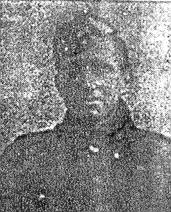
|
John Thomas A. Pollard was born in Loughborough in late 1893 or early 1894. He was the son of John Pollard, a hosiery machine setter, and his second wife Mary Ann Pollard (née Fearey) who were married at Holy Trinity Church, Loughborough on 4th June 1892.
John Thomas had three brothers George, Ivor and Herbert, and five sisters Annie, Doris, Minnie, Olive and Phyllis. Another brother Walter died in infancy. John Thomas also had three step-siblings from his father's first marriage to Emma Ward: Mary Jane, Edith and Arthur. (Emma Pollard had died in 1890, aged 29.)
In 1901 the family lived at 83 Cobden Street, Loughborough, but by 1911 had moved to 72 Albert Promenade. John Thomas's mother had died in 1909, aged 42, and his father was married for the third time in the early summer of 1911 to Clara Bond. In 1911 John Thomas, aged 17, was a hosiery machine fitter for Cotton's Ltd of Loughborough. He was also a cornet player in the Loughborough Silver Prize Band.
John Thomas joined Kitchener's Army in August 1914 as Private 13448. He was posted to the King's Own Scottish Borderers and received his orders for France on 19th January 1915. He joined the 2nd Battalion in the field at Bailleul on 31st January.
During February the battalion completed five trench tours at Lindenhoek Farm and Wulverghem, with breaks at Dranoutre and Ravetsburg Camp, Ypres Salient. In March they did five trench tours in Sectors A and C trenches at Ypres and one at St. Eloi. Breaks were taken at Vlamertinghe, Kruistraat and Ypres. In early April the battalion was back in Sector C before moving to Vlamertinghe on 10th April to practice an assault on Hill 60. The attack, which was part of the 2nd Battle of Ypres, took place on 17th April and there were 91 casualties among the Ordinary Ranks.
John Thomas, who had been promoted to Lance Corporal, was among the casualties, having been wounded in the foot, knee, and twice in the arm. He was sent to a Boulogne Hospital, where he died on 25th April 1915, aged 21. He was buried in Boulogne Eastern Cemetery, Grave VIII. A. 21.
|
|
|
|
Lance Corporal 0/2256 James William Ponsford
|
|
72nd Coy, Army Ordnance Corps.
Died at Sea 15th April 1917, Aged 32.
Commemorated Chatby Memorial Egypt.
|
James William Ponsford was born in 1884 at Highfields, Leicester, and baptised at Emmanuel Church, Loughborough, on 7th September 1884. He was the eldest child of Edward Arthur Ponsford and his wife Emma (née Main) who were married at Emmanuel Church on 24th July, 1883. James's father was initially a hosier in Leicester but later became an agent for the Prudential Insurance Company.
James had one brother Harry and one sister Lily. Another brother Arthur died aged two. In 1891 the Ponsford family was living with Emma's parents James and Sarah Main at 17 Forest Road, Loughborough and a year later James's mother died, aged 31. In 1901 Edward Ponsford was living with his three surviving children at 43 Fearon Street, Loughborough, and young James was now a junior clerk in a school.
On 8th June 1907 James married Lucy Minnie Hampton at All Saints' Church, Loughborough, and a year later his widowed father was married in Loughborough to Emma Jackson. In 1911 James, now a senior clerk for Loughborough Borough Education Committee, was living with his wife at 30 Curzon Street, but not long afterwards James gained a new position in Doncaster and he and his wife moved to 19 St. Vincent Road, Doncaster.
The date of James's enlistment is unknown but he joined the 72nd Coy of the Army Ordnance Corps (AOC) as Private 2256 and was promoted to Lance Corporal.
The AOC dealt with the supply and maintenance of weaponry, munitions and other military equipment. The depots at Woolwich, Weedon and Pimlico were supplemented by the wholesale takeover of warehouses throughout the country and in early 1915 a depot was established at Didcot to be the major focus for the receipt and distribution of AOC stores. Ammunition storage was also expanded dramatically and the former peacetime magazines at places such as Portsmouth and Plymouth were supplemented by purpose built depots at Bramley, Altrincham, Credenhill and Didcot. On the Western Front a highly successful logistic infrastructure, largely rail based, was created to support the front. Parallel systems, but of less complexity, supported operations in Italy. Other expeditions such as Gallipoli, Salonika, Palestine and Mesopotamia brought supply challenges and large logistic bases were established on the Egyptian Canal Zone and Basra.
On 15th April 1917 James was on board the HT Cameronia en route from Marseille to Alexandria, Egypt. The Cameronia was serving as a troopship at the time and had approximately 2,650 soldiers on board who were reinforcements for Mesopotamia when it was torpedoed by the German U-boat U-33 150 miles east of Malta. The ship sank in 40 minutes, taking 210 lives. Although most of the crew and soldiers were picked up by the escorting destroyers HMS Nemesis and HMS Rifleman, survivors having sufficient time to take to lifeboats, James, aged 32, was one of those lost.
According to a newspaper report 'A letter was received by the wife of Lance Corp. W. Ponsford that he was on a transport, which was torpedoed on 15th April, and it is feared that he is drowned. His father lived on Storer Road, and his wife is at present staying with her mother, Mrs. Hampton, at 12 Regent Street Loughborough'.
James is commemorated on the Chatby Memorial, Egypt, and on the memorial in the former St. Peter's Church building, Loughborough, as well as on the Carillon.
In 1920 James's widow was remarried at Emmanuel Church, Loughborough, to Walter Cockain of 59 Frederick Street.
|
|
|
Sergeant 5341 Richard Maurice Poole
|
3rd Bn, Leicestershire Regiment.
Previously 2nd, 1st and 7th Bns.
Died at Home 1st August 1917, Aged 36.
Buried Loughborough Cemetery 31/171.
|
Richard Maurice Poole was born in Loughborough in 1881, his birth registered as 'Richard Morris Poole'. He was the son of Richard Morris Poole, a blacksmith, and Mary James Poole (née Hudson) who were married in Loughborough in 1879. Richard and Mary Poole had five other children: Sarah, Walter, Emma, Ambrose and Lizzie. Another daughter May died aged one. Mary Poole also had another son William Hudson, born before she married Richard Morris Poole. Between 1889 and 1891 the Poole family lived at 3 Ashby Square, Loughborough but they later moved next door to 2 Ashby Square. They attended St. Mary's Roman Catholic Church in Loughborough.
On 23rd August 1898 Richard Maurice Poole, aged 17 and a terra cotta hand, enlisted at Loughborough giving his age as two years older than he actually was. He wanted to join the Coldstream Guards but instead was sent as Private 5341 to the Depot of the Leicestershire Regiment and then to the Curragh in Ireland. On 22nd November 1898 he was transferred to the 2nd Battalion of the Leicesters. Just under one year later on 20th September 1899 he was transferred to the 1st Battalion and sent to South Africa on the SS Jelunga.
Richard remained in South Africa until 6th November 1902, fighting in the 2nd Boer War. He was awarded the Queen's South Africa Medal, with clasps for the Defence of Ladysmith, Laing's Nek and Belfast. He was also awarded the King's South Africa Medal with clasps. In November 1901 he was appointed a Lance Corporal (unpaid), a position confirmed with pay in August 1902. In October 1902 he was promoted to Corporal.
In November 1902 Richard was sent to India and stationed firstly at Bellary and secondly at Belgaum. His service in India which lasted until the end of October 1905 was marked by several stays in hospital with various ailments including swollen lymph glands, influenza and scabies. In 1904 he was severely reprimanded for conduct which prejudiced good order and military discipline.
In November 1905 Richard returned to the Regiment's Depot and was transferred to the Reserve. On 30th March 1907 he married Ada Guest at All Saints Parish Church, Loughborough and the couple set up home at 6 Russell Street. Richard obtained employment as a general labourer in an iron works. On 17th May 1910 he was re-engaged as a Corporal in the Leicestershire Regiment.
When war broke out Richard was mobilised and sent to Aldershot to join the 7th (Service) Battalion of the Leicestershire Regiment. In November 1914 he was promoted to Acting Sergeant in the same battalion. A few days later, however, he was sent to the Connaught Hospital, Farnborough, with orchitis. On 20th July 1915 he was transferred to the 3rd Battalion, reverting to the rank of Corporal on transfer. Although Richard was now suffering from a muscular weakness in his left shoulder at the end of July he was posted to the Humber Garrison and reinstated to the rank of Acting Sergeant. Not long afterwards on 3rd September 1915 he was permanently discharged as unfit for Army service.
Richard returned to Loughborough and died at home after a long illness, aged 36, on 1st August 1917. He was buried in Loughborough Cemetery Grave 31/171. His funeral service was conducted by the Rev, Father Hayes, and a firing party from Glen Parva attended. Volleys were fired over the open grave and the "Last Post" was sounded. The bearers were six members of the deceased's club.
|
|
|
|
Private 5305 John Potter
|
|
156th Protection Coy, Royal Defence Corps.
Previously 3798 2nd Bn and 1st Bn, Leicestershire Regiment.
Died at Home 19th November 1918, Aged 44.
Buried Loughborough Cemetery 49/171.
|
John Potter's exact parentage and place and date of birth are uncertain. He first appears in the census of 1891 in the household of Mrs. Christina Potter, draper, of Coulthard Road, Bradfield, Berkshire. Here John is described as Christina Potter's nephew, aged 15, born in Shepston[e], Worcestershire and draper's assistant. Christina's husband John Daniel Potter was working as a butler in Bradfield and Christina and John Daniel had met while working at Wootton Hall, Wootton Wawen, Warwickshire, where Christina was employed as a ladies' maid.
On 1st June 1893 John, aged 18, attested at Reading to serve in Princess Charlotte of Wales's (Royal Berkshire) Regiment. He gave his place of birth as Birmingham, his occupation as 'Baker' and named John and Christina Potter of South End, Bradfield, Berkshire, as his parents.
John was accepted by the Regiment and on 22nd August 1893 was posted to the 2nd Battalion as Private 3798. On 14th March 1895 John was transferred to the 1st Battalion and posted to Bermuda where he remained until 1st December the same year. From 2nd December 1895 until 23rd October 1897 John was stationed in Halifax, Nova Scotia, Canada, and on 12th May 1896 promoted to Lance Corporal. He was then in the West Indies for just over a year but during this time was demoted to the rank of Private. On 31st December 1898 he was transferred to the 2nd Battalion and sent to South Africa.
When the 2nd Boer War began on 11th October 1899 the 2nd Battalion was in Queenstown, Cape Colony. The garrison there was a naval detachment with two twelve-pounders and the headquarters and four companies of the Royal Berkshire Regiment (which had been withdrawn from Stormberg) with their mounted infantry. In addition to these were some of the Cape Mounted Rifles and other local forces. At this time the other companies of the Berkshires were at Naauwpoort, west of Stormberg.
There was little fighting in the district until Sir William Gatacre made his ill-fated attempt on the Boer position at Stormberg on 9th December 1899. The Berkshire Regiment, who had built the redoubts at Stormberg now occupied by the Boers and who knew the area well were left at Queenstown instead of being employed in the recapture. At Naauwpoort General French did not leave the battalion in the background. On 1st January 1900 a part of the Boer position at Colesberg was successfully taken by the Berkshires.
The Berkshires accompanied General Clements when he moved north, crossing the Orange River at Norvalspont about 12th March. Marching via Fauresmith and Petrusburg they arrived at Bloemfontein about 2nd April. The battalion took part in the operations for the relief of Wepener from 20th-23rd April, but had no serious fighting. During Lord Roberts' advance towards Pretoria they were chiefly employed guarding the line.
In the beginning of July 1900 the battalion joined a newly formed brigade under Brigadier General Cunningham. This brigade moved to Bronkhorst Spruit and was then sent back to Pretoria, and thence towards Rustenburg, being involved in a good deal of fighting north-west of Pretoria.
At Uitval Nek on 2nd August two companies of the Berkshire Regiment gallantly escaladed the steep cliff overlooking the pass from the east and the enemy fled. After returning to Pretoria, the Berkshires again went east, reaching Balmoral about 4th September.
In December 1900 the battalion formed the garrison of various posts in the Wonderfontein-Pan district, and fought on many occasions. In January 1901 part of the Berkshire Regiment repelled an attack on the garrison at Dalmanutta.
The battalion remained in the Eastern Transvaal until September 1901 when they returned to Cape Colony for operations under General French against Scheepers. Until the close of the war they held a stretch of the railway between Beaufort West and De Aar.
John remained in South Africa until 13th November 1902. On 18th March 1903 he was transferred to 1st Class Reserve and was discharged on 31st May 1905. He was awarded the Queen's South African Medal with clasps for Cape Colony and Orange Free State and the King's South African Medal with clasps for 1901 and 1902.
On 7th October 1905 John, now employed as a groom, married Ellen Agnes Fox and the couple settled at 18 Oxford Street, Coalville. They had three children John, Nora and Reginald.
When war broke out in 1914 John reenlisted with the Royal Defence Corps as Private 5305. His wife and children moved to 16 Station Street, Loughborough.
The Royal Defence Corps (RDC) was a corps of the British Army formed in March 1916. It was initially formed by converting the (Home Service) Garrison battalions of line infantry regiments. Garrison battalions were composed of soldiers either too old or medically unfit for active front-line service; the Home Service status indicated they were unable to be transferred overseas.
The role of the corps was to provide troops for security and guard duties inside the United Kingdom; guarding important locations such as ports or bridges. It also provided independent companies for guarding prisoner-of-war camps. By April 1918 some 27,000 men were serving in the RDC. Of these, 14,000 were employed at prisoner of war camps.
The RDC consisted of two types of units, Protection Companies and Observer Companies. John joined No. 156 Protection Company and some men from this company guarded Sutton Bonington Prisoner of War Camp while others guarded strategic sites.
John died on 19th November 1918, aged 44, at the 5th Northern General Hospital, Leicester. He was buried in Loughborough Cemetery Grave 49/171.
|
|
|
|
Private 12580 John Humphrey Powell
|
|
8th Bn, Leicestershire Regiment.
Killed in Action 3rd May 1917, Aged 29.
Commemorated Arras Memorial bay 5.
|
John Humphrey Powell was born in Wandsworth, Surrey, in late 1887 or early 1888. He was the son of James Lawrence Powell, a Welshman, and Jane Powell (née Humphrey) who came from Sussex. His parents were married in July 1878 at the Church of St. Mary the Virgin, Shakleford, Godalming, Surrey. John's father was an engine maker and turner and in 1891 the Powell family lived at 10 Burtop Road, Wandsworth. John had four brothers Henry, James, Ernest and Charles and one sister Ellen. By 1901 the family had moved to 98 Burder Street and by 1911 to 4 Glebe Street, both in Loughborough. John became a machine printer for Messrs. J. Corah and Sons, printers in Woodgate. In 1911 John married Elizabeth Gertrude Wade and the couple moved into 6 Glebe Street. Their daughter Gertrude was born in 1912.
John enlisted in August 1914, and joined the 8th (Service) Battalion of the Leicestershire Regiment as Private 12580. From the Depot he was sent firstly to Aldershot for training and then to Shorncliffe, Kent, in February 1915. In April 1915 John's battalion became part of the newly established 37th Division of Kitchener's 2nd New Army and the Division began to concentrate on Salisbury Plain. On 25th June the units were inspected by King George V at Sidbury Hill. On 22nd July the Division began to cross the English Channel and Ernest travelled to France on 29th July 1915. Initially the 37th Division concentrated near Tilques.
The 8th Battalion then moved to Wulverghem and Berles-au-Bois, a short distance from the front line. In the months that followed the 8th Battalion did tours in the trenches, alternating with the 6th Leicesters who relieved them. They were Involved in operations in Bailleul, Le Bizet, Armentières, Mondicourt, Beauval and Berles-au-Bois. In February 1916 John came home on a short furlough.
In April 1916 John moved with the 8th Leicesters to the Doullens area for six weeks cleaning up, resting and training. In mid-May the battalion returned once more to the trenches in the Bienvillers-Bailleulmont sector, but nearer Gommecourt. In June there were nightly excursions into No-Man's Land attempting to gather information on the enemy's dispositions and daily working parties to repair the British barbed wire entanglements. The situation became increasingly hazardous as the month wore on when the Germans began to use a new and more accurate type of trench mortar.
The 8th Battalion did not participate in the first days of the Somme Offensive but was held in reserve. at Humbercamps, Talmas, and Soues. On 10th July the battalion marched to Ailly-sur-Somme, entrained for Méricourt and travelled from there by lorry to bivouacs in Méaulte. Between 10th and 13th July the battalion was in the trenches near Fricourt and subjected to fairly continuous enemy fire.
On the 14th July the battalion was in action at the Battle of Bazentin Ridge. After the battle the battalion withdrew to Ribemont and then to Méricourt, and having entrained for Saleux, marched to Soues. At the end of July the battalion moved by train and on foot to St.-Quentin-Lattre and went into the trenches at Arras until 2nd September with rest breaks at Agnez-les-Ouisans. After this there was training at Lignereuil until 13th September when the battalion marched to Frevent and entrained for Dernancourt. On 15th they reached a point between Fricourt and Méaulte before proceeding to Trônes Wood on 16th.
From 17th-23rd September the battalion was in reserve and supporting the troops in the front line by providing carrying parties. In the evening of 24th September the battalion took up battle positions and on the following day, the start of the Battle of Morval, launched a successful attack on the right of Flers and then pressed on to Gueudecourt, Considerable losses, however, were suffered in this action.
After Morval the battalion withdrew to Dernancourt, entrained for Longpré and marched to Pont Remy before transferring to the Hohenzollern Reserve, support and frontline trenches. The battalion remained in the Hohenzollern sector, with breaks at Mazingarbe and Vermelles until 15th December when they marched to billets in the candle factory at Béthune. From there the battalion moved to Auchel where they remained until 26th January 1917 training. On 28th December the troops were entertained by a Lena Ashwell concert party.
From Auchel the men moved to Winnezeele to continue training in tactical manoeuvres before returning to Béthune and the front line trenches at Sailly Labourse. In April 1917 the battalion moved to Hamelincourt and occupied the Outpost Line on the Hénin-Croisilles road until 13th April, then transferred to Bailleulmont for training before going into support at St. Leger. On 3rd May the battalion took part in an attack on the village of Fontaine-lès-Croisilles where casualties were high and John, aged 29, was killed in action.
A letter from the Lieutenant of the battalion to John's wife said that after the engagement on 3rd May he was reported missing and no further trace could be found. John is commemorated on the Arras Memorial Bay 5, on the memorials at All Saints' Church and Trinity Church, Loughborough and on the Carillon.
John's widow married Edward Glithero in Loughborough in 1920.
|
|
|
|
Rifleman R/13928 William Ernest Powell
|
|
12th Bn, King's Royal Rifle Corps.
Killed in Action 27th August 1916, Aged 19.
Commemorated Thiepval Memorial Somme, Face 13 & 13 b.
|
William Ernest Powell was born in Walthamstow, Essex, in 1897, the son of William Henry Powell and his wife Florence Ada (née Ganderton) who were married in Walthamstow in 1896. In 1901 the family was living at 14 North Road, Walthamstow and William Ernest's father was a stationer's bookkeeper. William Ernest's father unfortunately died in 1904, aged 29. By 1911 Florence Ada Powell was earning her living as a monthly nurse. She and a daughter Elsie Florence, aged 7, were resident in the Turner household at 86 Shernhall Street in Walthamstow. William Ernest, meanwhile, was with his grandparents Henry and Mary Ann Ganderton at 46 Barrett Road, Walthamstow. Aged 14, he had left school. William Ernest's mother subsequently moved with William Ernest and his sister Elsie to 2 Russell Street, Loughborough.
When war broke out William Ernest enlisted in London and joined the 12th (Service) Battalion of the King's Royal Rifle Corps as Rifleman R/13928. This battalion was part of Kitchener's army and came under orders of the 20th (Light) Division of the Army. Training began near Winchester before the battalion moved to Bisley, Surrey, and then to Blackdown, Sussex, in November 1914. In February 1915 the battalion transferred to billets in Hindhead, Surrey. On 10th April 1915 final training began at Larkhill, Wiltshire. The battalion proceeded to France on 22nd July 1915, landing at Boulogne and with the Division concentrating in the St. Omer area. The battalion then moved to the area of Fleurbaix for trench familiarisation. In September 1915 they were in the trenches south of Laventie north-east of Béthune.
By February 1916 William's battalion was in the front line trenches east of the Yser Canal. The battalion was in action at the Battle of Mount Sorrel in the Ypres Salient (2nd-14th June) in which the Division, along with the Canadians, recaptured the heights. In August 1916 they were in action again on the Somme in the Battle of Delville Wood (15th July - 3rd September). William was killed in action, aged 19, on 27th August 1916. He is commemorated on the Thiepval Memorial Face 13 and 13B.
William's sister Elsie married Albert Reeve in Loughborough in 1924. His mother died in Birmingham in 1940.
|
|
|
|
Lance Corporal 20744 Harold Edwin Price
|
|
2nd Bn, Leicestershire Regiment..
Died of Wounds Mesopotamia 12th Jan. 1917, Aged 18.
Buried Amara War Cemetery, Iraq XXI. A. 18.
|
Harold Edwin Price was born in Crewton, Derbyshire in 1898 and baptised on 23ed February 1898 at Boulton, Derbyshire. He was the eldest child of Edwin Price and his wife Emily (née Holt Green) who were married on 8th August 1896 at Boulton. Harold had four brothers Wilfred, William, Sidney and John and two sisters Edith and Ethel. In 1901 the family lived at 8 Alexandra Street, Alvaston, Derby and Harold's father was a bricklayer's labourer, but by 1911 they had moved to Golden Square, Hathern, Leicestershire and Harold's father was employed as an agricultural labourer.
Harold's service record has not survived but he appears to have enlisted at Loughborough sometime in 1915. He joined the Leicestershire Regiment as Private 20744 and was at some point promoted to Lance Corporal.
Harold was sent out to Mesopotamia to join the 2nd Battalion where Britain was fighting Turkish forces allied to the Germans. Having arrived at Basra he would have travelled by boat up the River Tigris to Ali Gharbi, 150 miles south-east of Baghdad to join the Tigris Corps.
In January 1916 General Townshend and his troops had been besieged at Kut-al-Amara since mid-December and three unsuccessful attempts were made to break the siege. Battles took place at Sheikh Sa'ad, the Wadi and Hanna resulting in many casualties. A further attack at Dujaila Redoubt in March failed.
In April 1916 No. 30 Squadron of the Royal Flying Corps carried out the first air supply operation in history. Food and ammunition were dropped to the defenders of Kut, but unfortunately their parcels often fell into the Tigris or into the Turkish trenches. On 5th April a battle began for Fallahiyeh which the British soon captured but with heavy losses. Beit Asia was taken on 17th April. A final effort against Sannaiyat was made on 22nd April but this was unsuccessful and the Allies suffered about 1,200 casualties in the process. During the remainder of April other attempts were made to dislodge the enemy from their position at Sannaiyat but without any success. All attempts to relieve Kut failed and on 29th April 1916 General Townshend was forced to surrender to the Ottomans at Kut.
The surrender at Kut was a severe blow to British prestige and morale and the troops were exhausted by their efforts. The Tigris Corps nevertheless still maintained a close watch on the Turks in the areas of Sannaiyat and Beit Isa. In mid-May it became apparent that the enemy had withdrawn from Es Sinn and the British were able to occupy the Dujaila Redoubt. The intense heat in June, however, caused a heavy toll from sickness and disease among the troops.
As the heat lessened in September and October the enemy raised its activities in sniping and bombing from the right bank of the Tigris. In December the Tigris Corps began a long offensive operation with the purpose of dislodging the enemy from the right bank position and severing the enemy's communication channels. During this operation Harold was wounded in action by shrapnel. He died from his wounds on 12th January 1917 in Basra, aged 18.
Harold is buried Amara War Cemetery, Iraq, Grave XXI. A. 18. In 1933 the grave headstones were removed after it was found that they were being damaged by salts in the soil and a memorial wall erected instead with the names of the dead engraved upon plaques.
Harold is remembered on the memorial in the former St. Peter's Church building, Loughborough, and on the Carillon.
|
In 1933, all of the headstones were removed from this cemetery when it was discovered that salts in the soil were causing them to deteriorate. Instead a screen wall was erected with the names of those buried in the cemetery engraved upon it.
|
|
Private 16035 Christopher Priestley
|
|
8th Bn, Leicestershire Regiment.
Previously 9th Bn, Leicestershire Regiment.
Killed in Action 1st October 1917, Aged 29.
Commemorated Tyne Cot Memorial panel 50 - 51.
|
Christopher Priestley was born in Loughborough in late 1887 and baptised on 7th December 1887 at Emmanuel Church, Loughborough. He was the son of Arthur Priestley, a needlemaker, and his wife Annie (née Manderfield) who were married on 27th March 1880 at Emmanuel Church. In 1891 the family lived at 11 Moor Lane, Loughborough, but by 1899 had moved to Goodman's Yard. Christopher had three brothers Arthur (Junior), Leonard and James and four sisters Violetta, Florence, Elizabeth Annie, and Elsie. He attended Cobden Street School.
In 1899 Christopher and another schoolboy William Hallam, appeared twice at the Loughborough Petty Sessions, firstly for committing wilful damage to timber belonging to Messrs. B. Clemerson and Son and secondly for smashing a barn door belonging to Joseph Garton auctioneer. On the first occasion Christopher was discharged as he promised not to do it again but on the second occasion he was fined 5s and 1s 6d damages.
By 1901, when Christopher was 13, the family had moved to 2 Court C, South Street. Christopher's mother died in 1909, aged 50, and in early 1911 his widowed father was living with most of the family at 55 Ashby Square, Loughborough. Christopher was a tile maker in a brickyard. On 3rd June 1911 Christopher's father was remarried to Ellen Clarke at All Saints Church. Not long afterwards their daughter Doris, half-sister to Christopher, was born. This marriage was short-lived, however, as Christopher's father died on 5th September 1913, aged 54.
Christopher enlisted on 16th November 1914 in Loughborough. Aged 27 he was now a collier and lived at 5 Park Row, Loughborough. On 27th November he was posted to the 9th (Service) Battalion of the Leicestershire Regiment as Private 16035. He joined the battalion at Bourley Camp, near Aldershot. In early December the battalion moved into Aldershot and then, at the end of February 1915, to Shorncliffe in Kent. In April 1915 the battalion became part of the newly established 37th Division of Kitchener's 2nd New Army and the Division began to concentrate on Salisbury Plain. On 28th July the battalion entrained at Ludgershall for Southampton with seventy-three horses, nineteen four-wheeled vehicles, four two-wheeled. The personnel included a machine-gun section, transport, grooms and nine signallers (with bicycles). The 9th Battalion needed two trains for their four companies. Having crossed the Channel to Le Havre on the SS City of Dunkirk the battalion joined the 37th Division at Tilques.
The 9th Battalion then moved to Bienvillers-au-Bois, a short distance from the front line. On 20th September Christopher was sentenced to 28 days of Field Punishment No. 1 and forfeiture of pay for a calendar month 'for neglect to the prejudice of good order'. On 5th October he became a casualty because of an unspecified self-inflicted injury,
In the months that followed the battalion did tours in the trenches, alternating with the 7th Leicesters who relieved them. They were involved in operations in Bailleul, Le Bizet, Armentières, Mondicourt, Beauval and Berles-au-Bois and gave the trenches names such as Narborough Road, Gallowtree Gate, and High Cross. Towards the end of the year the men were issued with goatskin jerkins to wear for warmth, but their smell made the men feel nauseous.
In April 1916 the 9th Leicesters moved to the Doullens area for six weeks for cleaning up, resting and training. On 7th April Christopher was court-martialled for drunkenness and being absent from night-working and given 28 days loss of pay. In mid-May the battalion returned once more to the trenches in the Bienvillers-Bailleulmont sector. In June there was a series of nightly excursions into No-Man's Land with patrols attempting to gather information on the enemy's dispositions. On other occasions there were working parties out repairing the British barbed wire entanglements. The situation became increasingly hazardous as the month wore on when the Germans began to use a new and more accurate type of trench mortar. On 3rd June Christopher was sent to hospital for three days.
On 1st July 1916 the 9th Leicesters moved into position at Souastre ready to reinforce the troops attacking at Gommecourt. No orders came, however, and the men marched back to Humbercamps where training took place on the 4th and 5th July. On 6th and 7th July the battalion marched via Talmas to Crouy and on 8th and 9th July rested and was addressed by the Divisional Commander on the forthcoming battle. On 10th July they moved to Ailly-sur-Somme and then entrained for Méricourt before going by bus to bivouacs in Méaulte, north-east of Amiens. They then took over as Quadrangle Trench and Quadrangle support. On 11th July there was heavy shelling but no infantry attack. On 12th July the 9th battalion was relieved and moved back to Fricourt.
On 14th July the battalion moved up to the south edge of Mametz Wood just as an intense bombardment of the German positions began, and on to Bazentin-Le-Petit Wood. Finally relieved on 16th July the battalion, which had suffered heavy casualties, marched to Fricourt and on to Ribemont on the following day. On 18th July they entrained at Méricourt for Saleux. After nine days of marching and some motor lorry transit the battalion arrived at Arras on 27th July, where for all of August the battalion was in the trenches or resting in billets. After some days training and resting at the beginning of September the battalion marched to Frevent and entrained for 'Edgehill' station near Dernancourt. On 16th September the battalion moved to bivouac near Fricourt but Christopher was sent to hospital again. He rejoined his battalion on 21st September.
On 24th September the battalion moved up to the assembly trenches in front of Gueudecourt in preparation for an attack on the following day and were heavily shelled in the process. From 25th to 28th September the battalion took part in the Battle of Morval and sustained considerable casualties. On 28th September Christopher was admitted to No. 15 Corps Casualty Clearing Station with dysentery but it is not recorded when he rejoined his battalion.
On 2nd October the battalion moved from Bernafay Wood to Dernancourt and on 4th October entrained at 'Edge Station' for Longpré-les-Corps-Saints, marched to Francières, entrained at Pont Remy for Béthune and marched to Fouquières-lès-Béthune. On 10th October they marched to Sailly-la-Bourse and went into the support trenches in the Hohenzollern Sector where trench mortars from the enemy did considerable damage.
Between 11th October and 15th December the battalion was either in the front line trenches, in the support line or in reserve. On 16th November Christopher was admitted to No. 23 Casualty Clearing Station, Lozinghem, with dental caries. On 2nd January 1917 he went to the convalescent camp of the Casualty Clearing Station. Christopher's battalion was now in training at Raimbart but it seems that he may not have rejoined them there. The battalion then proceeded on 28th January to Houdeque-Watou. Christopher, however, was readmitted to No. 23 Casualty Clearing Station on 5th February and sent to No. 4 Stationary Hospital at Arques, near St. Omer.
Christopher did rejoin his battalion on 19th February in the Hohenzollern sector and the battalion remained there in the front or support line until 27th March when they proceeded via Sailly-Labourse to Gaudiemare for training. On 2nd April Christopher was sent to hospital in the field with an unexplained fever and on 3rd April was removed via No. 32 Casualty Clearing Station, Warlencourt, to No. 2 Canadian General Hospital at Le Tréport. He was posted to the 12th Trenching Battalion Division at Calais on 20th April. He was granted seven days leave on 27th June and may have returned to Loughborough.
It seems that Christopher may have been posted from the Entrenching Battalion to the 8th Battalion of the Leicestershire Regiment at some point between April and August 1917 as there is a note on his service record dated 27th March 1918 as follows: 'Posted to 8th Bn. Leic. Reg. for record purposes'.
In July 1917 the 8th Battalion was in the trenches near Croisilles before moving to Camp A at Moyenville for training. On 2nd August Christopher was admitted to No. 64 Field Ambulance with a fever of unknown cause and remained there until 31st August when he rejoined his battalion in training at Ambrines and then at Avesnes-le-Comte. On 16th September the battalion marched to Savy, entrained for Caestre and went into camp for more training. On 23rd September they began a series of moves, firstly to Meteren, then by bus to Hallebast before marching to Sint Hubertushoek and from there to Ridge Wood south-west of Ypres. On 30th September they moved up to the front line at Polygon Wood. On 1st October the enemy attacked the 9th Leicesters who were nearby and got possession of their front line. The 8th Leicesters went to assist but the enemy made repeated attacks. Counter-attacks were hit by a heavy enemy barrage in the neighbourhood of Joist Farm. It was presumed for official purposes that Christopher was killed in action, a phase of the Battle of Passchendaele, on or after 1st October.
Christopher is commemorated on the Tyne Cot Memorial, Zonnebeke, Panels 50-51. He is also remembered on the memorial in Emmanuel Church, Loughborough, and on the Carillon.
|
|
|
|
Sergeant 7631 John Sutton (Jack) Priestley
|
|
1st Bn, King's Own Scottish Borderers.
Killed in Action Dardanelles 26th April 1915, Aged 32.
Buried Twelve Tree Copse Cemetery, Helles, XI. B. 4.
|
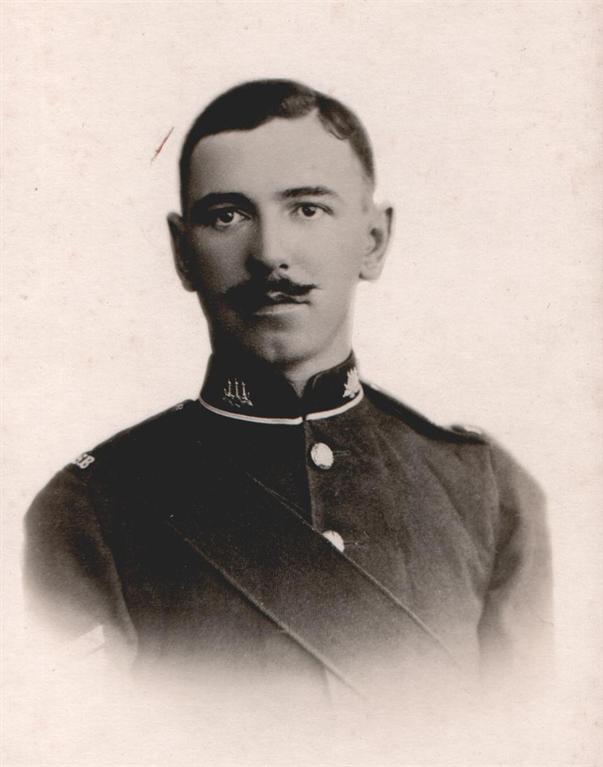
|
John Sutton Priestley, known as 'Jack', was born in Loughborough in late 1883. He was the son of Henry Priestley and Phoebe (née Sutton) who were married on 14th November 1869 at Emmanuel Church, Loughborough. Jack's father served with the 38th Regiment of Foot before settling in Loughborough and working as a labourer. He later became a Corporation dustman.
Jack had three brothers Henry, William and Thomas and two sisters Annie and Elizabeth. Another sister Sarah died, aged 13, in 1893. In 1891 the family lived at 58 Woodgate but by 1901 had moved to 38 Moor Lane. In 1901 Jack's mother died and Jack, who was an apprentice hosiery machine builder, enlisted with the Army. In 1903 Jack's father married Mary Cunningham and went to live at 4 South Street.
In 1901 Jack joined the King's Own Scottish Borderers as Private 7631 and after preliminary training was sent to join the 1st Battalion which was stationed at Victoria Barracks, Belfast. Jack was a good footballer and played full back in the King's Own Scottish Borderers Football Club in the Irish Football League for the 1903-04 season.
In 1905 Jack's battalion moved to Colchester. Between 1906 and 1910 the battalion served in Egypt and the Sudan and between 1911 and 1914 in Ranikhet, Bareilly and Lucknow, India.
The battalion was in Lucknow when war broke out. It was ordered to mobilise on 11th September 1914 and entrained for Bombay on 27th October. The battalion embarked on Transport 109 the SS Sardinia, and escorted by HMS Swiftsure and HMS Dufferin sailed via Aden and the Red Sea to Suez. On 16th November the battalion disembarked at Suez and entrained for Ismailia Camp (now renamed Camp Moascar) where it remained until 14th December guarding the Suez Canal. On 14th December the battalion proceeded to Alexandria and embarked on the SS Geelong and the SS Wiltshire and sailed via Gibraltar to Plymouth, arriving at Devonport on 28th December. On 29th December the battalion disembarked and entrained for Warley, Essex.
On 15th January 1915 the battalion moved to Rugby and remained there until 17th March when they were ordered to entrain for Avonmouth. On 18th March they embarked on the HT Dongola and the SS Marquette and sailed via Gibraltar and Malta for Alexandria, arriving on 29th March. From then until 14th April they stayed at Mex Camp.
On 15th April they embarked on the SS Southland and sailed for Lemnos, Greece. After five days of practising going down rope ladders to small boats the battalion transferred to the cruisers HMS Amethyst and HMS Sapphire and proceeded to a point four miles off the coast of Gallipoli. On 25th April the battalion transferred to four trawlers which went as near the coast as possible. The whole battalion landed at Cape Helles and scouts had been sent up to the cliff when the enemy began a heavy bombardment. On the following day the battalion was involved in a counter-attack and suffered 296 casualties.
Jack was reported wounded and missing on 26th April 1915 and it was subsequently confirmed that he had been killed in action, aged 32. By the time he died he had been promoted to Sergeant.
Jack was buried in Twelve Tree Copse Cemetery, Helles, Grave XI. B. 4.
Jack's father Henry had died in the early months of 1915 and never knew what happened to his son. Henry Priestley was given a funeral with military honours in Loughborough.
|
John (always known as Jack)
enlisted at Leicester as a Private in the
Kings Own Scottish Borderers Regiment in 1901
|
|

Jack was a competent footballer and played in the Regimental Cup teams at full back.
|
|
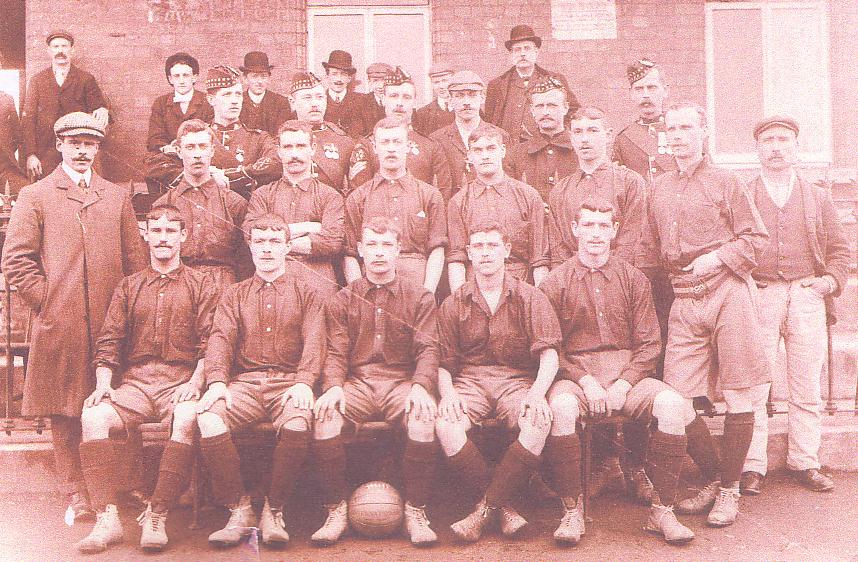
Jack's prowess at football also made him popular with his great-nephew when he came home on leave. Fred Dakin remembered Uncle Jack bringing him a real leather football which made Fred the "bees knees" in the street.
|
|
|
|
Rifleman 6993 James Prime
|
|
1st Bn, Rifle Brigade.
Died POW Germany 9th March 1915, Aged 36.
Buried Berlin South - Western Cemetery, XIX, D. 10.
|
James Prime was born in Uttoxeter, Staffordshire, on 8th August 1878 and baptised on 8th September 1878 at St. Mary's Catholic Church, Uttoxeter. He was the son of Joseph Prime of Uttoxeter and Margaret Callaghan (or Calagan) from Mahone, Roscommon, Ireland, who were married at St. Paul's Church, Edensor, Stoke on Trent, in 1863.
James had two brothers Joseph and John and four sisters Hannah, Martha, Mary Elizabeth and Margaret. Three other siblings died young. James's father was a scavenger in 1881 but he later became an iron foundry labourer. The Prime family lived in Chapel Gardens, Uttoxeter, in the 1880s and 1890s, but later moved to Carter Street, Uttoxeter.
In 1891 James, aged 13, was an errand boy. At some point between the mid-1890s and 1903 James enlisted with the Army, joining the Rifle Brigade (The Prince Consort's Own) as Rifleman 6993. By May 1909 he was a Reservist and was appointed as an assistant postman at Loughborough. He moved to 6 Peel Street, Loughborough and on 22nd August 1909 he married Alice Baxter at Holy Trinity Church, Loughborough. In July 1910 James was appointed to the position of postman at Ashbourne, Derbyshire, and the young couple moved to 23 Mayfield Road, Ashbourne, where their son James Noel was born in 1911. In January 1912 the family returned to Loughborough as James had been appointed to a position of postman there. They lived at 129 Herrick Road and their daughter Margaret Alice was born in Loughborough in 1913.
James was recalled by the Army when war broke out and joined the 1st Battalion of the Rifle Brigade. The battalion was at Colchester and was in training there until 17th August 1914. On 18th August they travelled by train to Harrow where they encamped on the school football field and continued training. On 22nd August they entrained for Southampton and embarked on the SS Cestrian. They disembarked at Le Havre in the early hours of 23rd August and proceeded to No. 3 Rest Camp.
On 24th August the battalion entrained at Le Havre and proceeded via Rouen and Amiens for Le Cateau where they detrained at 5.30am on the following day. They then marched via Neuvilly and Briastre to Fontaine-au-Pire. The Battle of Le Cateau began at 5.30am on 26th August. C Company moved to Cattenières, driving off enemy cavalry patrols. The battalion came under shell fire and withdrew to defensive positions on a sunken road between Ligny and Fontaine-au-Pire, holding this position under heavy fire. Eventually they were forced to withdraw to Ligny and by 6pm had begun a retreat.
James went missing during the Battle of Le Cateau. In early November 1914 James's wife received a War Office notification that her husband Rifleman J. Prime, of the 1st Battalion Rifle Brigade, had been missing since August 26th. Not long afterwards Mrs. Prime received a letter from her husband who was in the Civil Hospital at Cambrai, France. James told her that he had received a bullet wound below the left hip and the shot broke the thigh bone. He lay on the battlefield for 27 hours before the enemy picked him up. During this time the air seemed full of lead, and he thought it wonderful that he escaped being riddled with bullets. He said he slept a considerable part of the time, but it was only by taking frequent drinks from his water bottle which kept him alive. On arrival at hospital the German doctors strapped his leg up tightly, and after being under treatment for five weeks he was able to be up for about four hours a day. He said that one of the German nurses supplied him with tobacco, and on the whole the Germans had treated him very well. He would however, be glad of some Irish roll tobacco.
On 7th December 1914 James Prime, Malcolm Hay and two other Prisoners of War were sent in a hospital train from Cambrai to Giessen, north of Frankfurt, Germany. After three weeks in Giessen Hospital they were moved to Giessen Camp for three days and then transported from Giessen station to Klein Wittenberg, Westpreussen. Hay noted that 'As soon as we arrived in Wittenberg all the people were at the station, a big crowd, men and women. They all had big sticks, some had bars of iron, and we had to run the gauntlet of this. I got one terrible kick, but anyhow I managed to get into camp, and as soon as we got into camp we got knocked about by the Germans, and everything was taken from us'.
The camp at Klein Wittenberg was grossly overcrowded and there were already cases of typhus among the prisoners. As an epidemic took hold there were between 250 and 300 cases among the English prisoners and 60 deaths.
Hay recorded that 'I took typhus first: when I was in hospital four or five days, Prime was carried there; he was put down on the floor, and died four or five days afterwards. Sergeant Spence of the Scots Guards was with him when he died. Just before the end they got him a ramshackle bed made up with boards, no mattress'.
James Prime died of typhus in Wittenberg, Germany, on 9th March 1915, aged 36. He was initially buried in Klein Wittenberg, but in 1920 his remains were moved to Berlin South-Western Cemetery, Grave XIX, D. 10. He is commemorated on a memorial at Klein-Wittenberg.
James's widow Alice never remarried. She remained in Loughborough and in 1939 was living with her unmarried daughter Margaret at 145 Herrick Road.
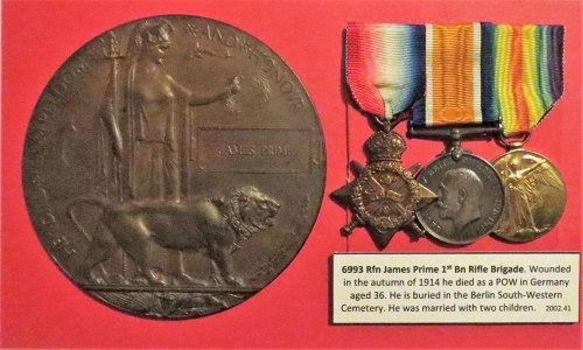
Plaque and medals of James Prime in the
Loughborough Carillon Museum
|
|
|
|
Private 1844 Charles Edgar Pritchard
|
|
1/1st Leicestershire Yeomanry.
Killed in Action 13th May 1915, Aged 22.
Commemorated Ypres Menin Gate panel 5.
|
Charles Edgar Pritchard was born in Woodhouse Eaves in 1893. He was the only surviving son of Charles Leppington Pritchard, joiner and builder, and Elizabeth Ann Pritchard (née Bradshaw) of Maplewell Road, Woodhouse Eaves. Charles Edgar's parents were married in the Barrow on Soar registration area in 1891. The Pritchards had had one other son who died aged one.
In 1911 Charles Edgar assisted his father in his business. In March 1912 he joined the Leicestershire Yeomanry as Private 1844.
The 1/1st Leicestershire Yeomanry was mobilised on 5th August 1914 and billeted in the village of Palgrave, Suffolk, until 1st November 1914. On 2nd November they entrained at Diss with the horses and travelled to Southampton Docks. They sailed for France, arriving at Le Havre the following day, and proceeded to No. 2 Rest Camp. On 4th November they entrained for St. Omer and marched to Esquerdes where they remained for four days to carry out bayonet and entrenching exercises.
On 11th November they marched to Eecke to join the 3rd Cavalry Division and on the following day proceeded via Poperinghe to Bellewaarde Farm on the Hooge Road east of Ypres. Here they joined the 7th Cavalry Brigade and were sent to the support and reserve trenches. On 16th they moved to billets in Ypres where they were heavily shelled. From 17th - 21st November A and C Squadrons were in the advance, support and reserve trenches east of Zillebeeke and B Squadron was in dugouts near the Menin-Ypres road. From 22nd November to 4th December they were at St. Sylvestre near Caestre refitting and exercising while being on duty in General reserve.
On 3rd December they paraded with the 7th Cavalry Brigade for an inspection by His Majesty the King. From 7th -17th December they were based at Oxlaere and then Berthen for drill and entrenching practice while again being in General reserve. On 18th December they moved to an area south of Hondeghem and the Caestre road. Here classes for reserve stretcher bearers and machine gunners took place. On 22nd December they moved to La Brearde where they remained until 2nd February 1915 for training in an advanced guard scheme, hand grenade and entrenching instruction, route marches and inspections.
On 3rd February they were transported by bus to Ypres and marched to Zillebeke where they took over the front line trenches. They spent several days draining and improving the trenches amid enemy sniping. Relieved on 8th February they moved to billets in Ypres as part of the General reserve. On 11th February there was heavy shelling near their billets and on the following day they moved by bus back to La Brearde. Training took place there until 11th April.
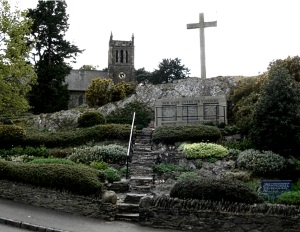
The
War Memorial, Woodhouse Eaves
On 12th April they moved to Renescure and on 23rd April marched via Abeele to Godewaersvelde. On 24th they proceeded to Vlamertinghe before moving at night to Reninghelst. On 25th and 26th April they moved via Poperinghe and Watou to Forge, where they left the horses, and returned to Vlamertinghe. On 27th they were shelled out of their huts and bivouacked in a field. On 28th they moved to Abeele and over the next three days met up with the Brigade at Forge.
In early May they left the horses at Vlamertinghe and marched to Hazebrouck before going by bus to Brielen near Ypres. On 12th May, as dismounted infantry, they took over the trenches north of the railway near Bellewaarde Farm and immediately became involved in the Battle of Frezenberg Ridge (otherwise called the 2nd Battle of Ypres). During this battle on 12th and 13th May the Leicestershire Yeomanry suffered 186 casualties.
Charles Pritchard was killed on 13th May 1915 at the Battle of Frezenberg. He was 22 years old. He is commemorated on the Ypres (Menin Gate) Memorial, Panel 5. He is also remembered on the War Memorial in St. Paul's Churchyard, Woodhouse Eaves, and on the Woodhouse Eaves War Memorial.
|
|
|
|
Second Lieutenant Albert William Howard (Bert) Purnell
|
|
120th Siege Bty, Royal Garrison Artillery.
Died of Wounds 20th November 1917, Aged 24.
Buried Harlebeke New British Cemetery I. C. 16.
|
Albert William Howard Purnell, known to his family as 'Bert', was born on 19th April 1893 in Cappoquin, County Waterford, Ireland. He was the eldest son of Walter Henry Purnell and his wife Alice (née Knowles) who were married in Trowbridge, Wiltshire, in 1892.
Soon after they were married Bert's parents moved to Ireland when his father, who was a mechanical engineer, was appointed to the position of works manager at Wexford Engineering Company, Ltd. Bert's father was later promoted to assistant manager in the same company. The Purnell family remained in Ireland until 1899 when Bert's father became works manager at Messrs. Herbert Morris and Bastert Ltd, makers of lifting machinery, Empress Works, Loughborough. In 1901 the family was living at 41 Queen's Road, Loughborough and Bert's father was now general manager at the Empress Works, being further promoted to a director in 1907. Between 1901 and 1911 the Purnell family moved to 64 Beacon Road and soon afterwards moved again to The Villa, Burton Walks. Bert had two younger brothers Howard and Nelson (known as 'Bruce'); one other sibling died young. The Purnell family were members of the Wood Gate Baptist Church.
On the 21st January 1902, when Bert was eight, he joined Loughborough Grammar School. In December 1907 he was 'Top of class' and his work was 'excellent'. He left the Grammar School after seven years, on the 30th July 1909, when he was sixteen and in the sixth form and went into the engineering department at the Empress Works. After staying there a short time he went to Germany to learn German and remained there four years, studying engineering at the State University at Köthen (Anhalt). He took his diploma in Engineering at the university and achieved honours in all subjects. He then returned to England in 1913 and rejoined his father at the Empress Works.
Bert joined the Army soon after the outbreak of war, and was posted to the Army Service Corps as Private M2/018484 in mechanical transport. Mechanical Transport Companies were not under orders of a Division although some were attached to a given Division and worked very closely with it. The British Government had requisitioned over 1000 civilian lorries and over 300 buses at the outbreak of war and hurriedly moved them across the Channel. These were only a temporary stopgap - although some vehicles such as London buses remained in service throughout the war - and thousands more vehicles were ordered from manufacturers in Britain and increasingly the USA. Bert arrived in France on 19th December 1914 and would have had a role as a driver or a mechanic or both.
Bert returned to England in 1917 in order to take a cadet course at Bournemouth and on 19th August 1917 gained his commission, being appointed a 2nd Lieutenant in the Royal Garrison Artillery.
On 13th October 1917 Bert joined the 120th Siege Battery of the Royal Garrison Artillery in the field at Rifle Farm and Lake Farm in the Menin Road area of the Ypres Salient. The battery was in action nearly every day and on 17th October succeeded in bringing down a hostile plane. On 18th October fifteen Gotha aeroplanes, heavy bombers used by the Luftstreitkräfte (Imperial German Air Service), dropped bombs on the Menin Road, on 21st October hostile fire destroyed thirty cartridges, and on 26th October bombs fell on Rifle Farm and Lake Farm was hit with gas shells.
On 13th November Bert, accompanied by two signallers, went to an observation post close to the front and all three men were subsequently reported as missing. Bert had been wounded and taken as a Prisoner of War by the Germans. He died on 20th November 1917, aged 24, in a German evacuation hospital at Winkel-Saint-Eloi, Flanders.
Bert was initially buried in Winkel St. Eloi German Cemetery of Honour but his body was later identified from the GB list, clothing and cross and moved on 19th November 1923 to Harlebeke New British Cemetery, Grave I. C. 16. The inscription on his headstone reads: 'He was the soul of honour'.
Bert is remembered on the Wood Gate Baptist Church Memorial, Loughborough, on Loughborough Grammar School's Roll of Honour and on the Carillon. One of the bells in the Carillon also bears the inscription 'The Gift of the Mother of Lieut. A. W. H. Purnell'. Loughborough Hospital also named a ward after him - the Purnell Ward.
At the unveiling and dedication ceremony of the Carillon War Memorial on 22nd July 1923 Bert's father, who was now Vice-Chairman of William Morris Ltd, a JP and also a governor of Loughborough College and of Loughborough Hospital, was chosen to hand responsibility for the completed memorial to the Mayor and Corporation of Loughborough.
Bert's brother Howard joined the Royal Air Force in 1918. He survived the war.
|
|
|
|
Gunner 149601 John Herbert Putt
|
|
D Bty. 86th Bde, Royal Field Artillery.
Killed in Action 29th April 1918, Aged 24.
Buried Blangy-Tronville Communal Cemetery Somme 20.
|
John Herbert Putt was born at Canaan, Rempstone, Nottinghamshire, in 1894. He was the son of Joseph Putt and his first wife Harriet (née Tipple) who were married on 23rd January 1883 at St. Margaret's Church, Drayton, Norfolk. Between 1883 and 1891 John's father was a railway porter in Great Witchingham, Norfolk, but by 1901 he had become a bricklayer's labourer in Loughborough, and in 1911 he was a labourer for Loughborough Borough Council. When the Putt family came to Loughborough they lived firstly at 29 Rosebery Street and then at 127 Leopold Street. John had three brothers James, Joseph and George, and three sisters Alice, Harriet and Gertrude. Alice, however, died in 1917 at the age of 25.
When John was eleven his mother died and in 1906 his father married a widow, Mary Taylor (née Harris) who had seven children, of whom at least three had already left home. John now had four step-brothers Arthur, George, Ernest and Samuel Taylor, and three step-sisters Ellen, Elsie and Lillian Taylor. In 1908, however, John's stepmother applied to the Loughborough Petty Sessions Court for a separation order from his father. She testified that John's father used foul and abusive language towards her, had threatened to murder her on several occasions and had assaulted her. The separation order was granted.
John's father and step-mother appear to be back together in 1911 but in 1914 they were living apart again, Joseph Putt being in Wellington Street and Mary Putt in Paget Street. In August 1914 Joseph Putt was once again summoned to court for trying to force an entrance into his wife's home in Paget Street, breaking a window with a bucket and threatening to put a bullet through her head. When the summons was delivered to Joseph Putt the police found him packing up to leave and Joseph did not appear in court. The Bench issued a warrant for his arrest if he ever came back to town. Joseph died in the Basford area in 1924.
When John left school he became a labourer. He subsequently worked as a dairyman for Mr. Tom Sleigh, farmer and dairyman of Forest Road, Loughborough. He enlisted in May 1916 and joined D Battery of the 86th (Howitzer) Brigade, Royal Field Artillery as Gunner 149601. He would then have been sent to one of the Artillery training depots. John's service record has not survived and as the war diary of the 86th Brigade does not record the occasions on which the brigade received batches of ordinary rank reinforcements it is difficult to determine when John might have joined the brigade on the Western Front. He is likely, however, to have been with the 86th Brigade by January 1917 at the latest.
On 1st January 1917 the 86th Brigade left Doullens and marched via Amplier to Hébuterne. Close to Hébuterne they improved gun positions and registered the guns. From 9th-15th January the brigade carried out successful operations before moving into reserve at Sailly-au-Bois for reorganisation. The brigade returned to Hébuterne towards the end of the month. In February the brigade was ordered to move to selected positions south-west of Serre. From here, on 27th February, the brigade engaged all targets from dawn to dusk and carried out steady firing at points north-east of Pusieux throughout the night. On the following two days and intervening night the brigade continued with steady fire.
In early March the brigade was firing on selected points south of Bucquoy and north-west of Pusieux and, using the Howitzers, carried out wire cutting near Arnim and Bucquoy. When the enemy evacuated Bucquoy, Achiet-le-Grand and several other villages the brigade was transferred to Beauval and ordered to prepare positions just north of Arras. From 4th-7th April, after a preliminary bombardment, the brigade began cutting the German front line wire.
On 9th April, the first day of the Battle of Arras, the guns moved forward as the infantry consolidated a new front line. By 15th April the enemy had retreated to the Gavrelle-Oppy line and the brigade moved forward again. For the remainder of April the brigade was continuously in action wire-cutting, bombarding Gavrelle and covering all approaches to Gavrelle with intermittent fire. Casualties in the brigade numbered 47.
For the first fortnight of May the brigade was employed digging new positions near Athies and in action at the front at Roeux. After five days rest at Hermin and Guarbecque the brigade was transferred to the Ypres Salient, with headquarters at Dickebusch, a move which was made extremely difficult by enemy shelling of roads in the Ypres area. After setting up new positions the brigade began its usual routine of wire cutting, regular bombardment and night firing on enemy roads, tracks and communication trenches.
On 7th June the Battle of Messines began and for the next ten days the brigade was bombarding the enemy in the day and issuing harassing fire at night. On 20th June the brigade moved to the other side of Reninghelst, between Renin and Abeele. From 21st June-9th July the brigade was cleaning up, resting and training (riding and driving drill, gun drill, signalling schemes) as well as participating in sports.
On 10th July the brigade began preparing positions north of the Ypres-Comines Canal. D Battery went into action defending the line on the night of the 13th, the other batteries joining on the next day. Between the 23rd July and 2nd August, in the opening stages of the Passchendaele Offensive, the brigade issued a number of intense bombardments as well as harassing night fire and was shelled by the enemy in return. Withdrawn to the wagon lines on 3rd August the brigade then moved up to the Ypres Ramparts where the same firing patterns continued until 18th November. From 1st-18th December the brigade was resting at Watou before returning to the Ramparts at Ypres.
On New Year's Day 1918 the brigade was at the front just south of Poelcappelle as the line gradually moved forward. On 8th February the brigade began entraining at Hopoutre for Amiens and proceeded via Longueau to Hamelet and Vaire where they rested until 2nd March. The brigade then went into reserve and marched to the wagon lines at Buire. Supplies of ammunition were taken to new positions and the guns calibrated at Peronne.
On 21st March, the first day of the German Spring Offensive, the 86th Brigade in the wagon lines was bombarded by the enemy, causing heavy casualties, and was ordered to withdraw to another position. The withdrawal continued over the next few days. One gun was lost and there were further casualties among the men and horses. The remaining guns nevertheless kept up harassing fire on the enemy. At one point the brigade was covering the bridge crossing at Brie, at another the canal from Eterpigny to Chapelette. After the enemy gained a footing on the high ground above Villers Charbonnel the brigade was ordered to retire to west of Assevillers but to continue with day and night fire. On 28th March, when the enemy broke through west of Harbonniers, the brigade was moved to Caix and then Beaucourt. As the enemy continued to advance in large numbers the brigade was called into action again. After they ran out of ammunition they were ordered to retire across the river at Moreuil and rendezvous at Rouvrel, but at Rouvrel they were heavily engaged by aeroplanes and also shelled. The situation after this became confused as the battle fluctuated and the batteries were moved around to new positions until they were relieved on the night of the 7th/8th April. Casualties numbered 113 men and 95 horses.
Between 8th and 24th April the brigade was at rest at Yonval before moving to St. Jean on 24th. From here one section of each battery went into action near Villers Bretonneux.
John died, aged 24, on 29th April 1918 when an enemy shell burst on the building where several men were billeted. John and another soldier were killed instantly, while others were wounded. John's Commanding Officer wrote to his sisters as follows: 'He had done such splendid work out here as a driver, always brave and cool in time of danger. He was a gallant soldier'. His Corporal wrote: 'He was very willing and highly respected by all officers and men of the Battery'.
John was buried in Blangy-Tronville Communal Cemetery, Somme, Grave 20.
John's brother James served with the 1/5th Battalion of the Leicestershire Regiment and was awarded the Military Medal. He survived the war. His brother George joined the Leicestershire Regiment in 1921.
|
|
|
|
|





.jpg)


